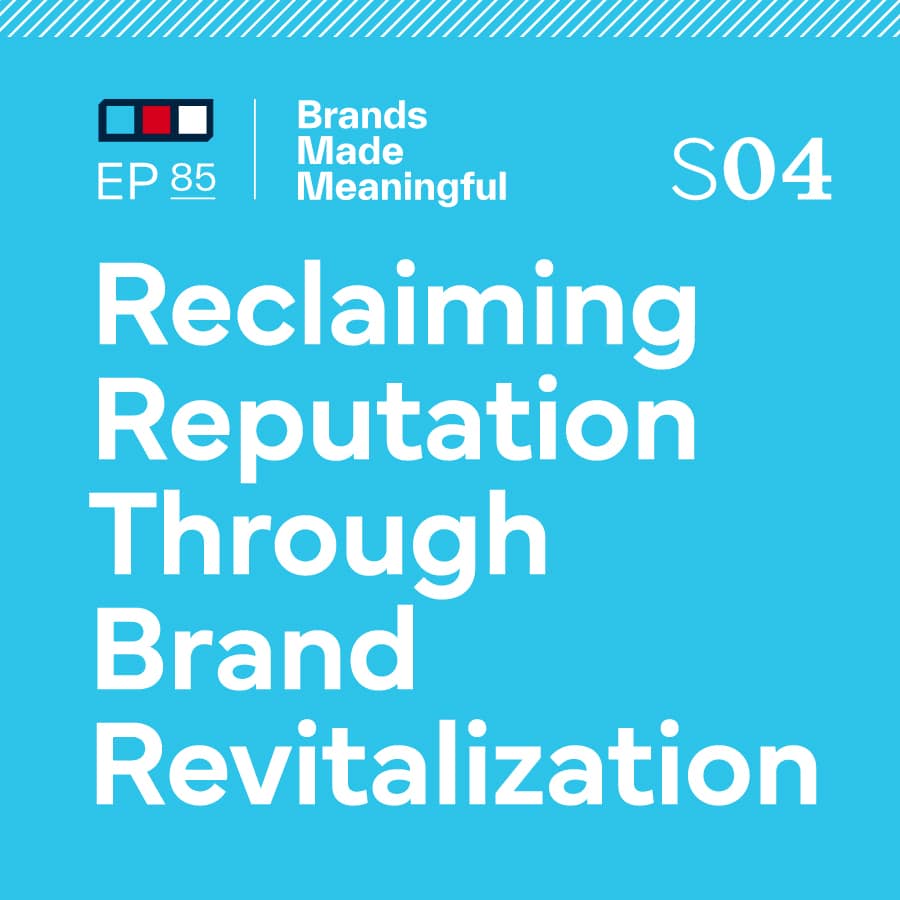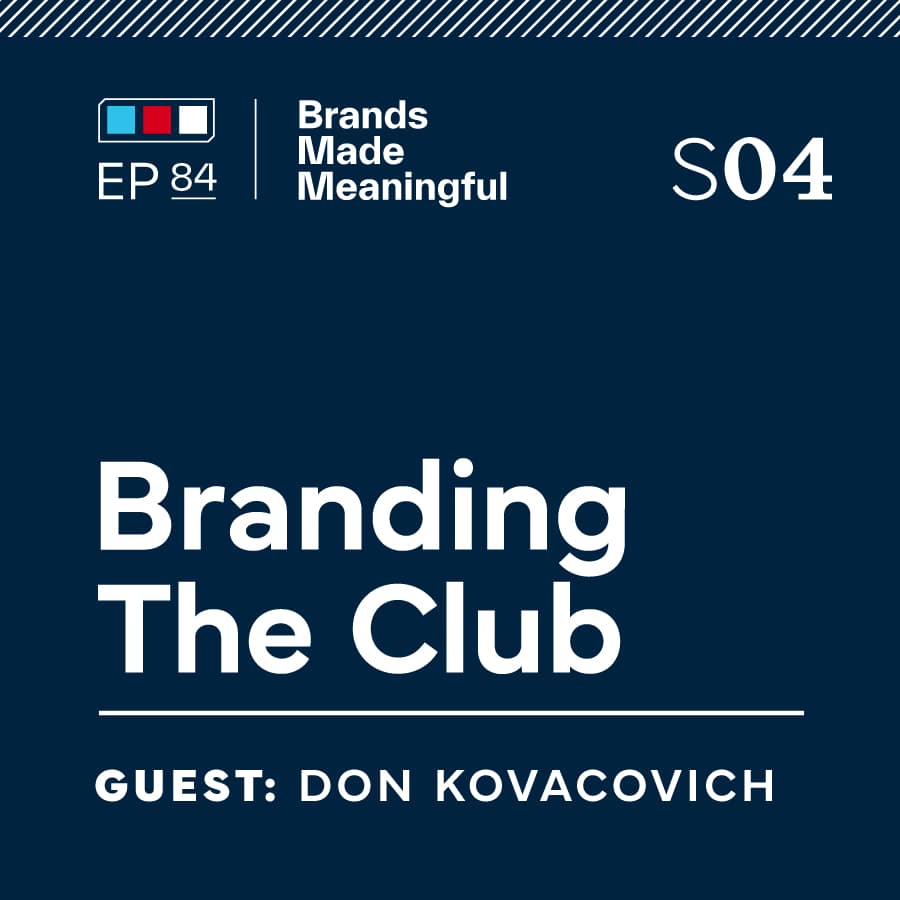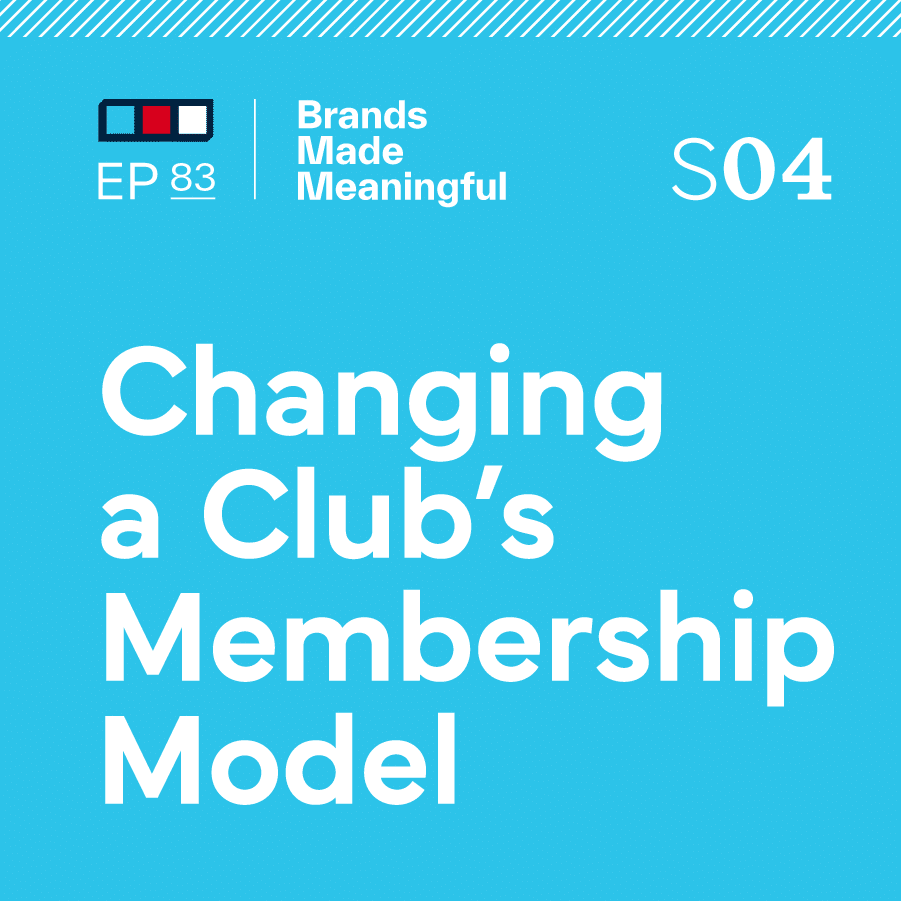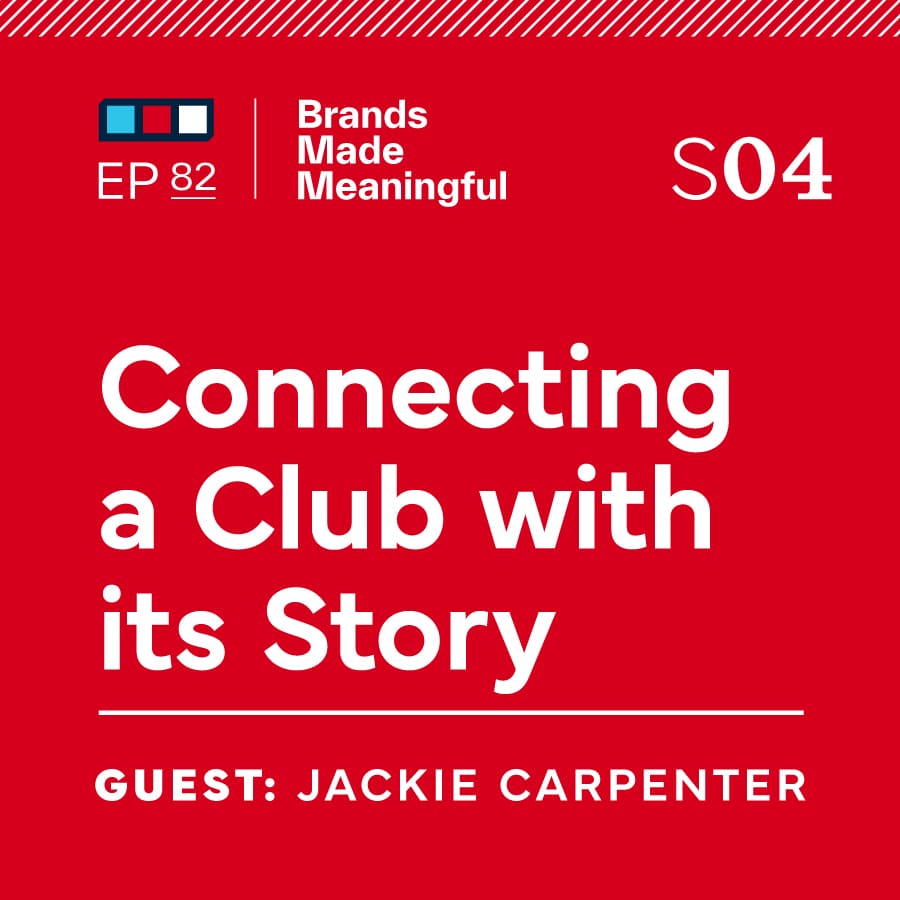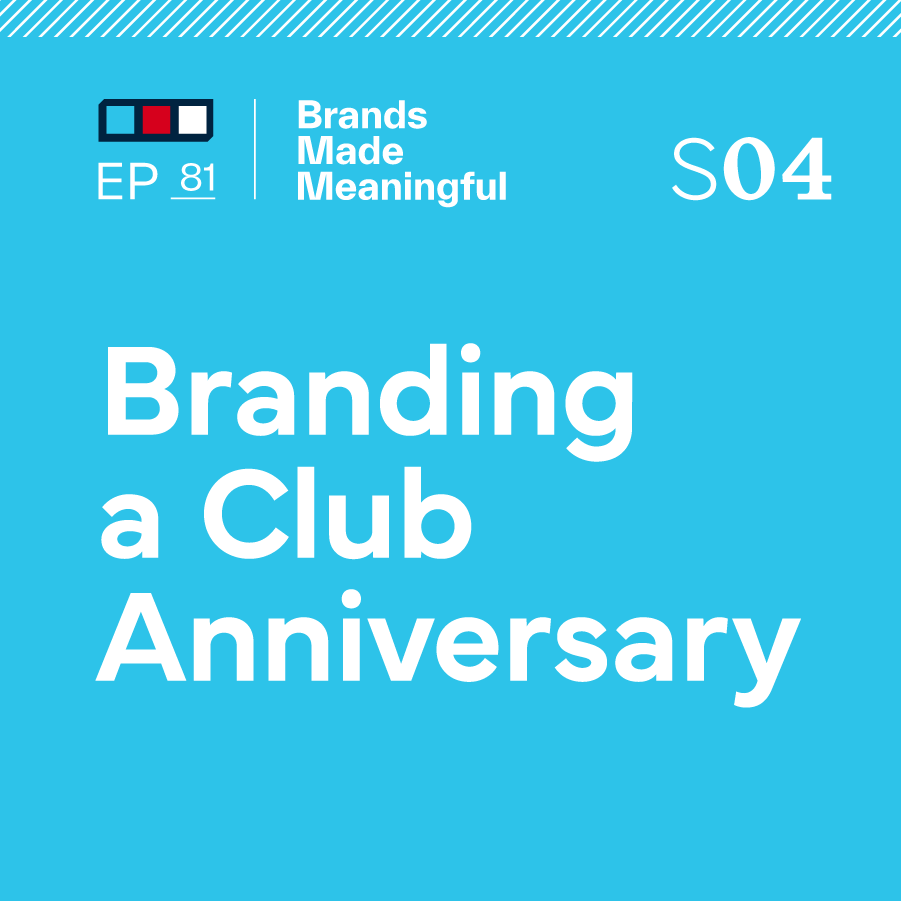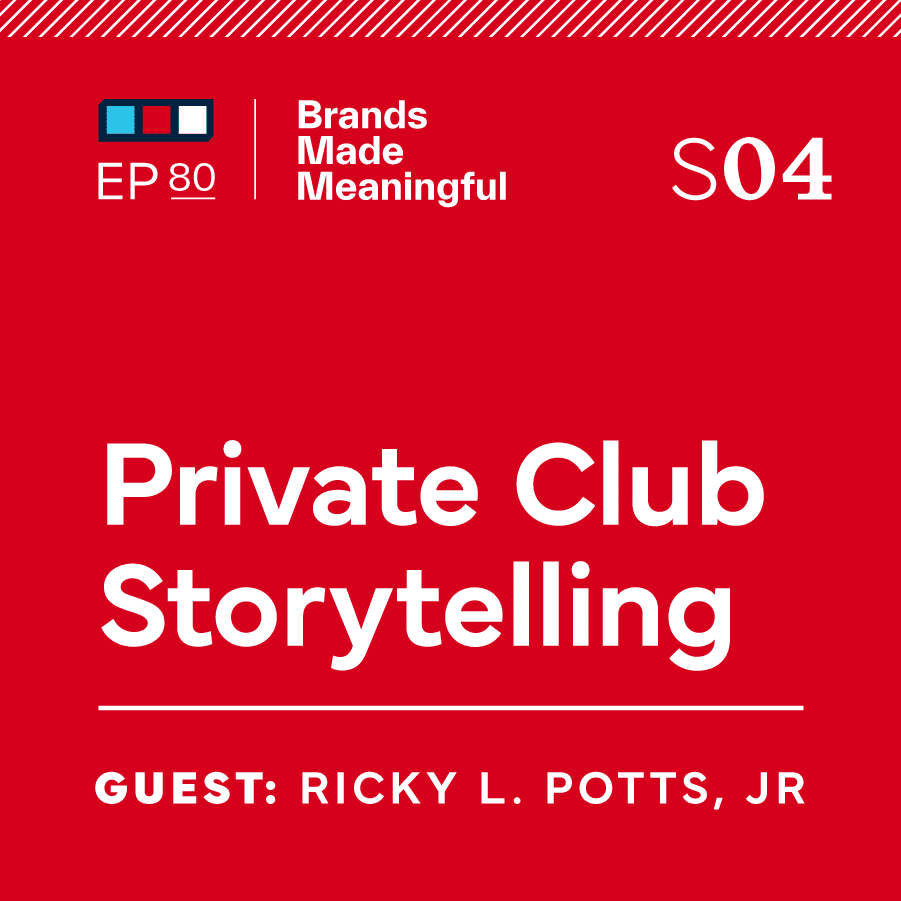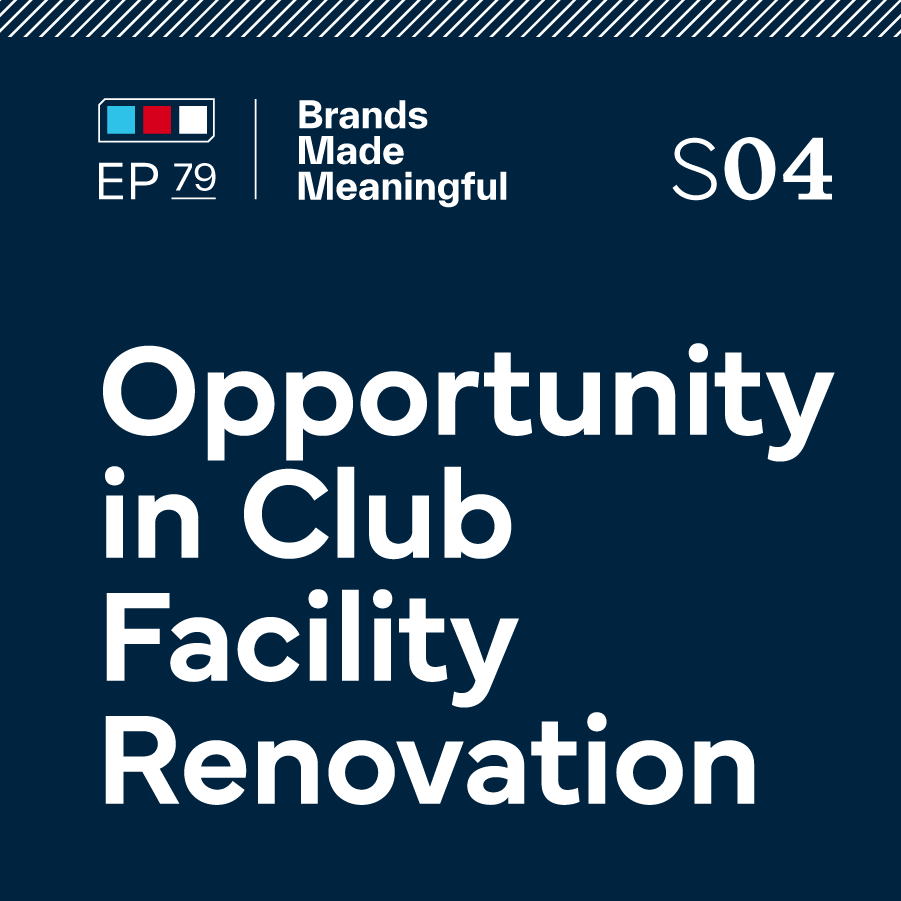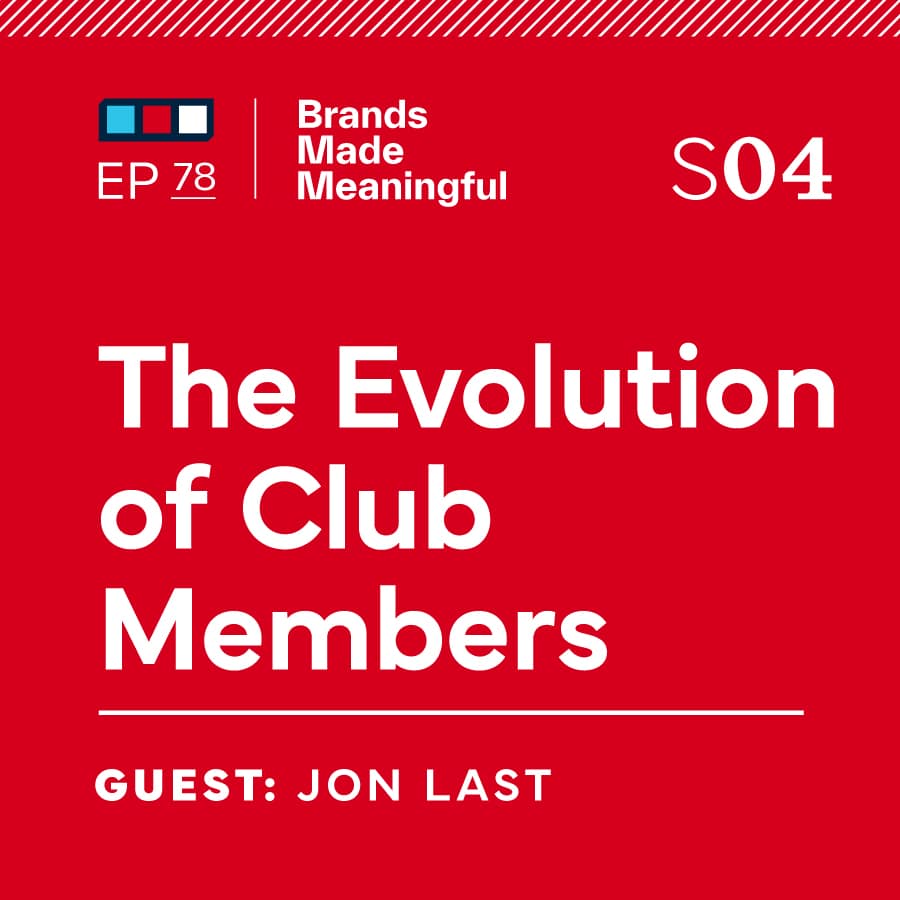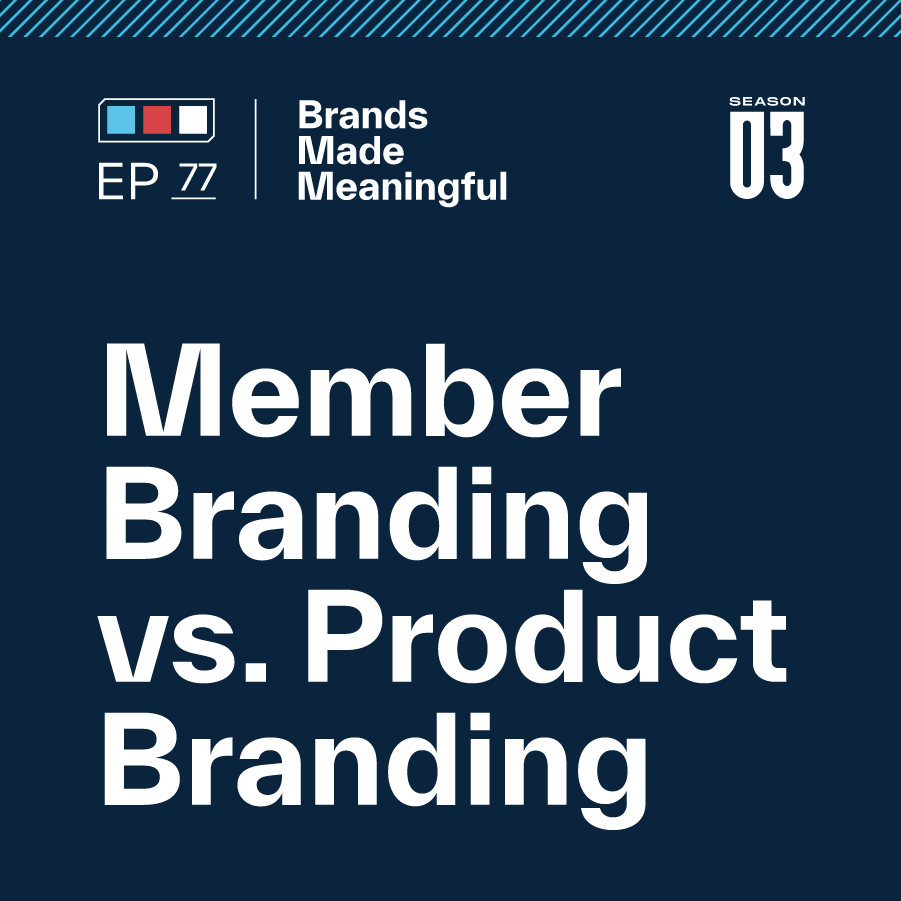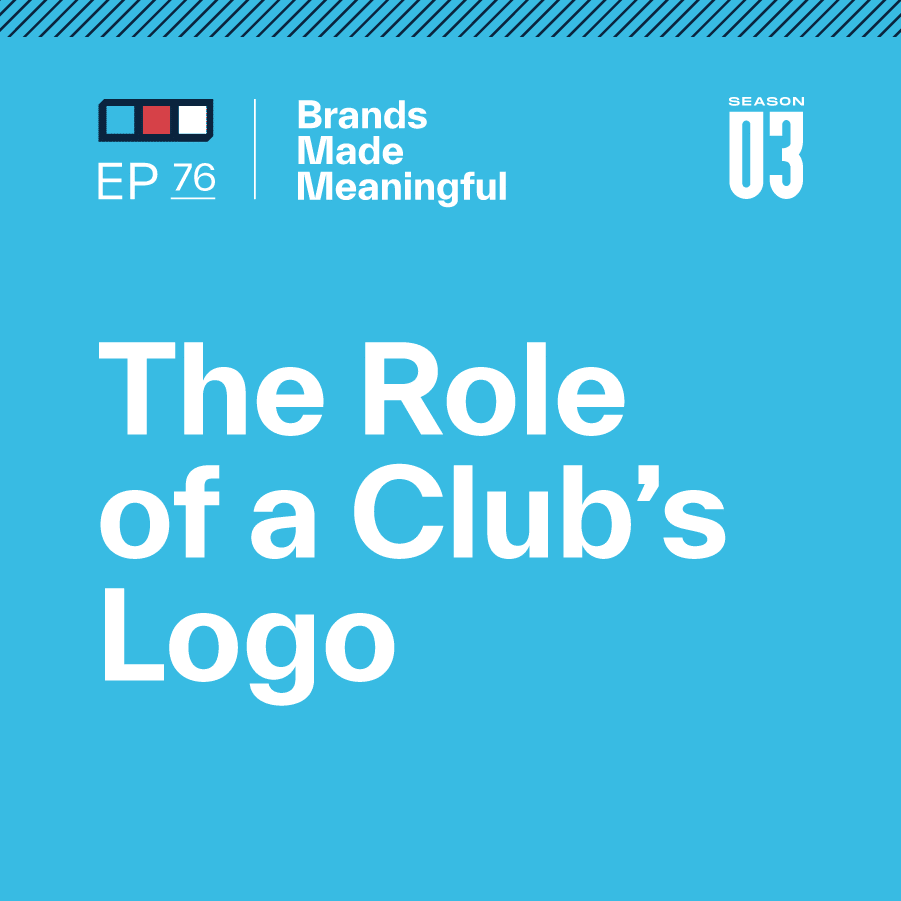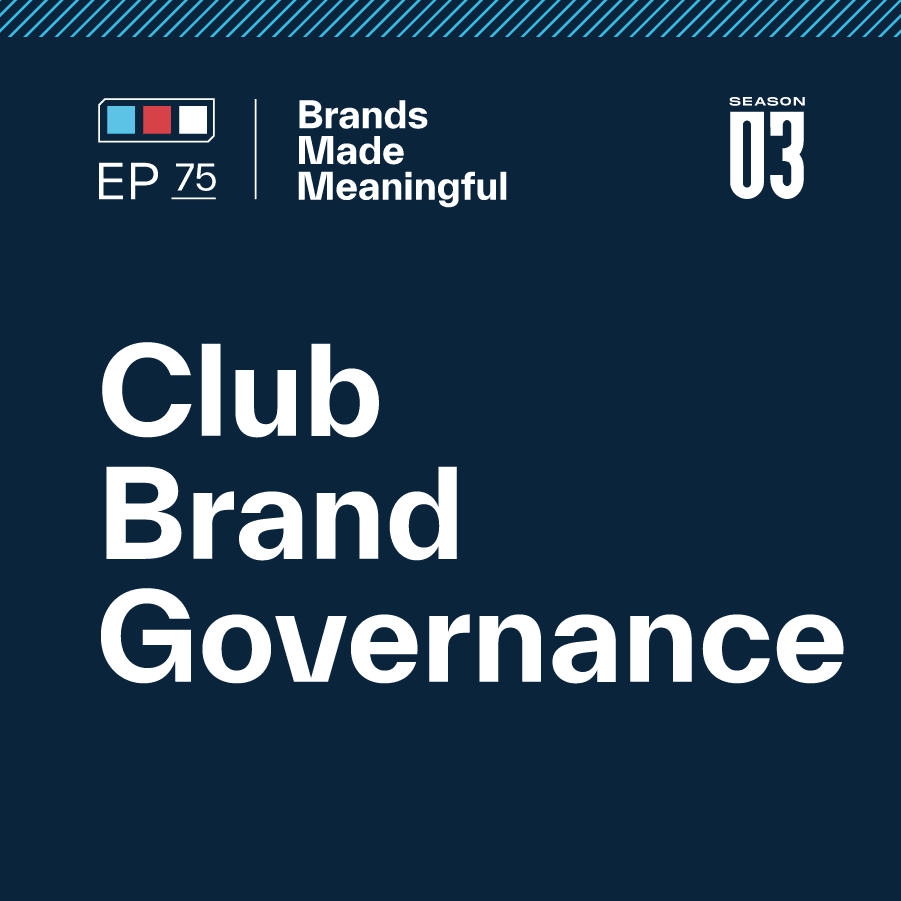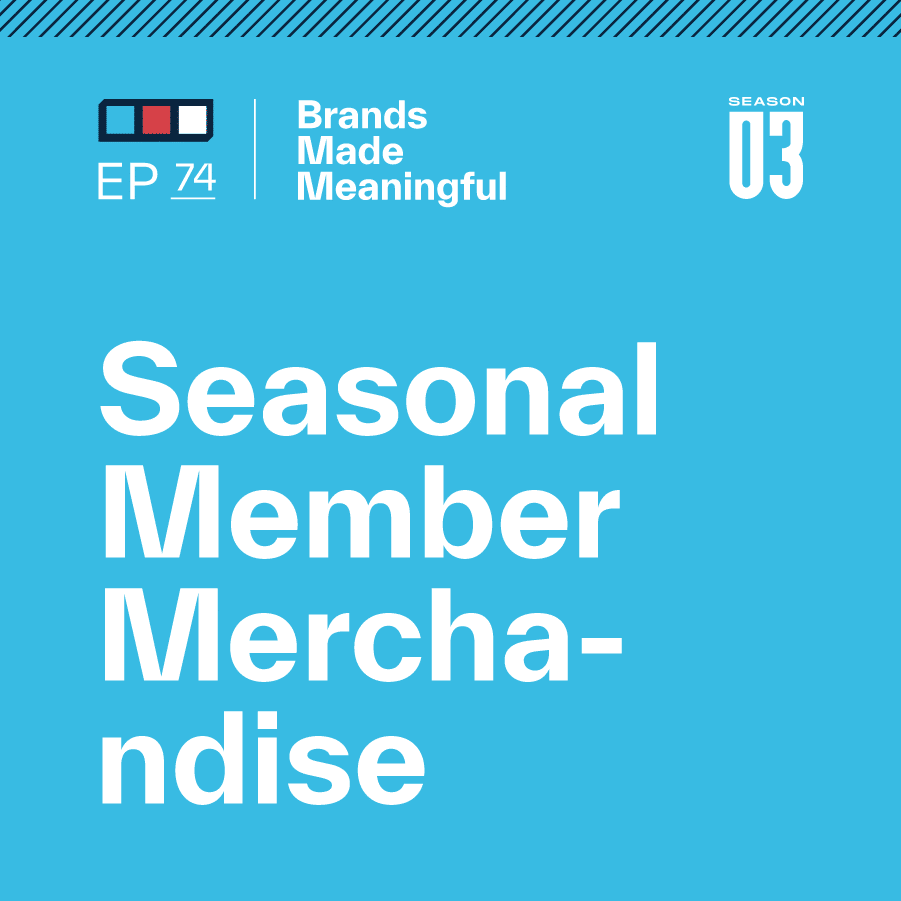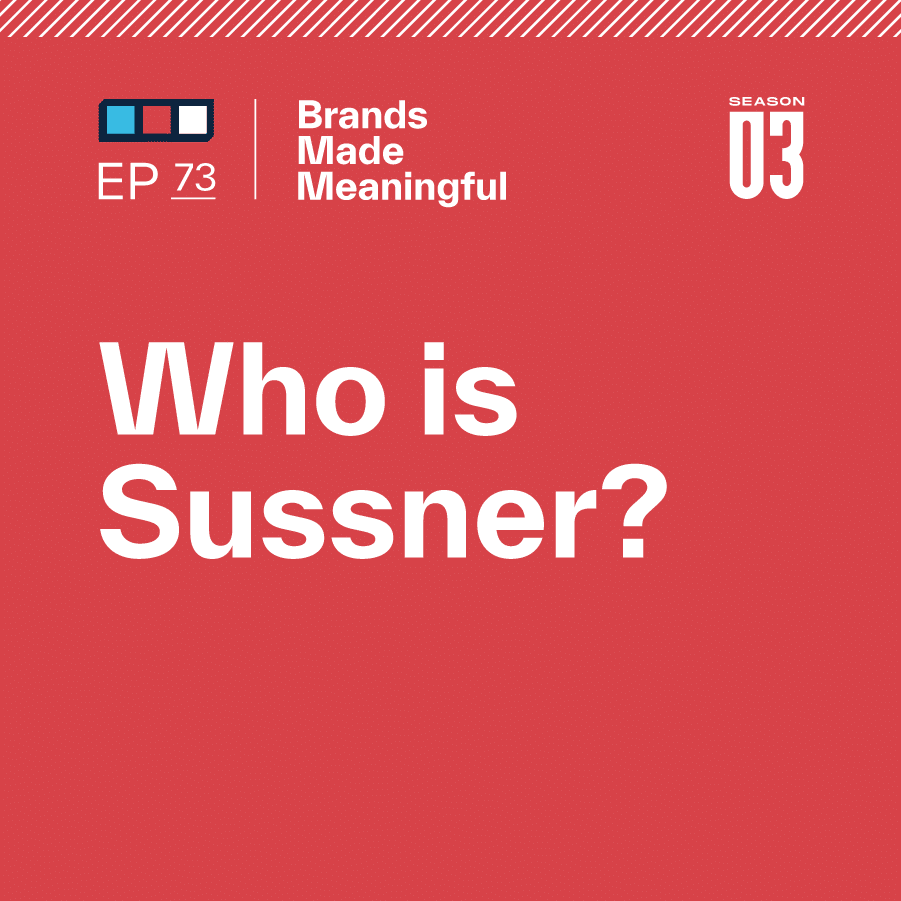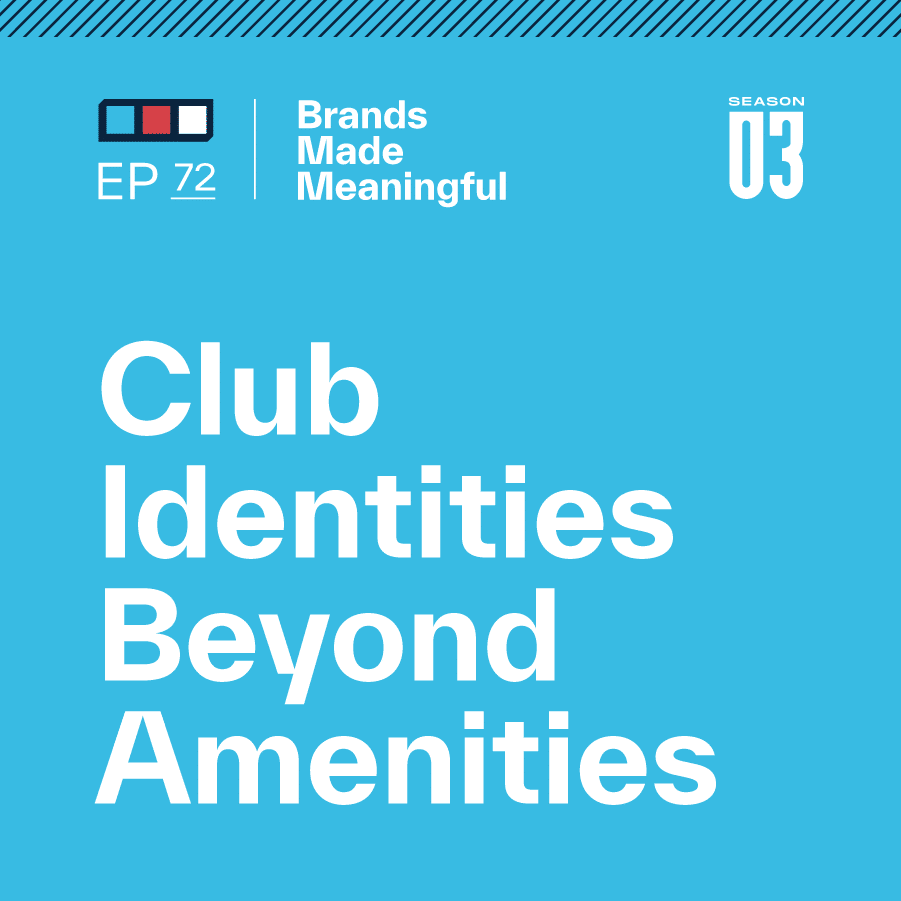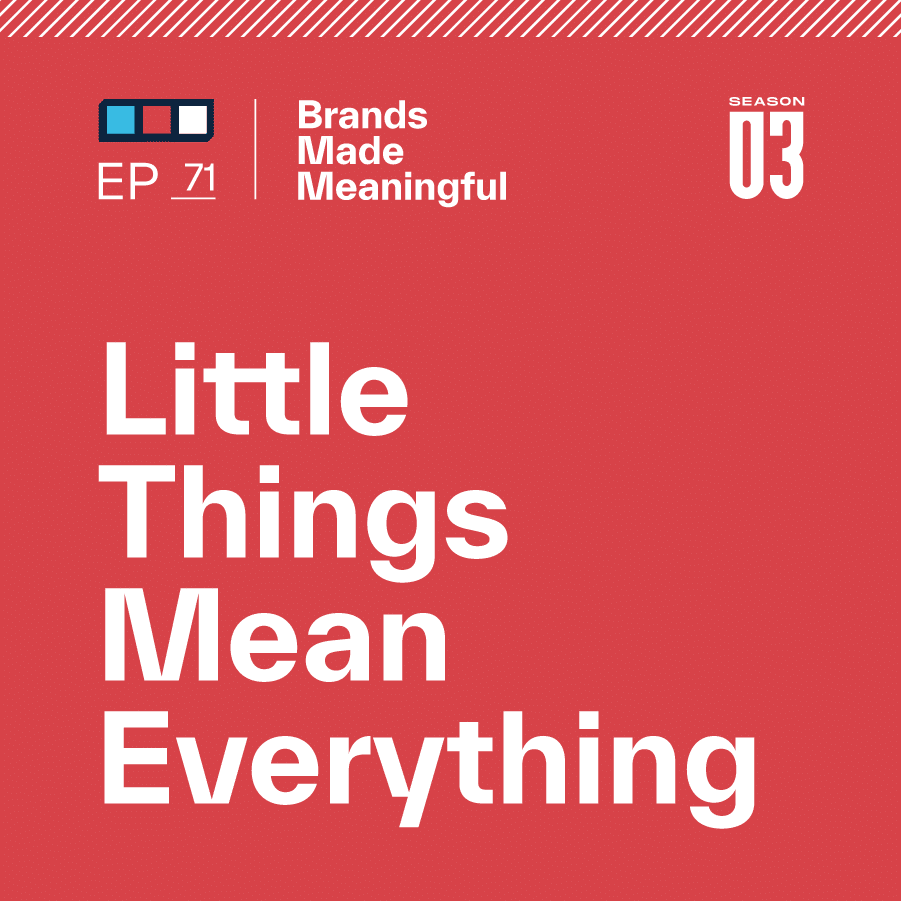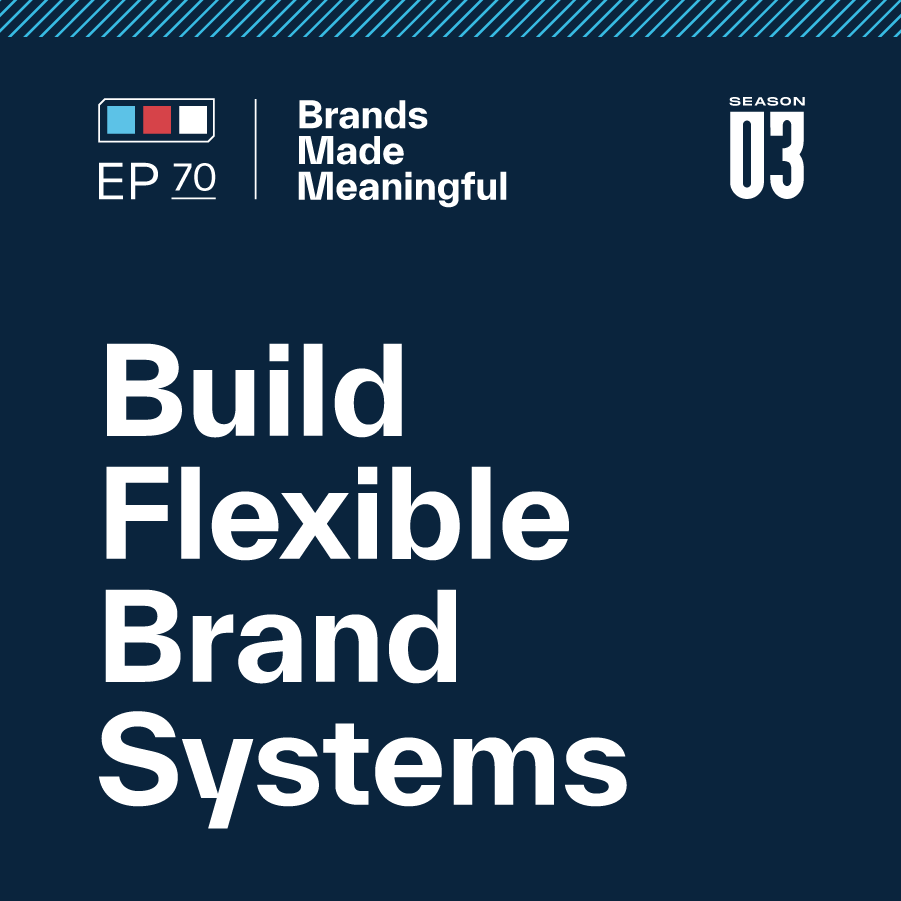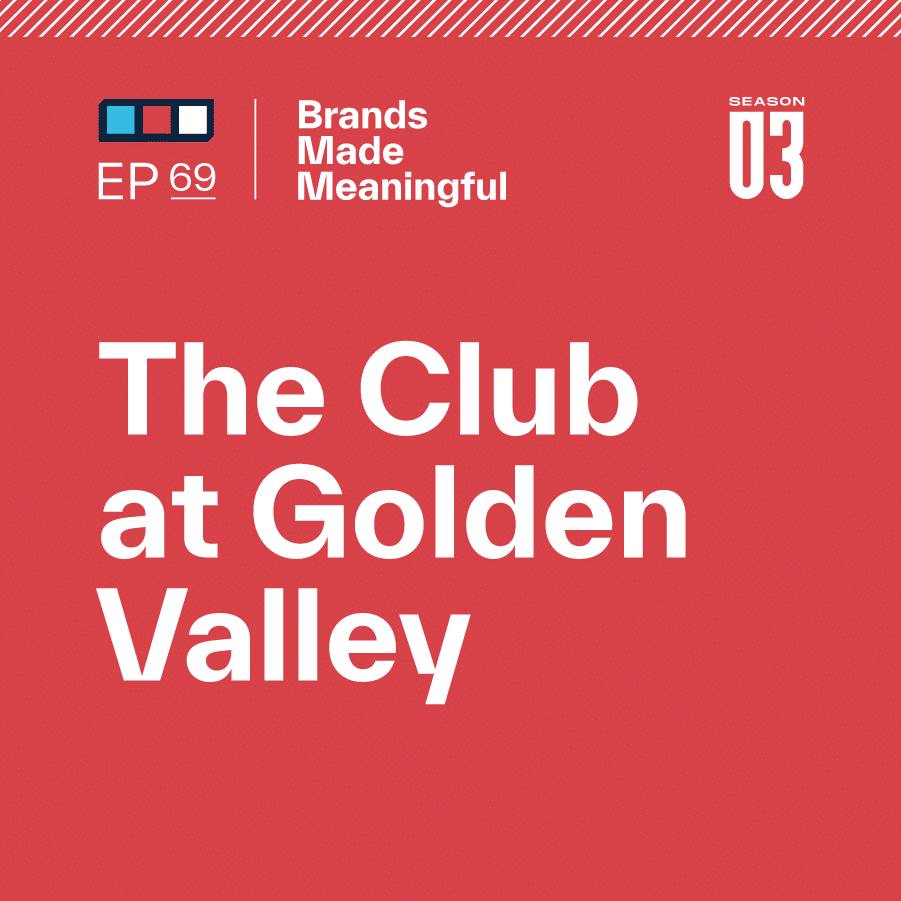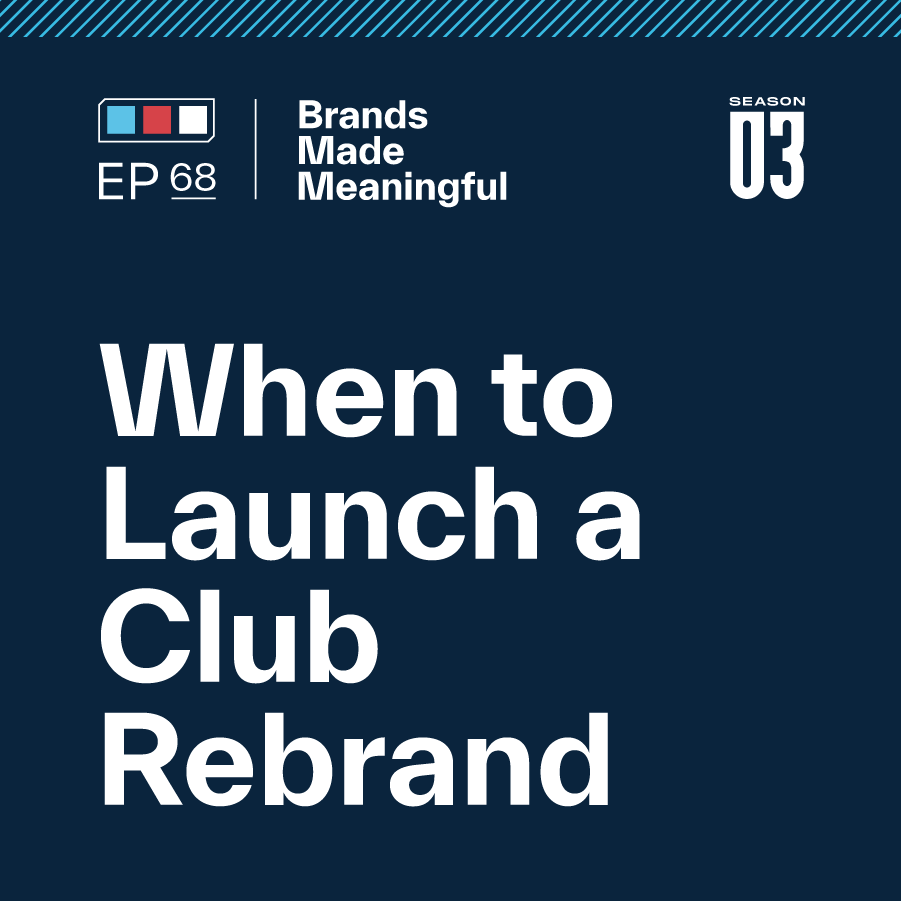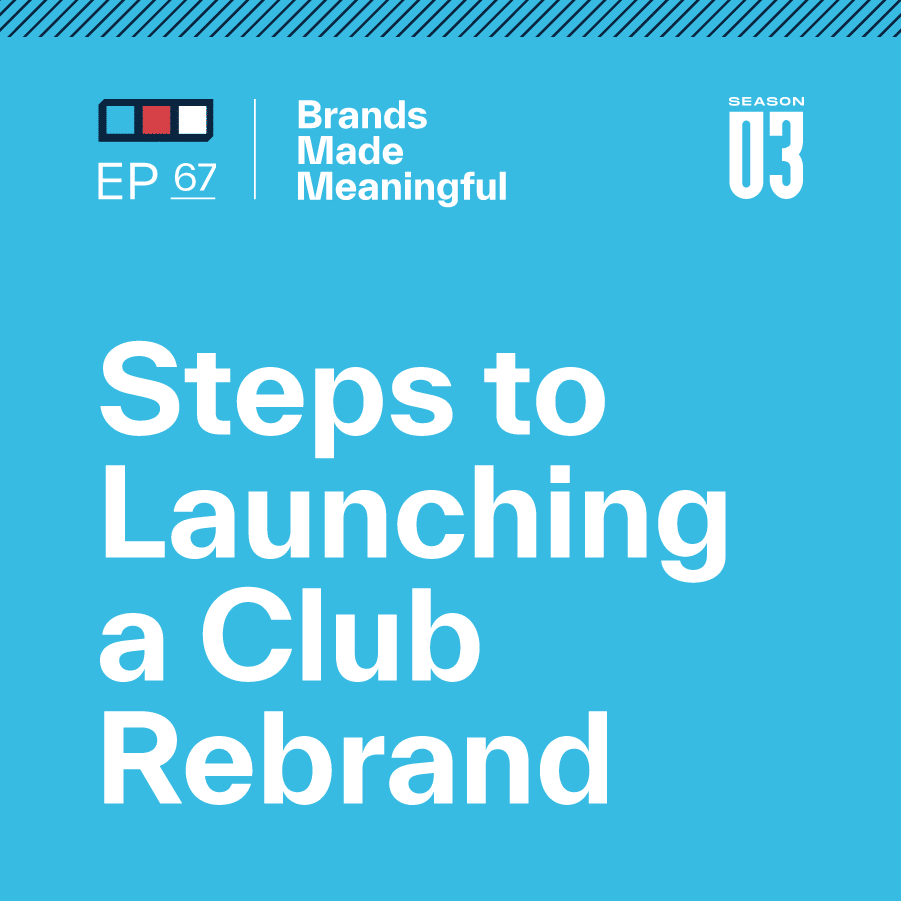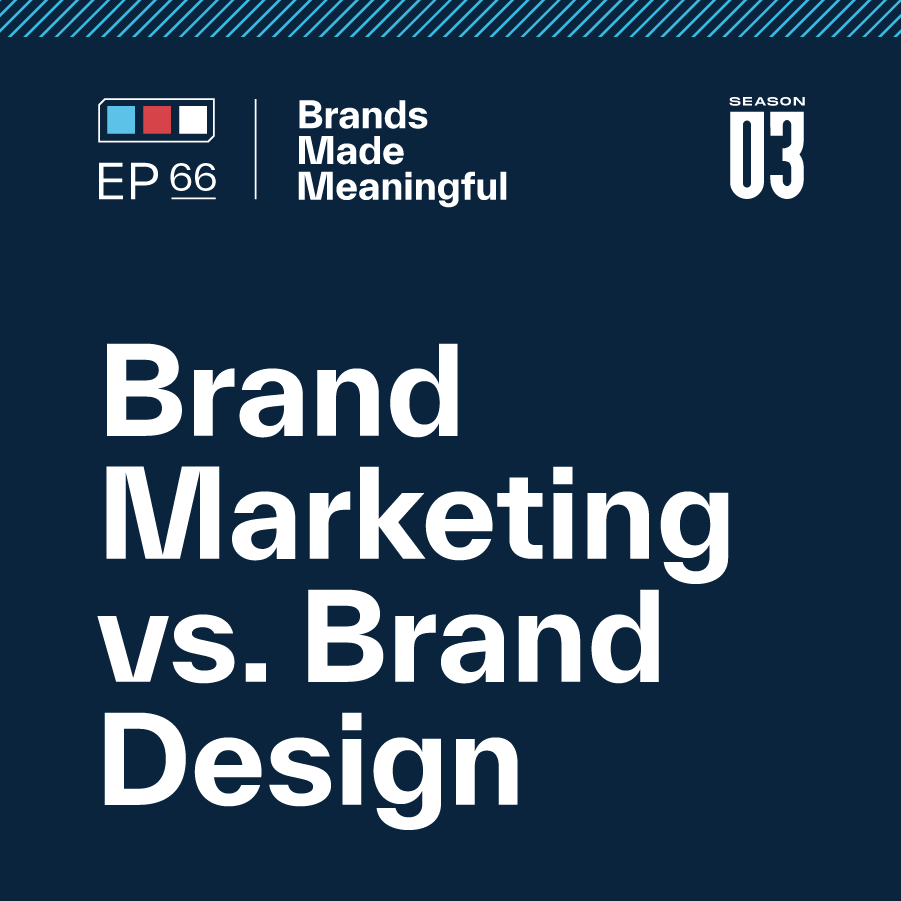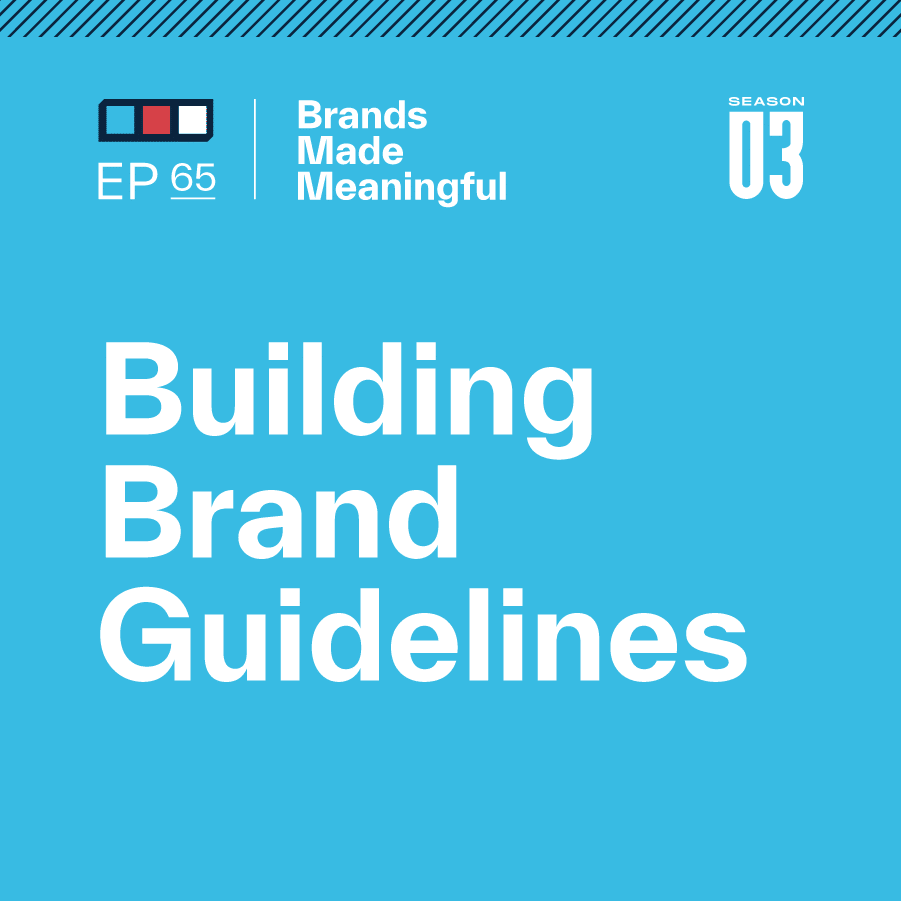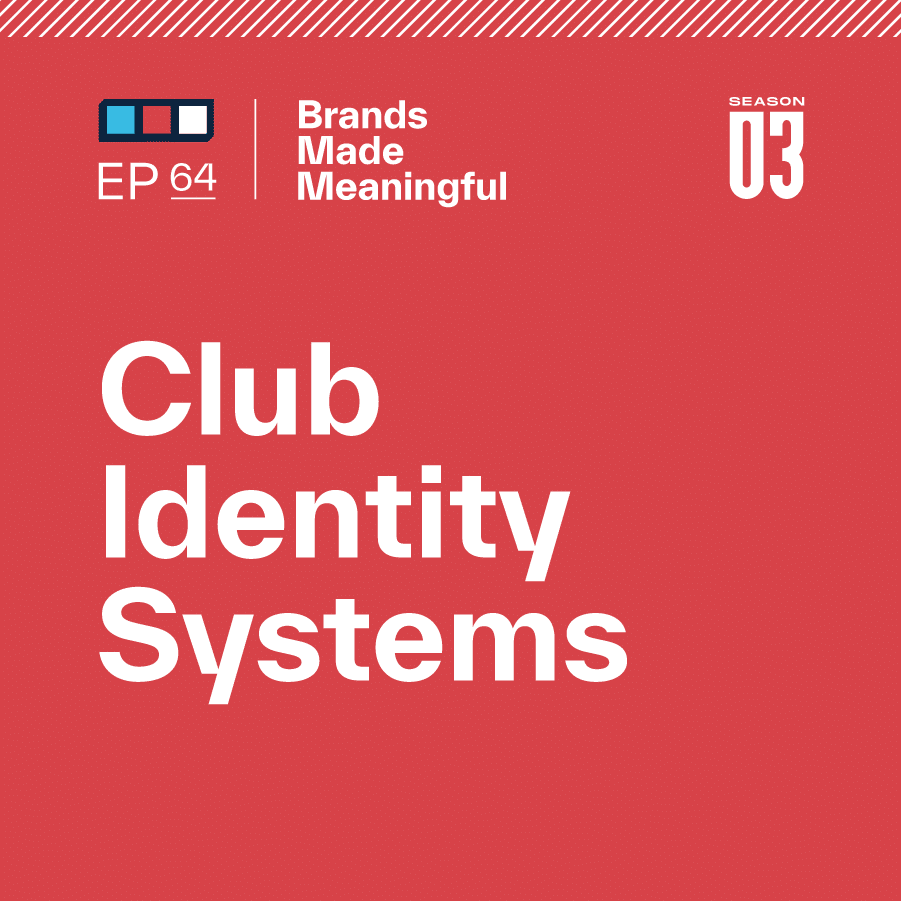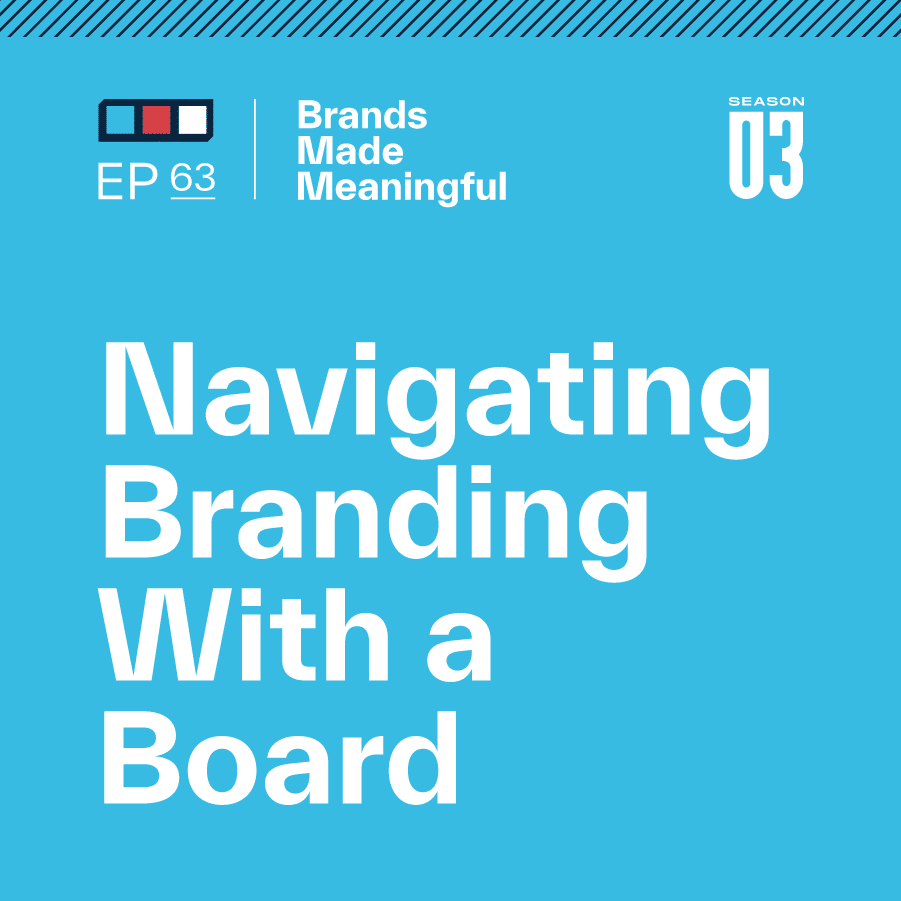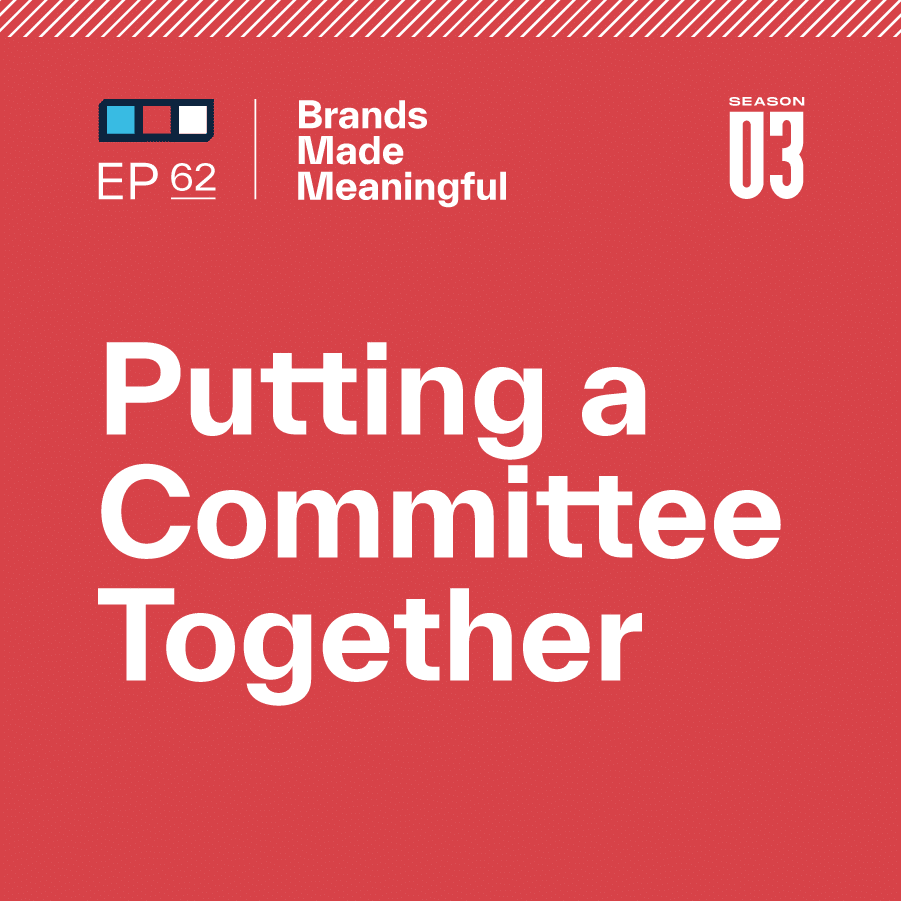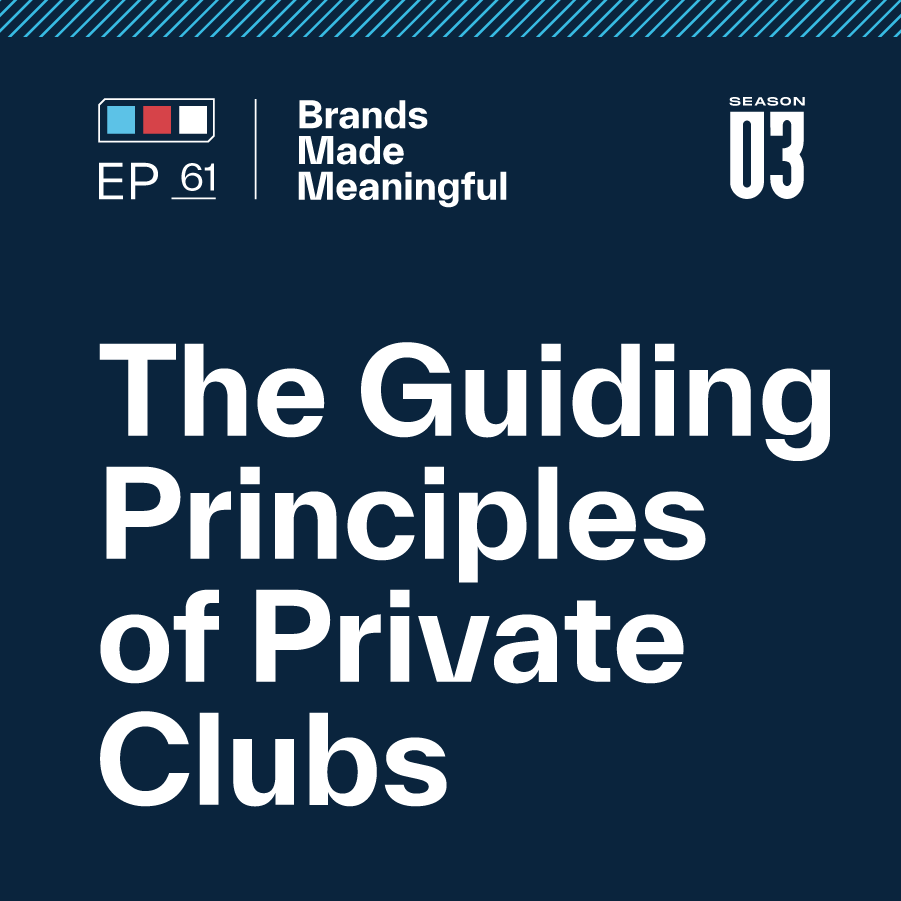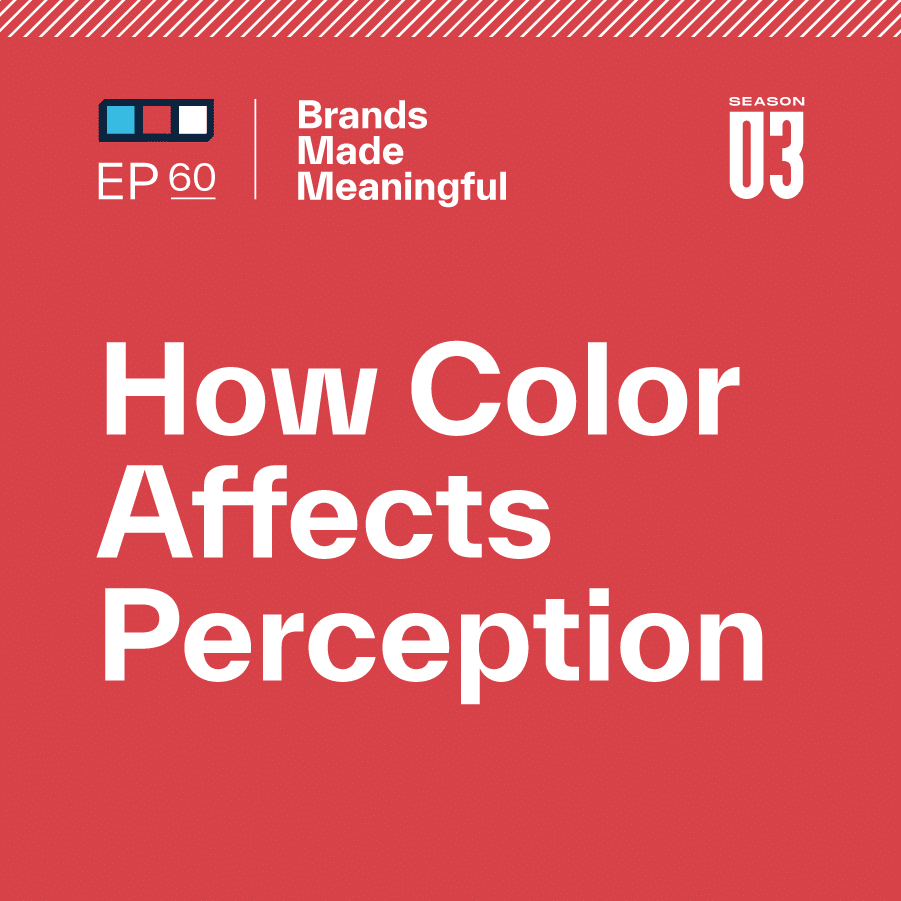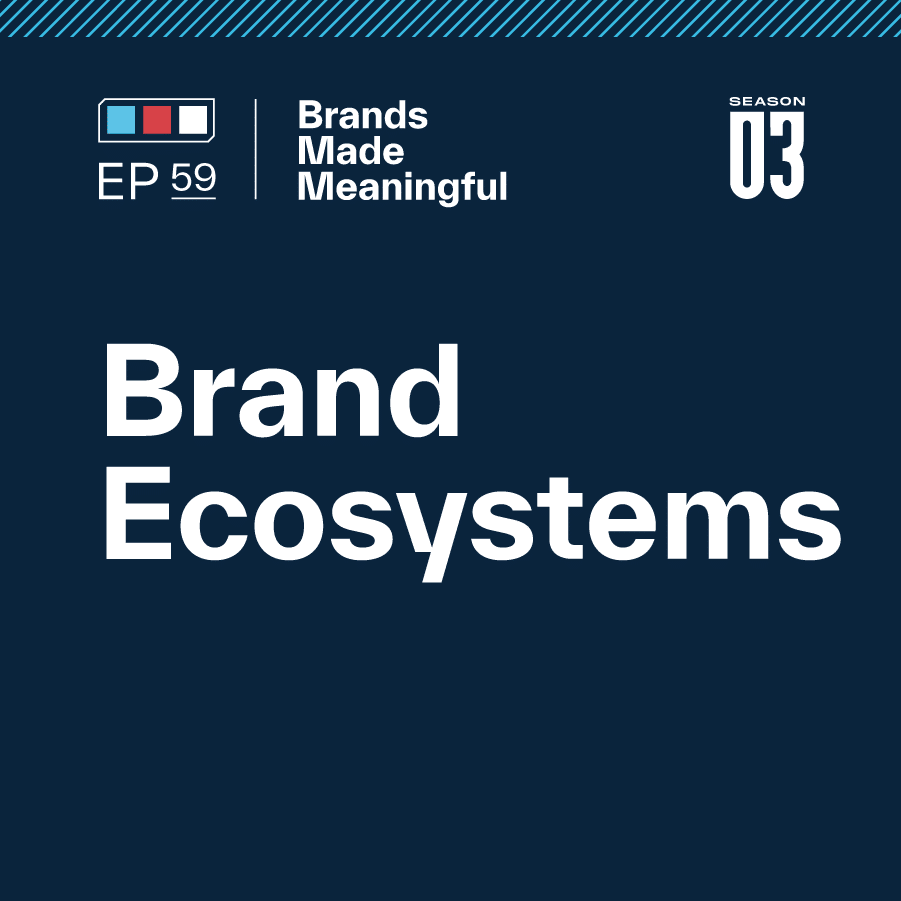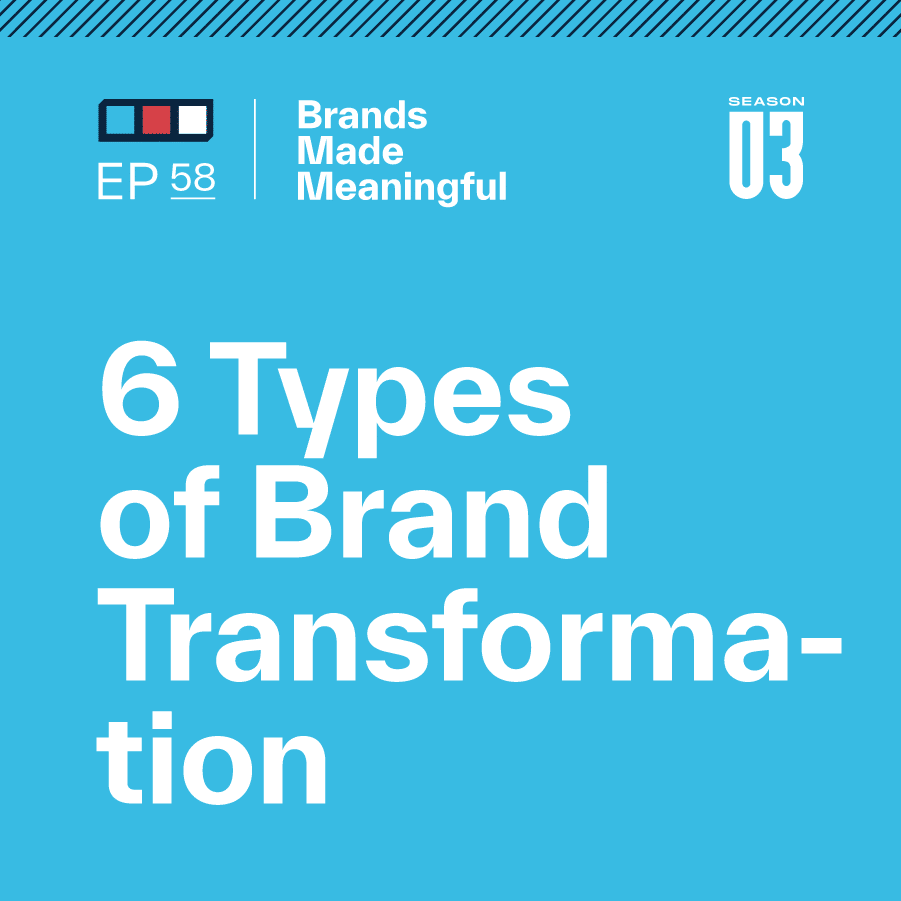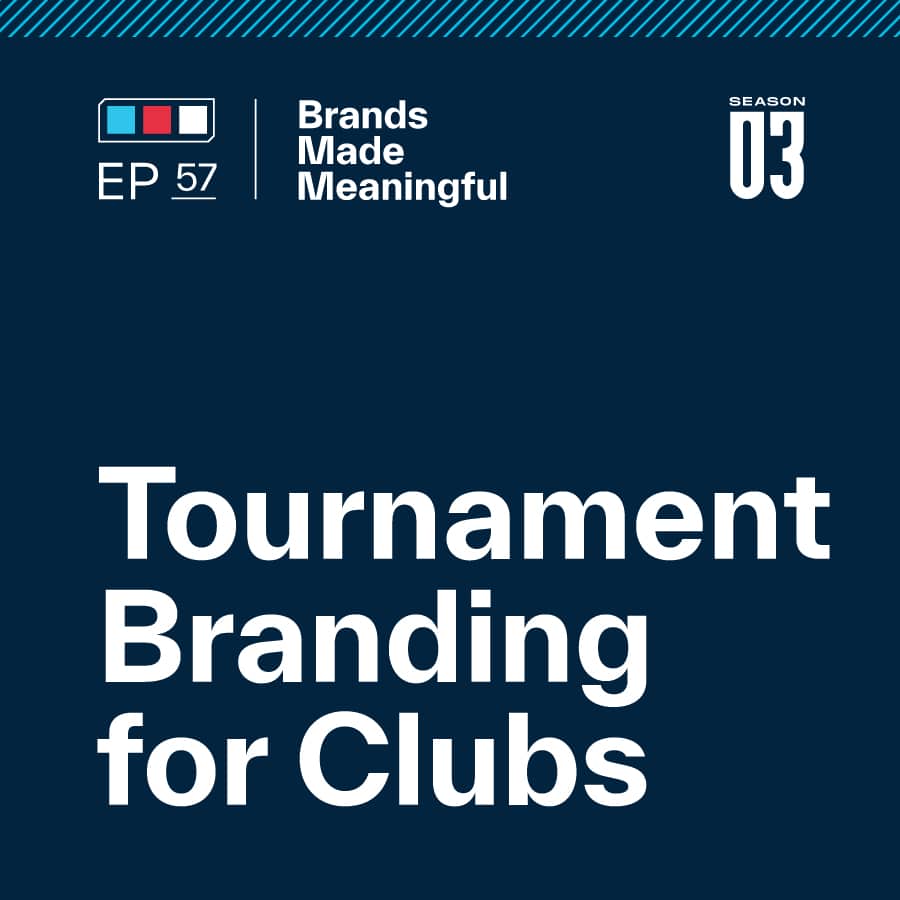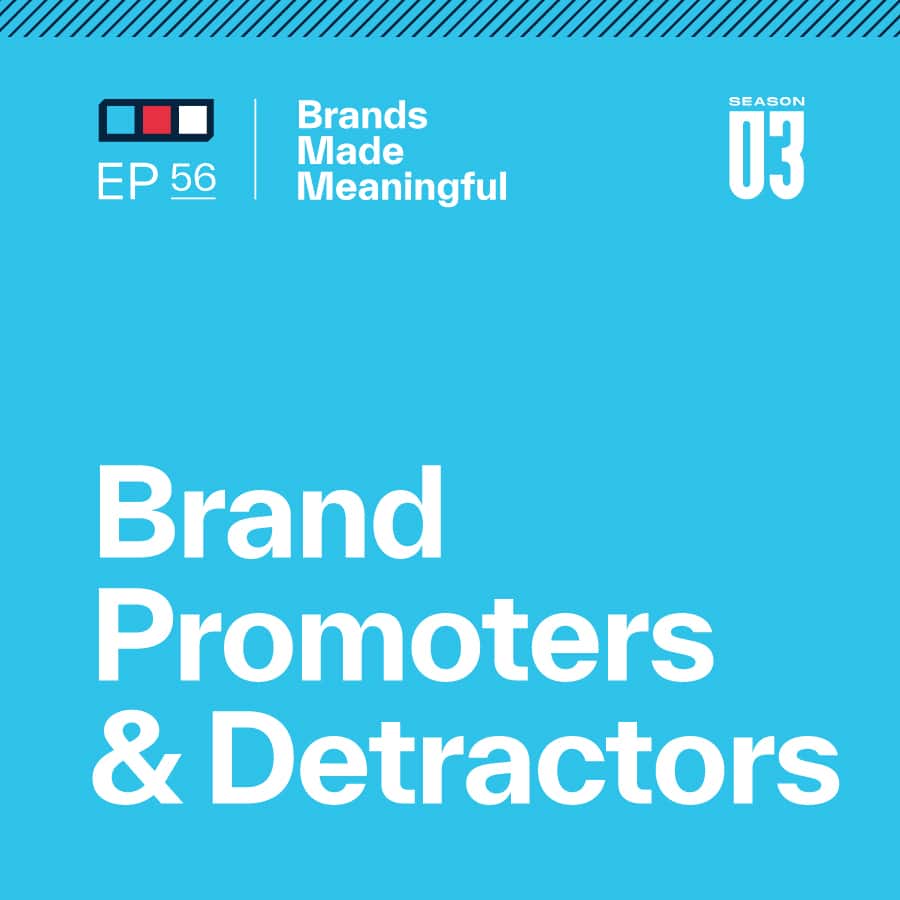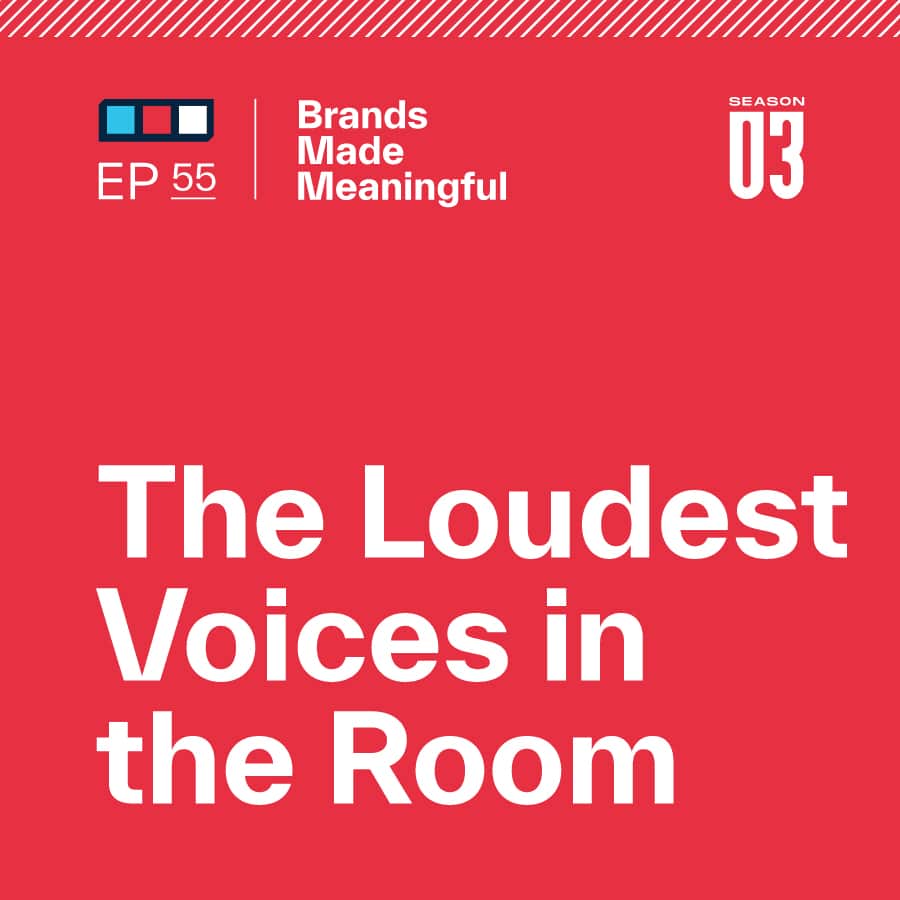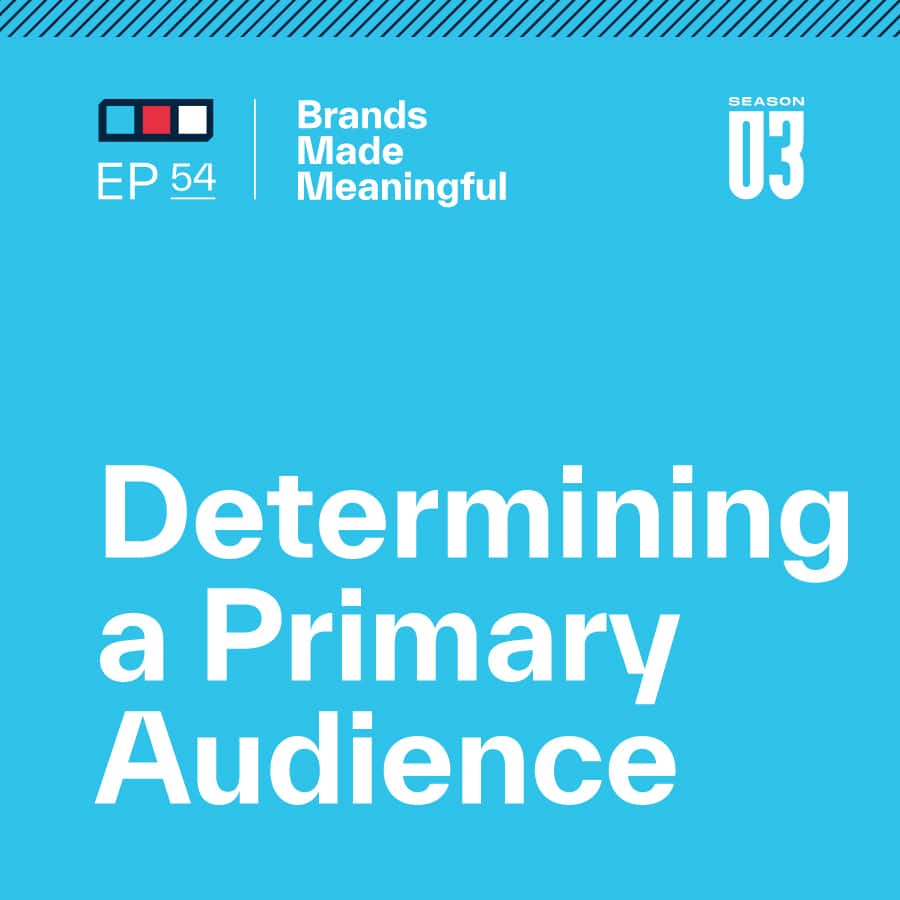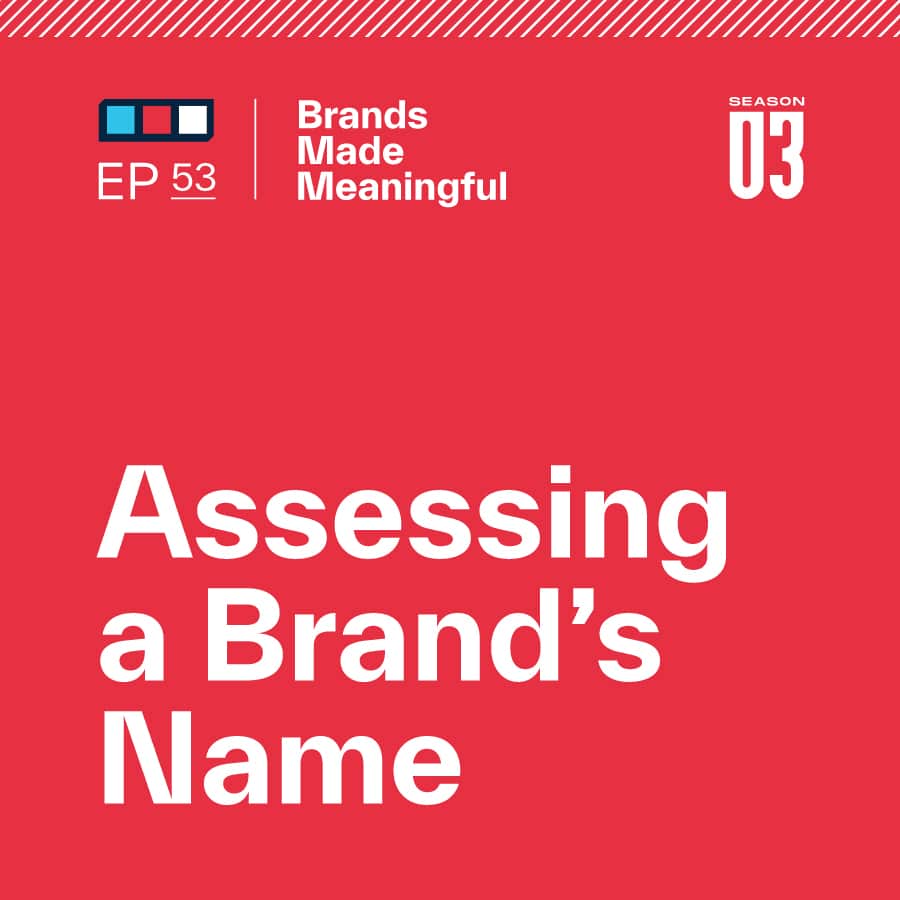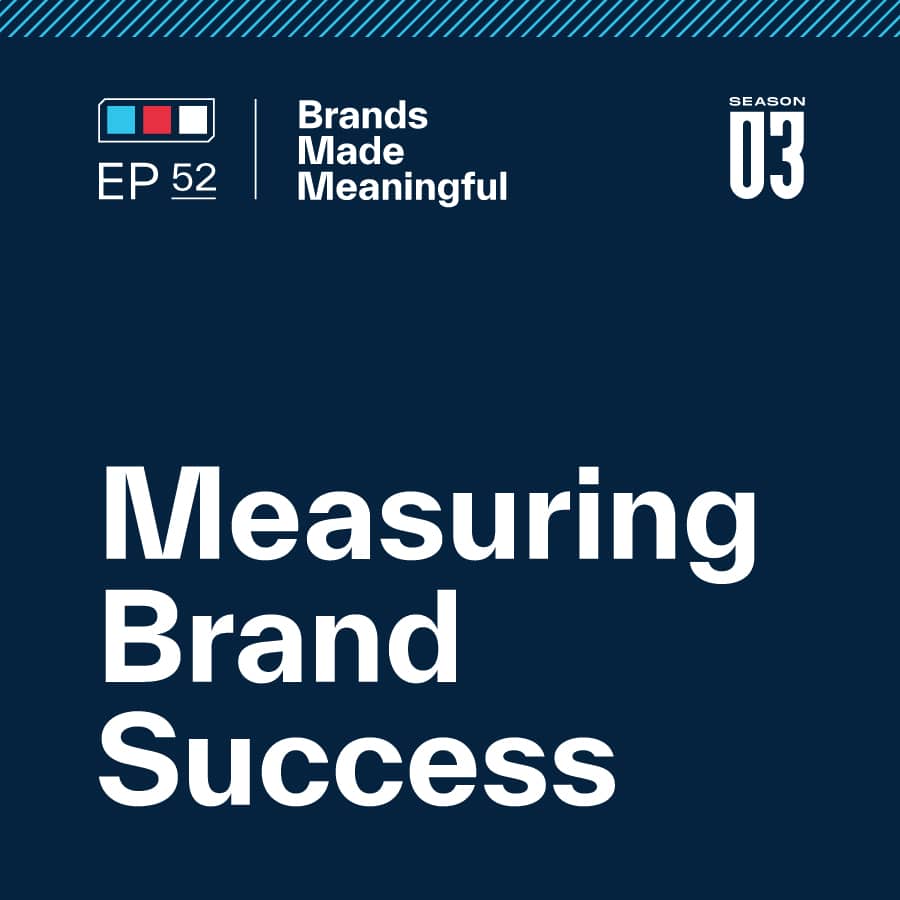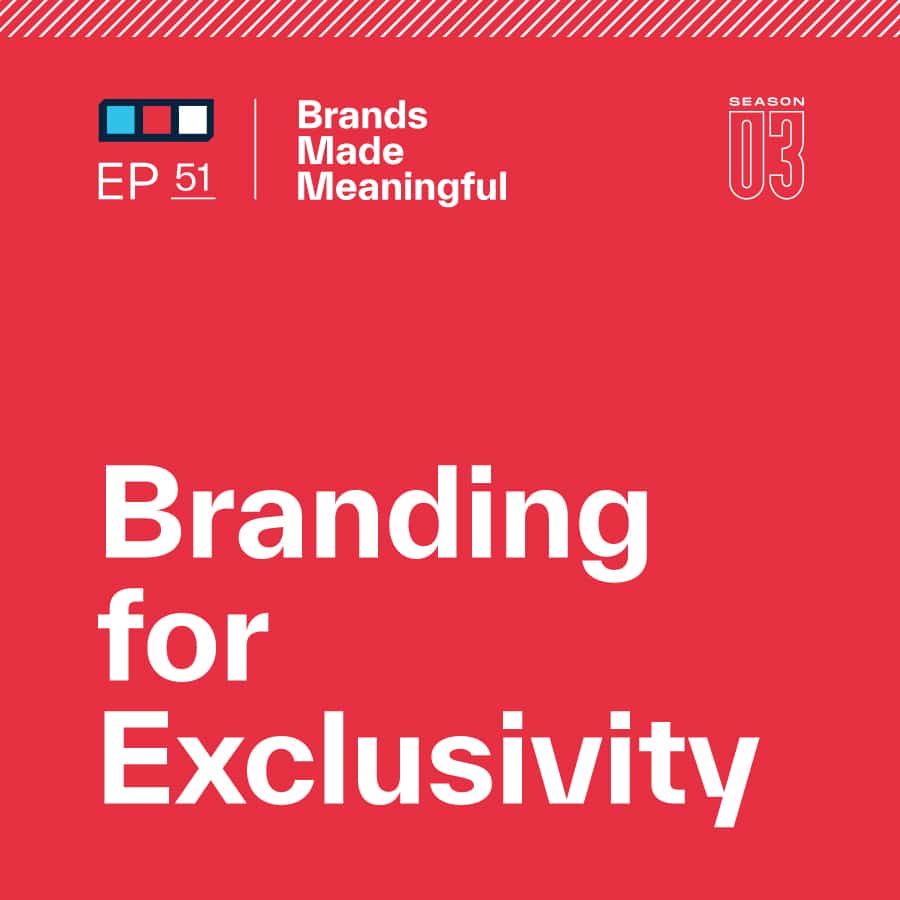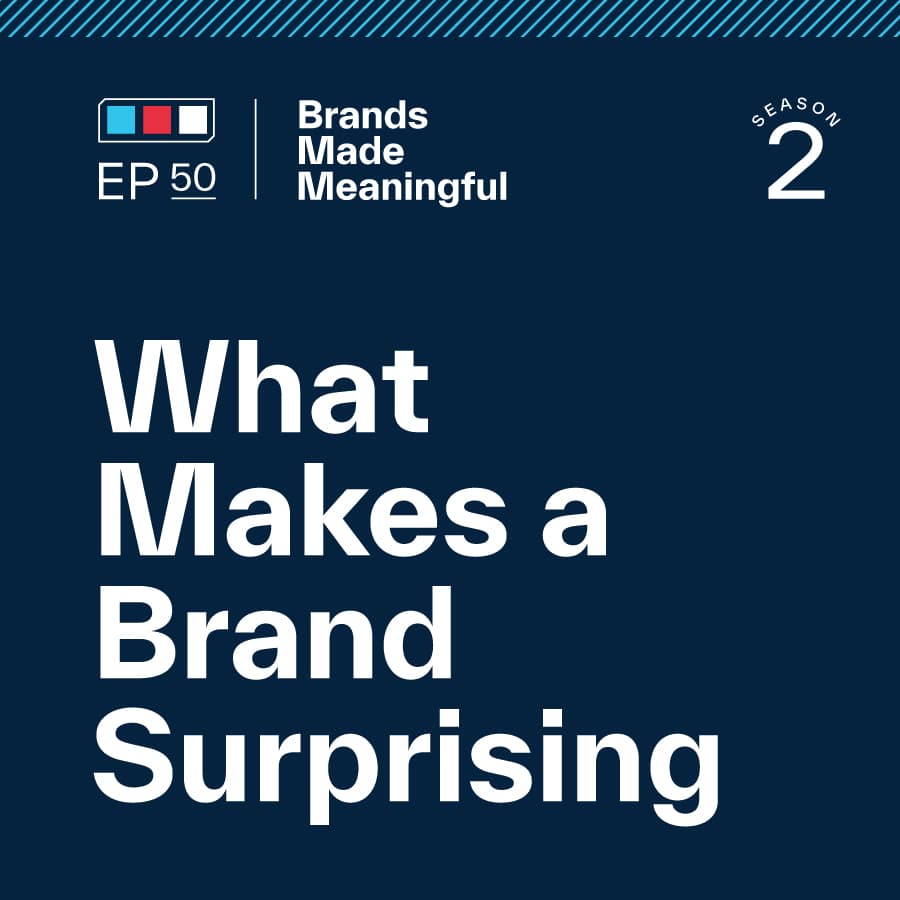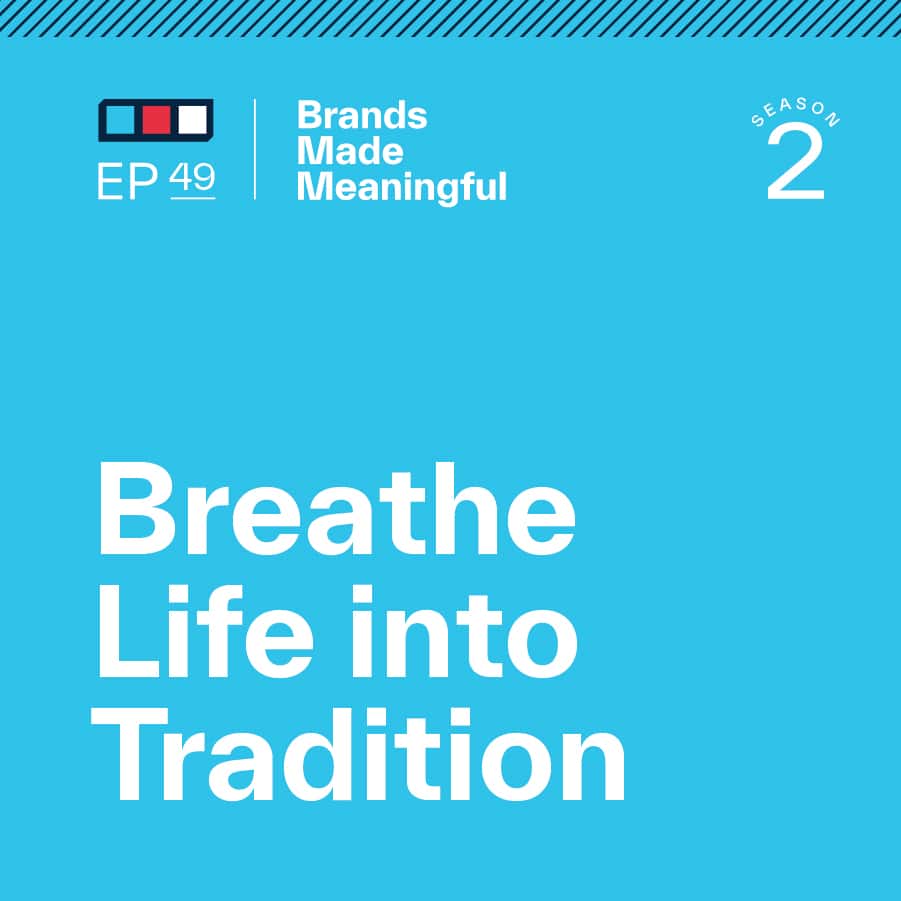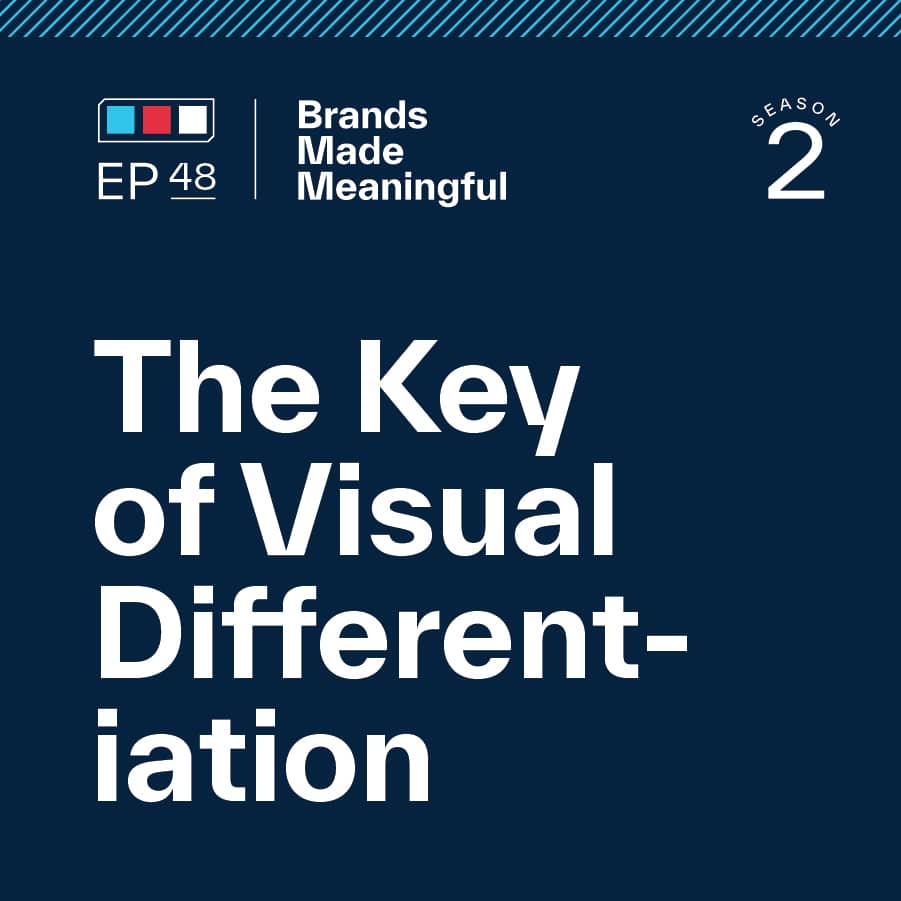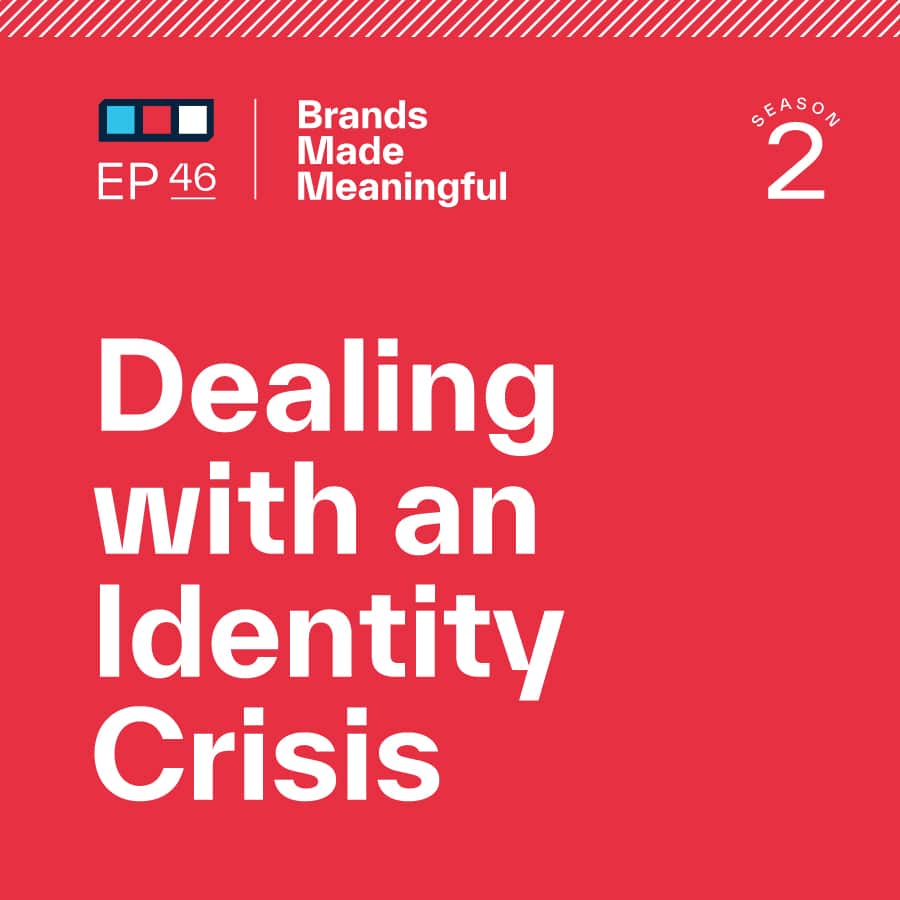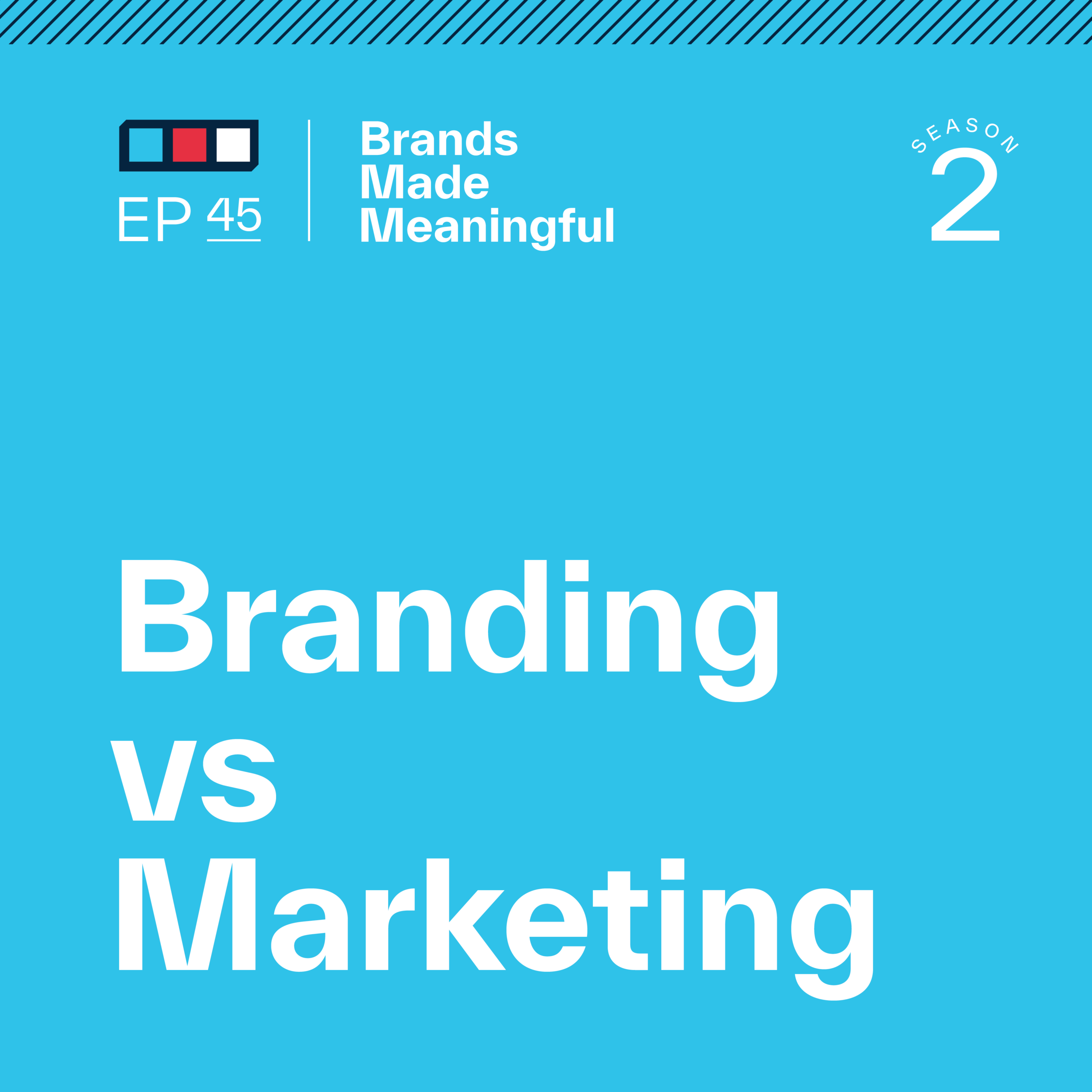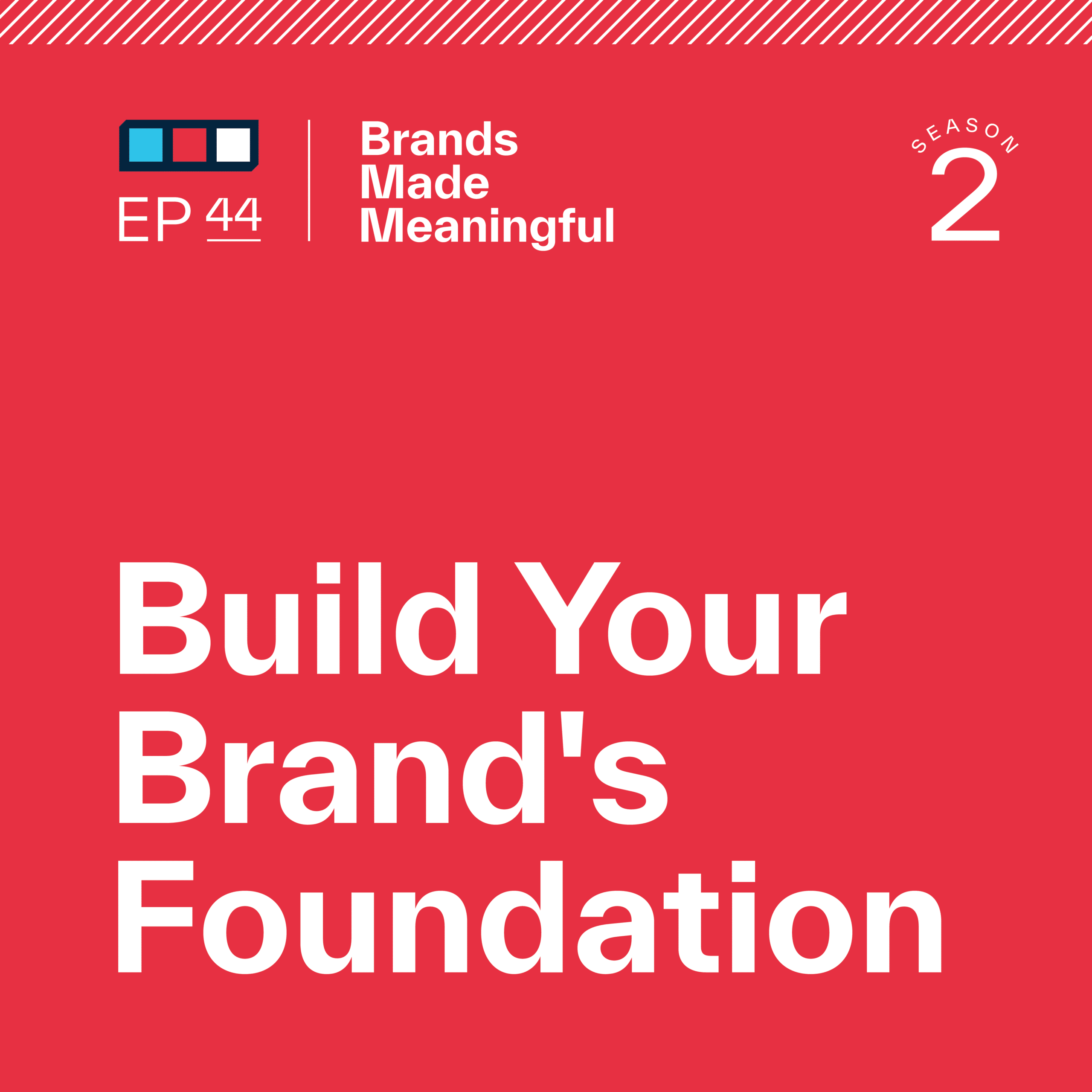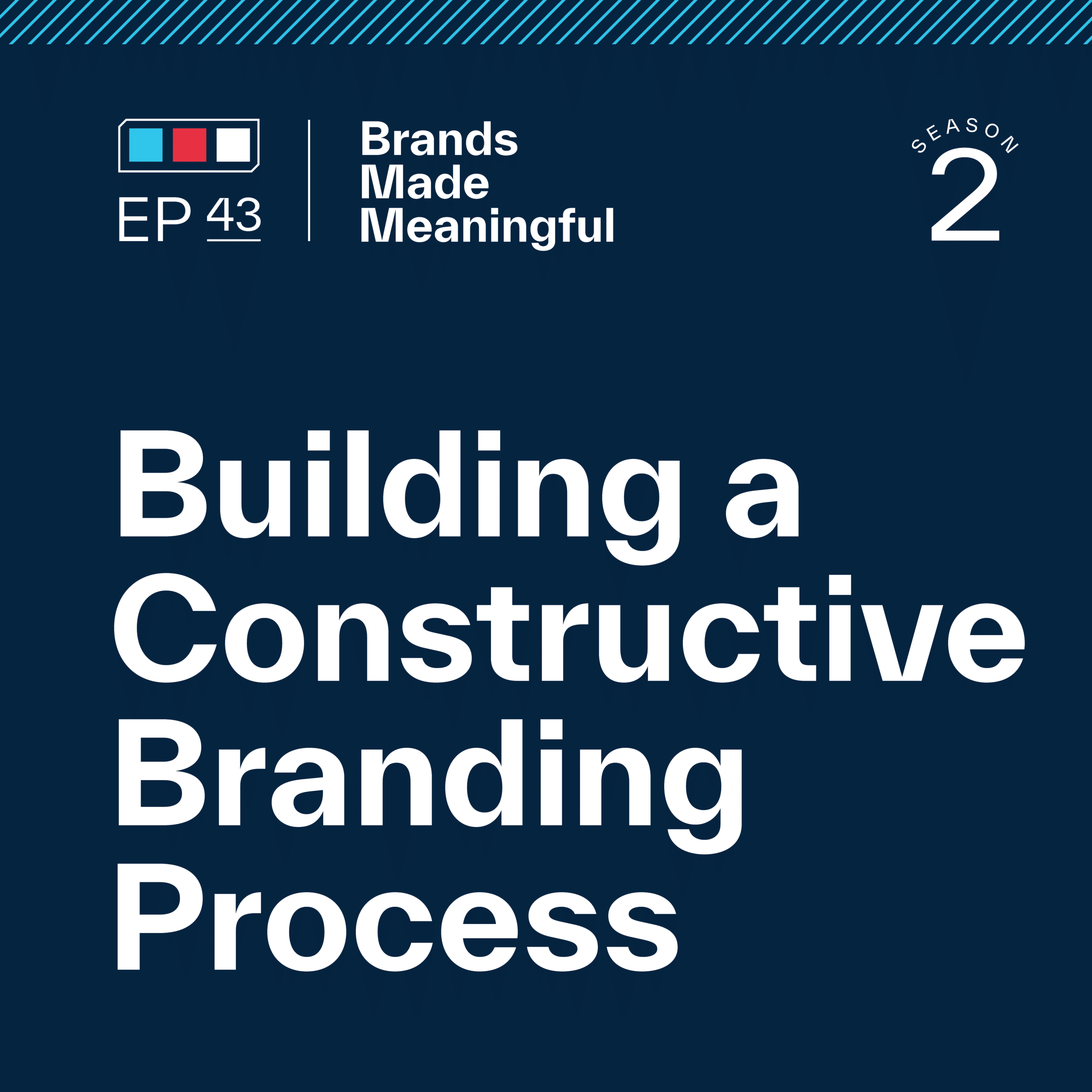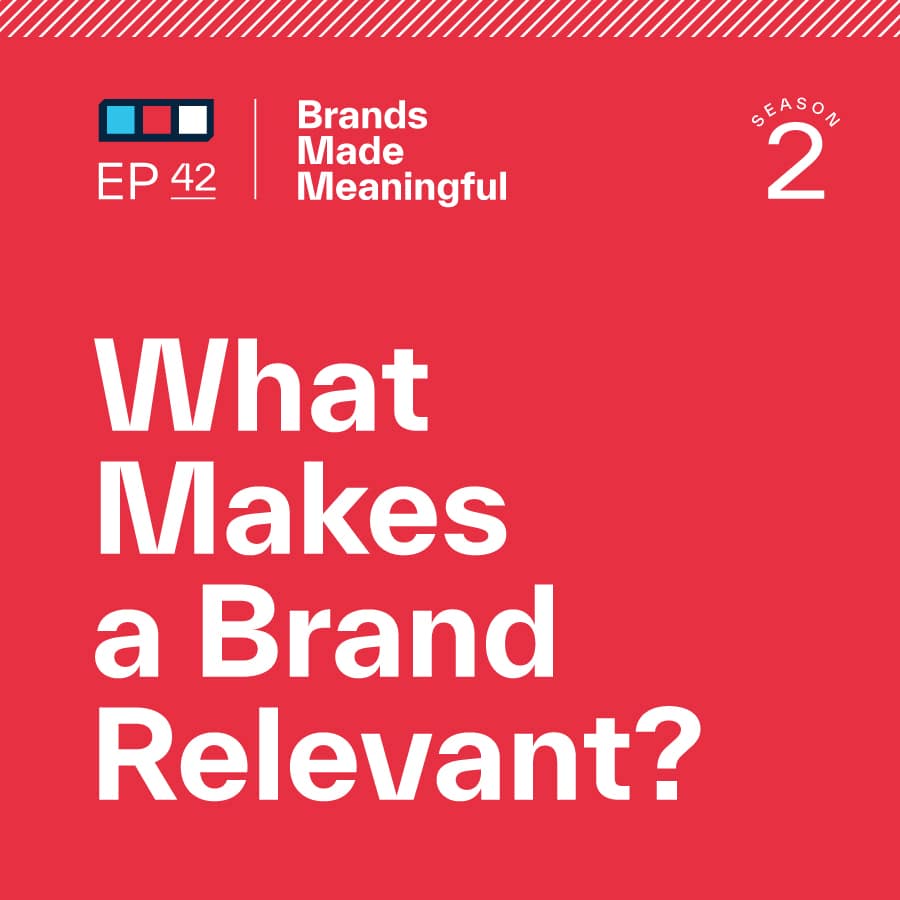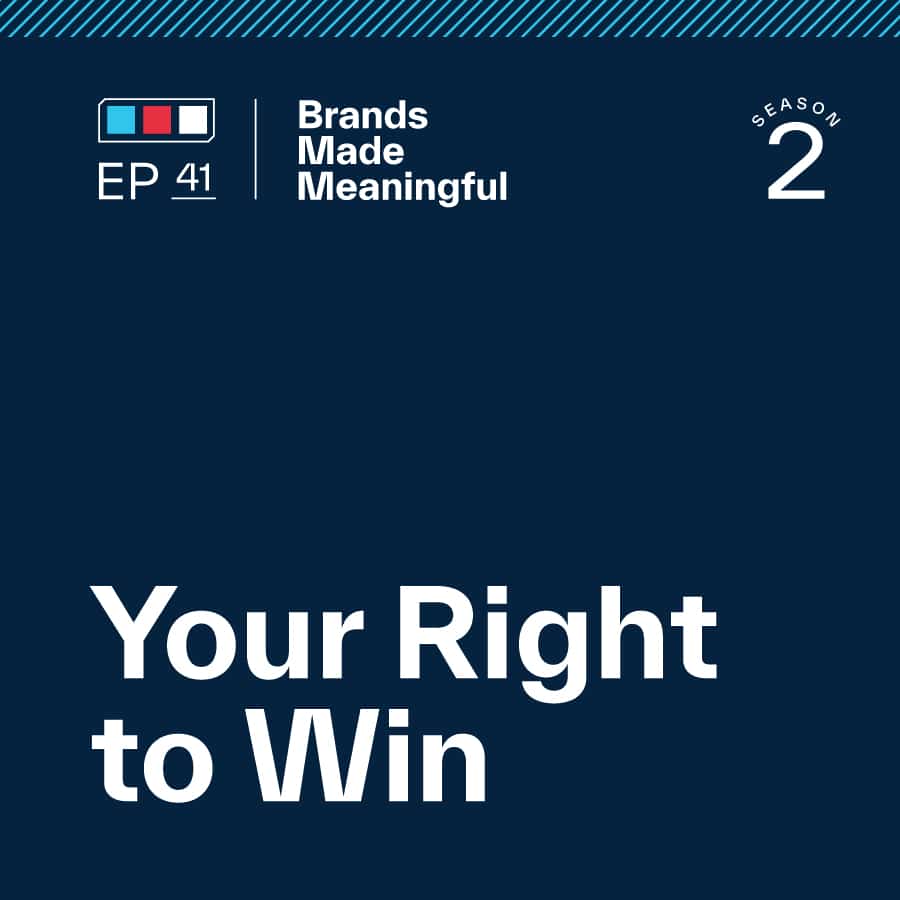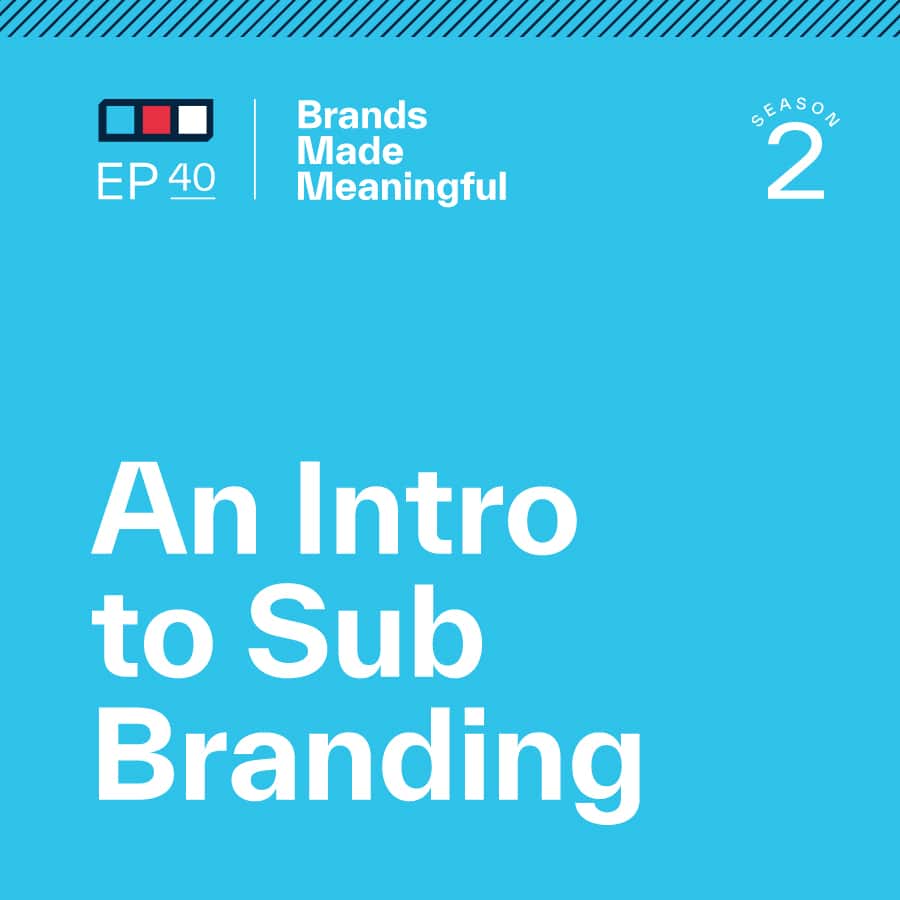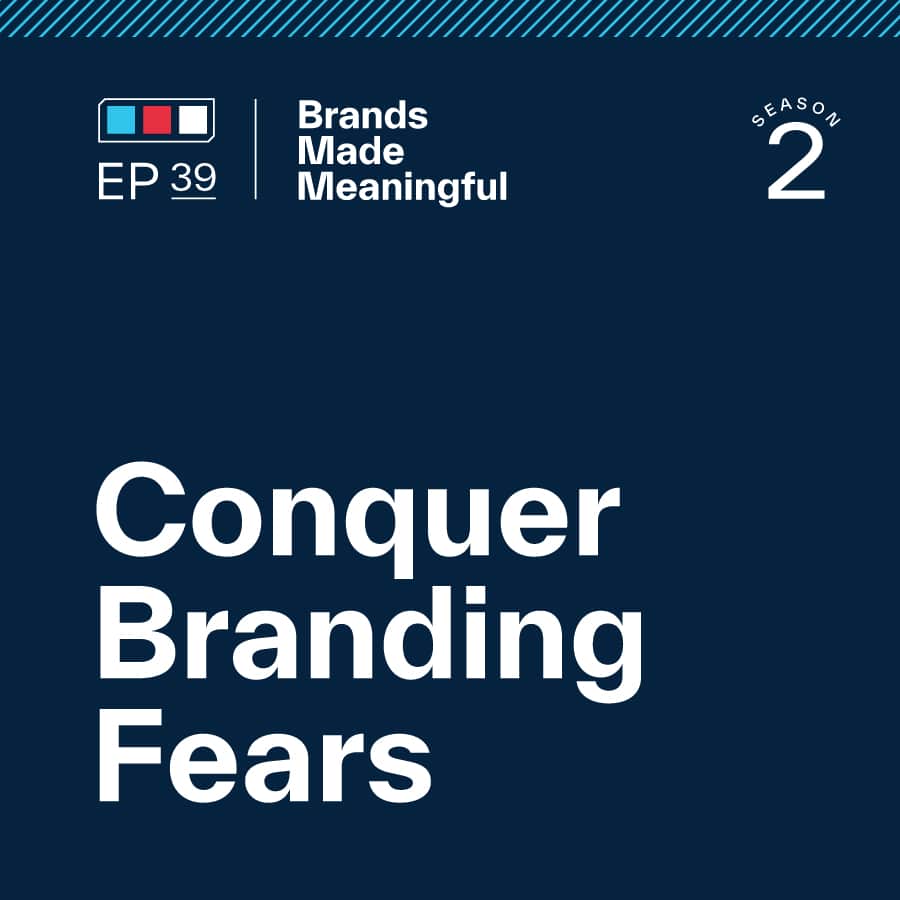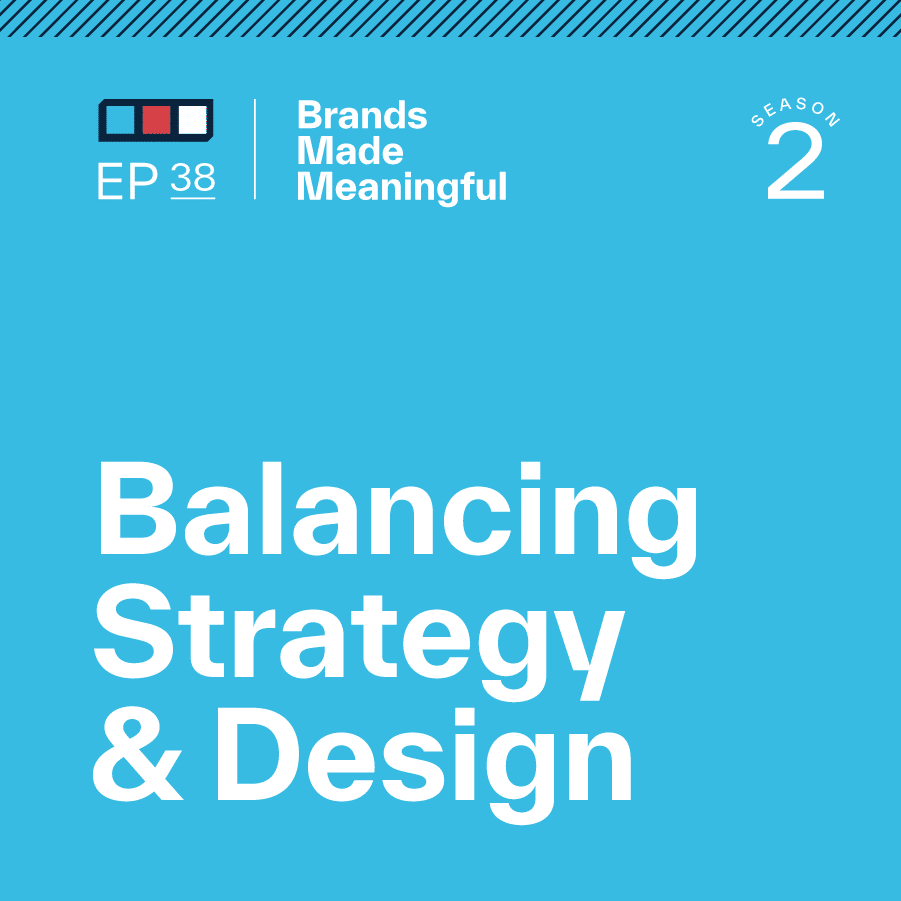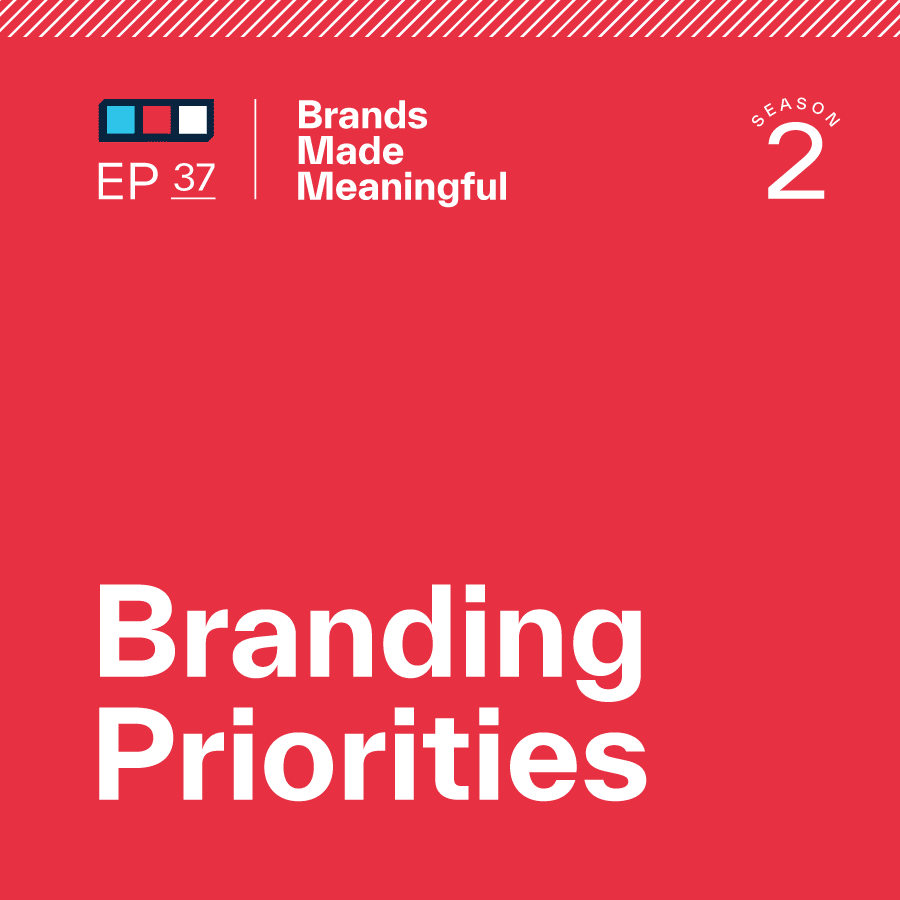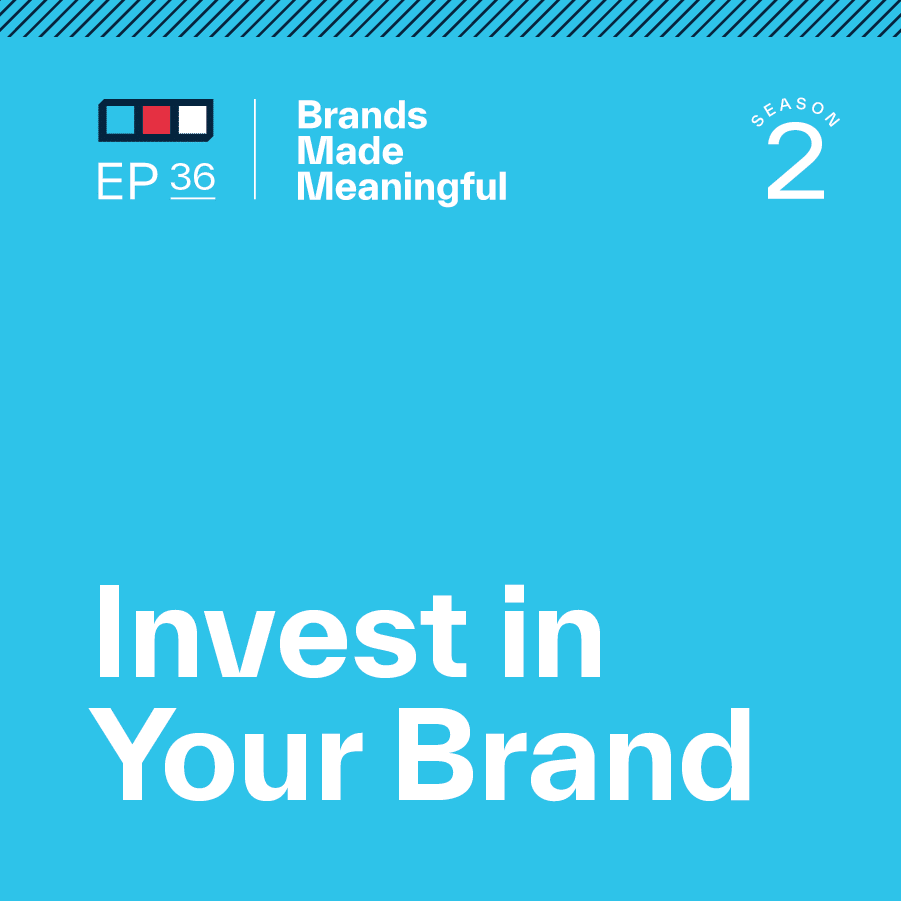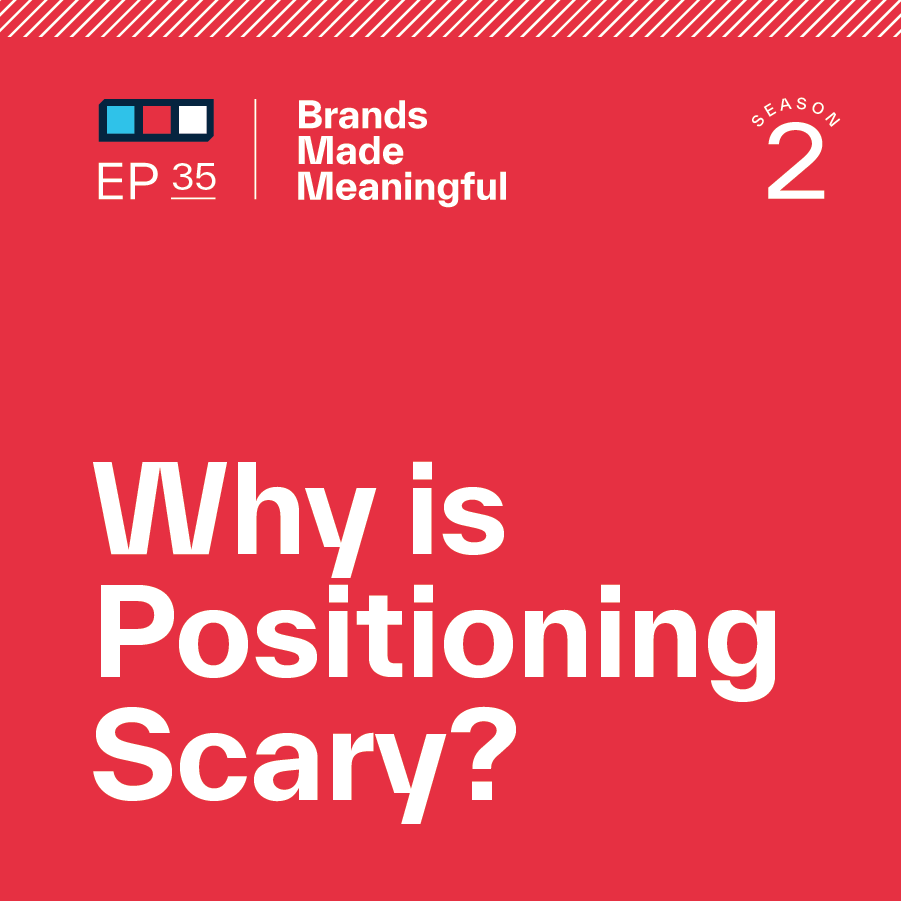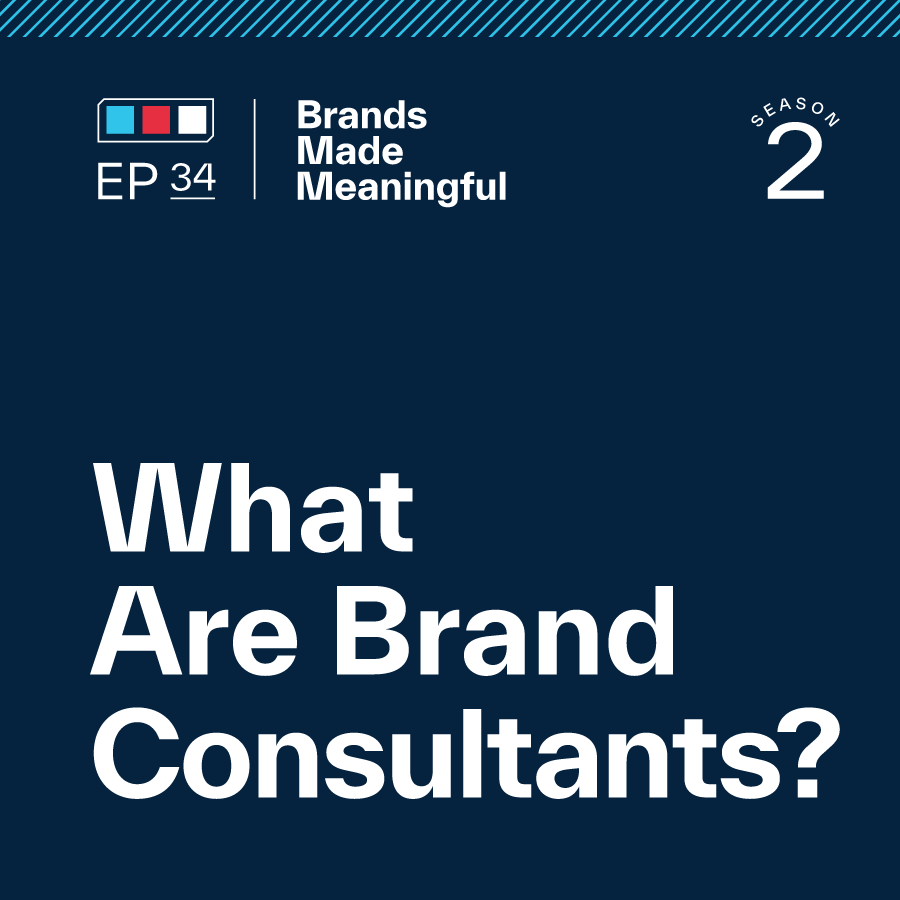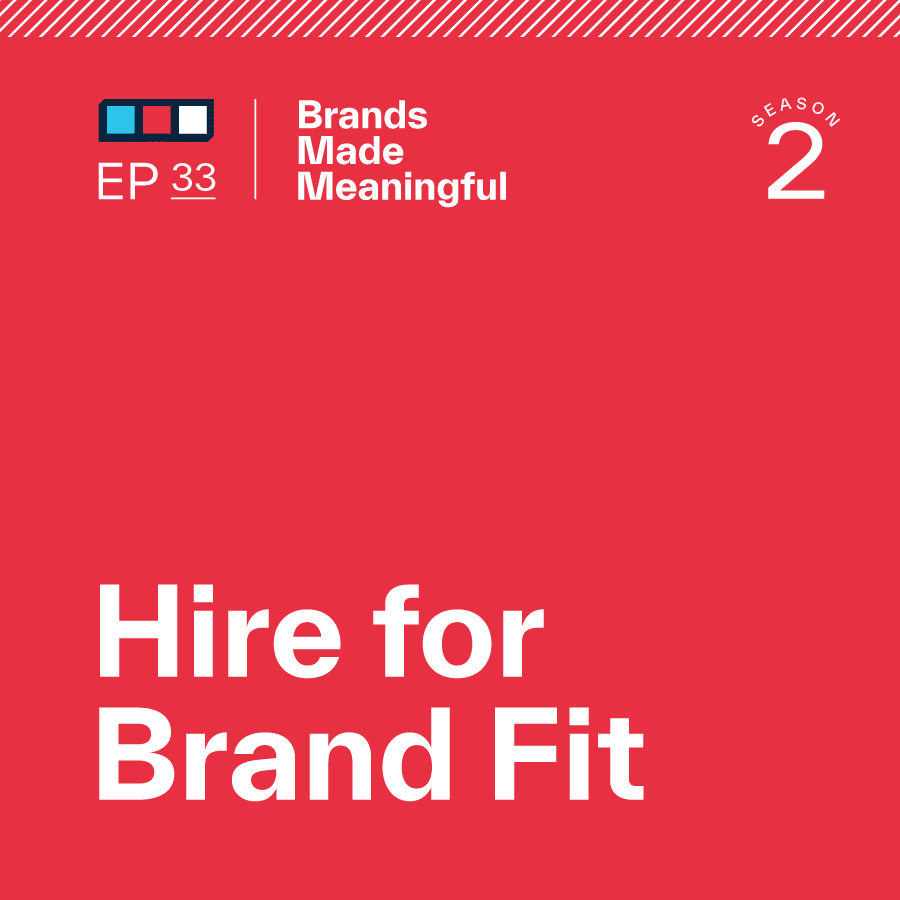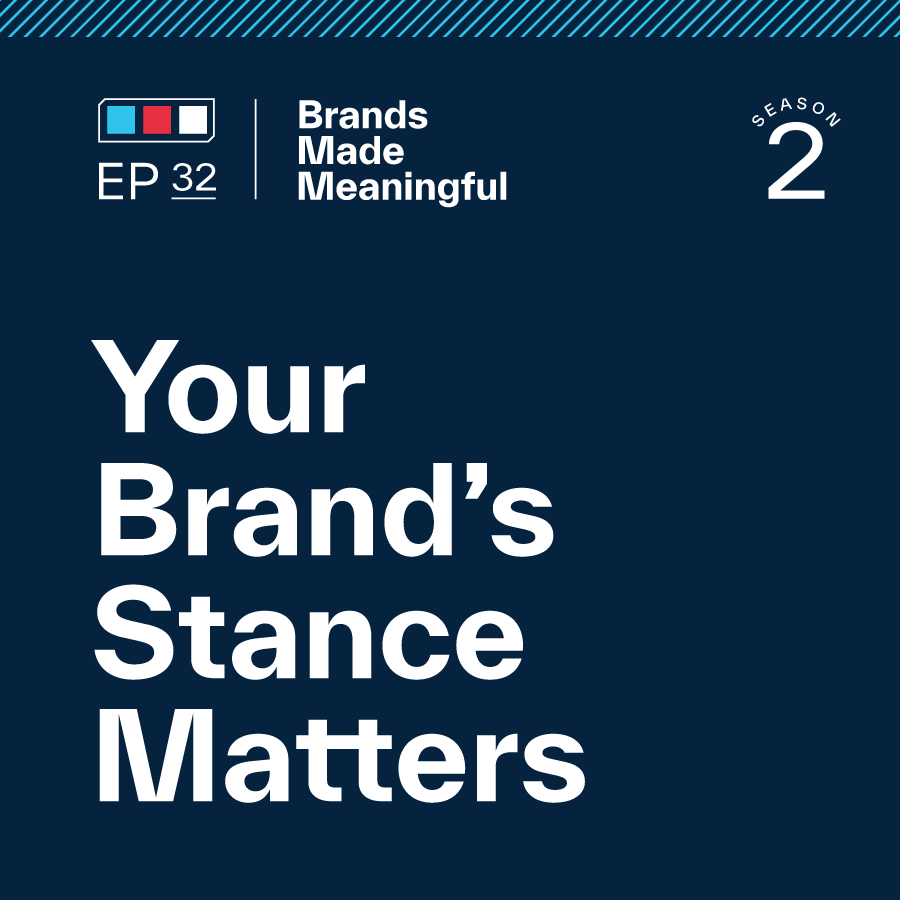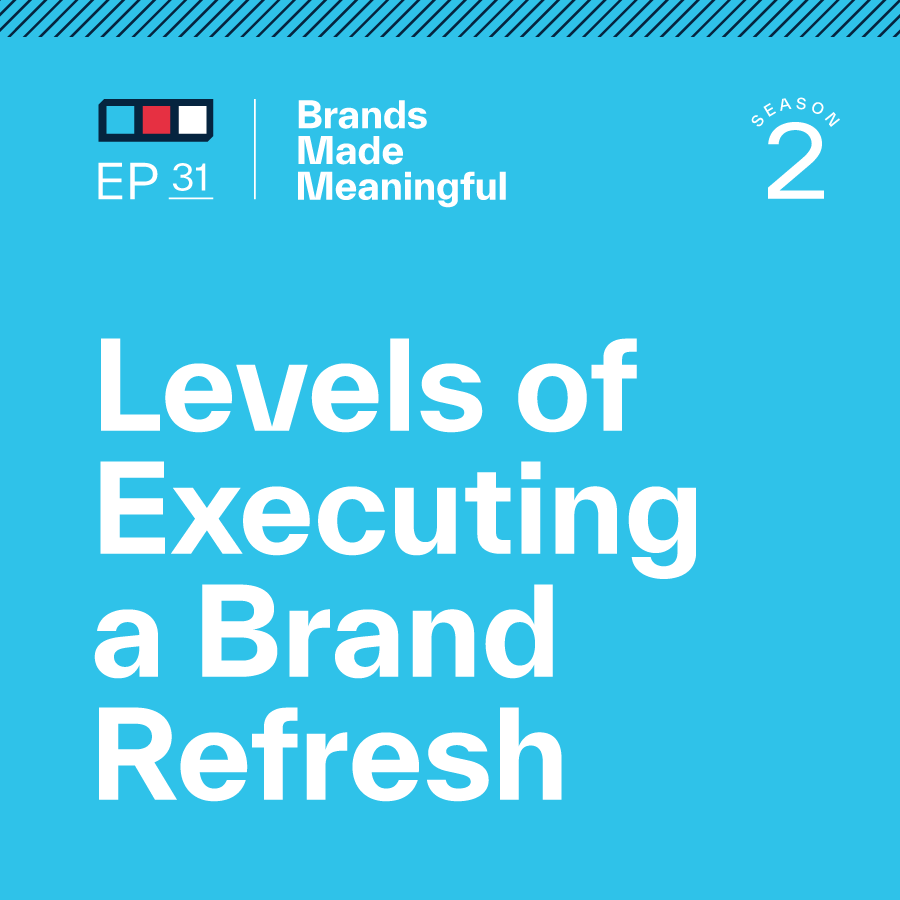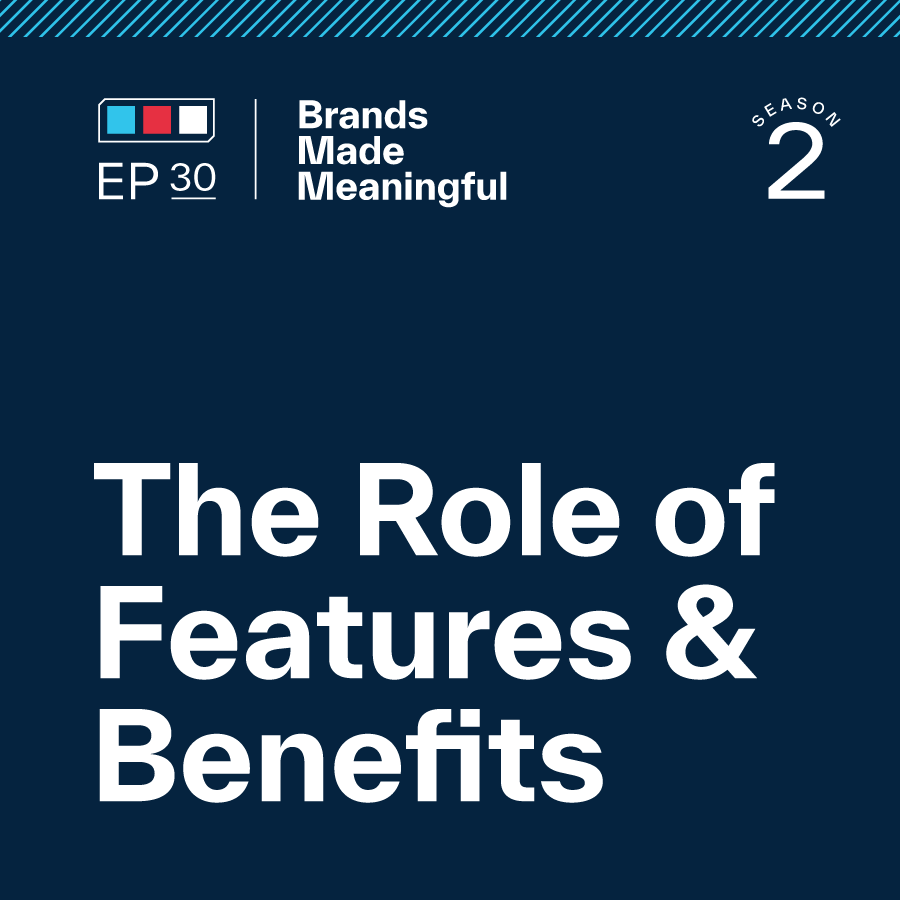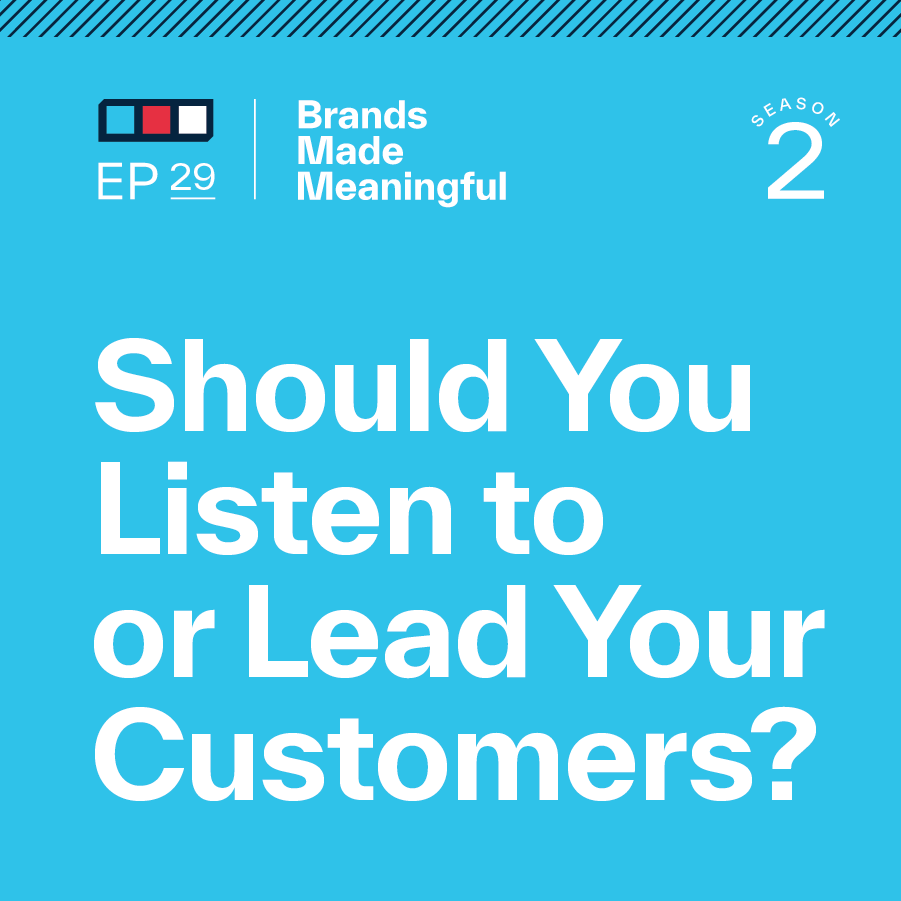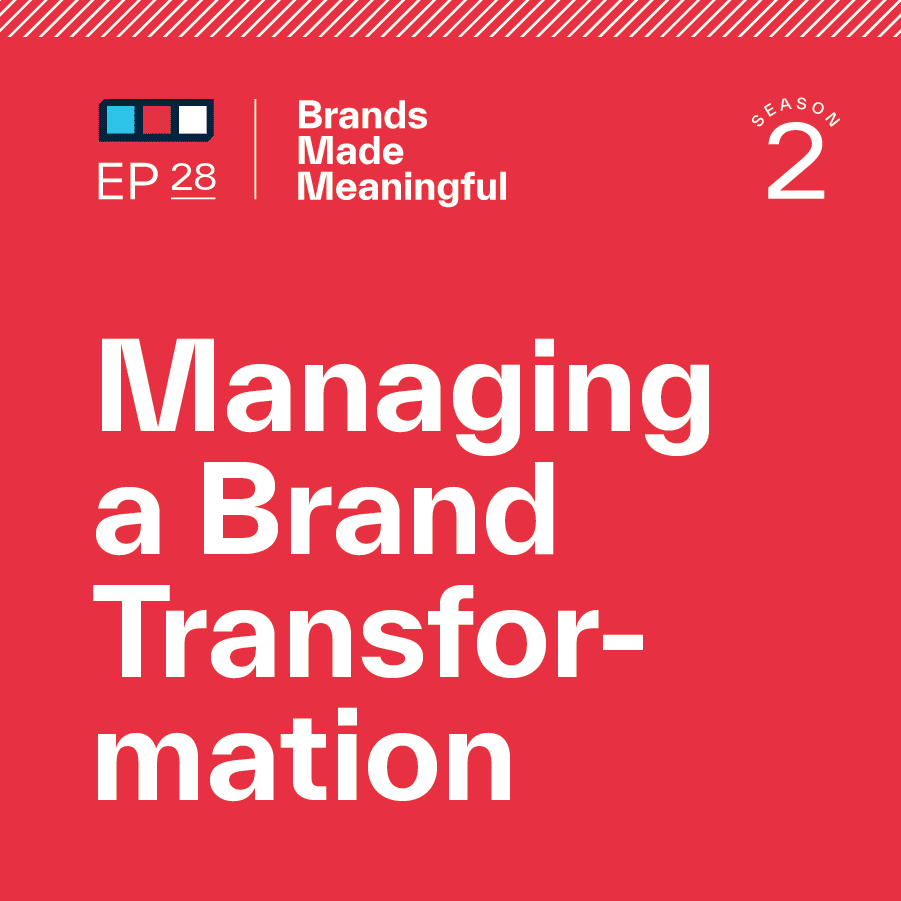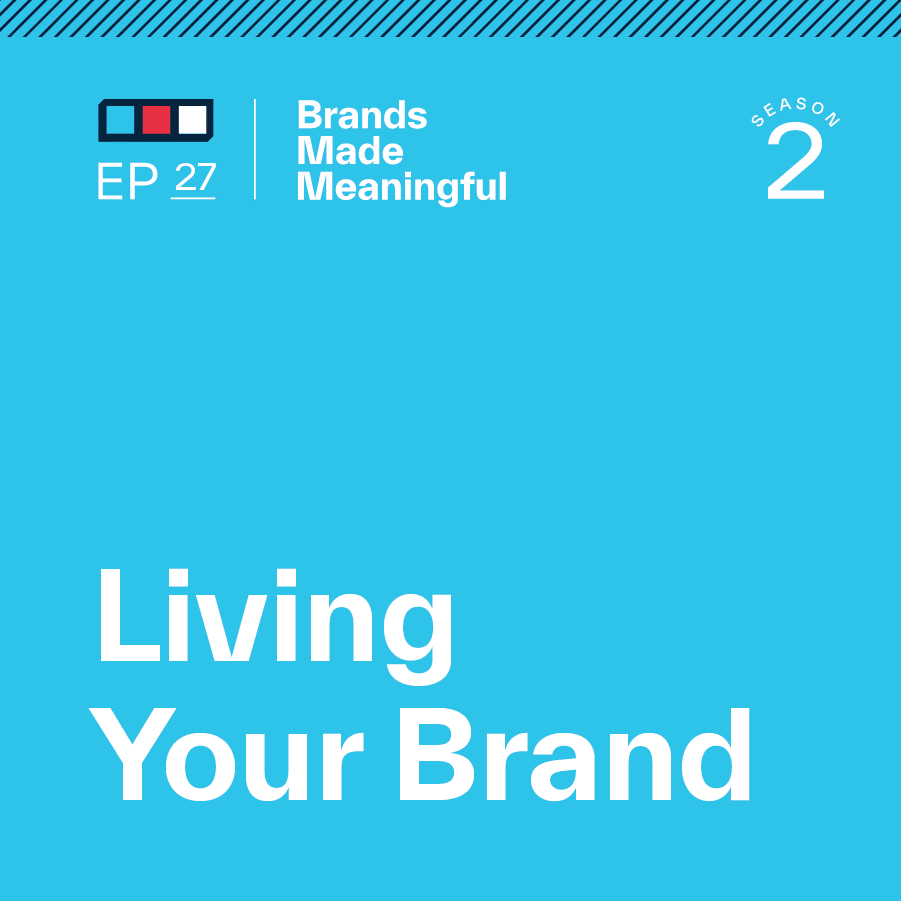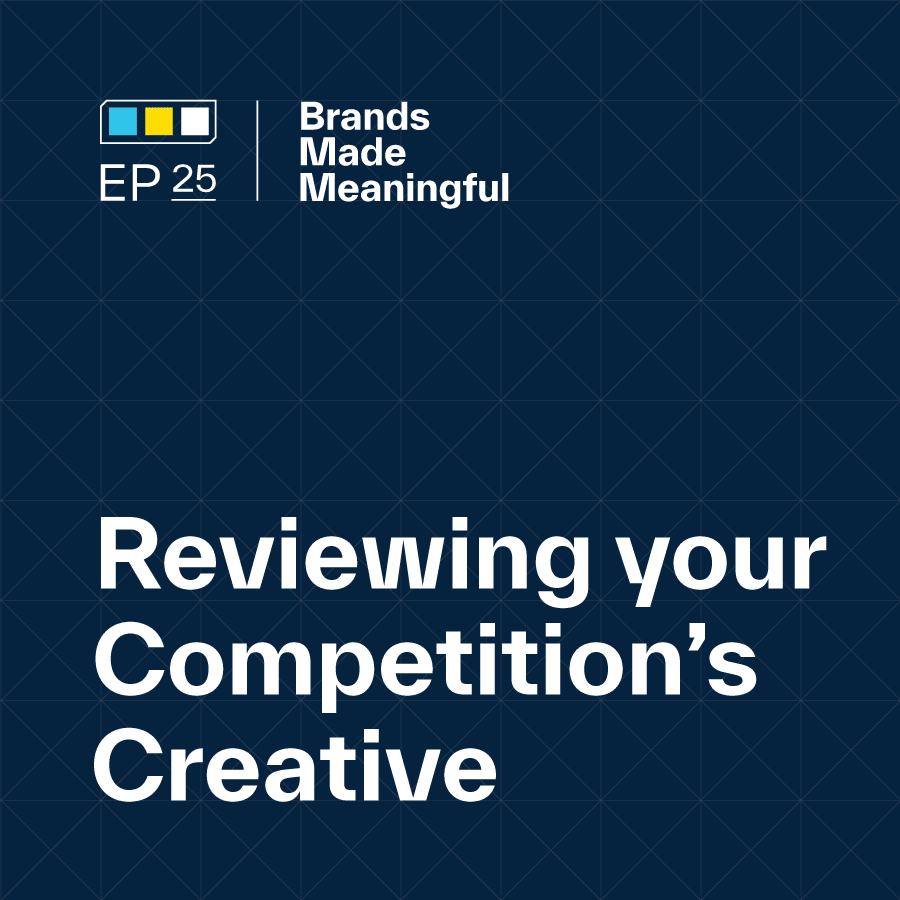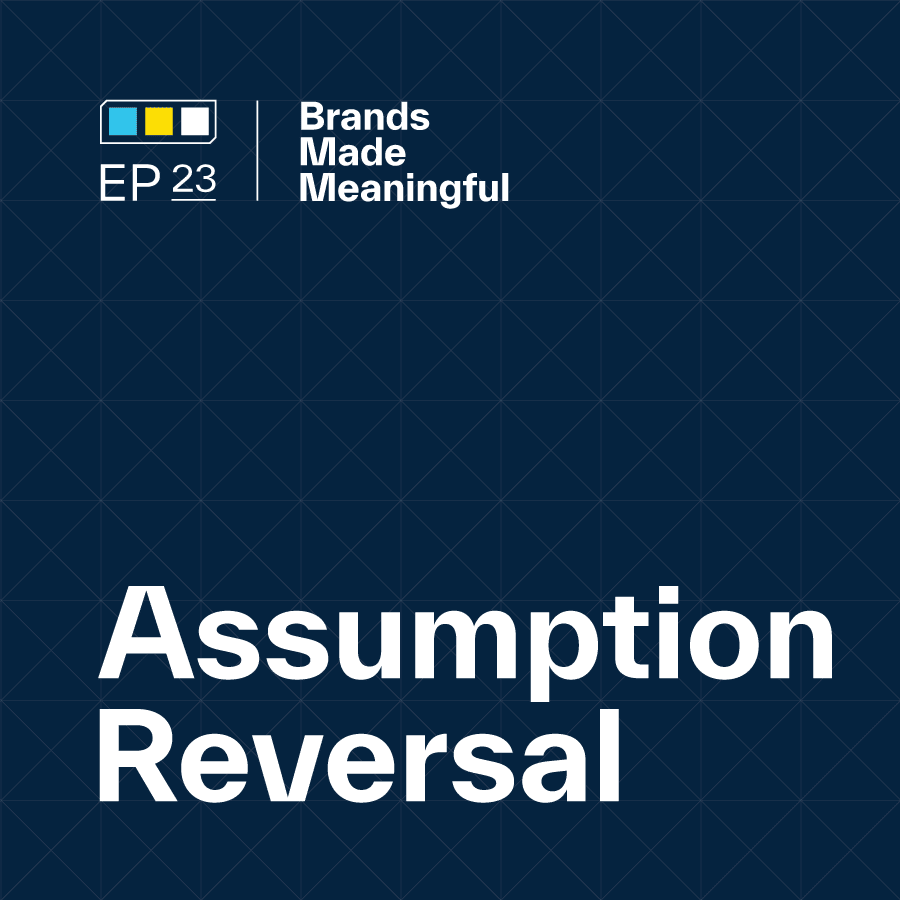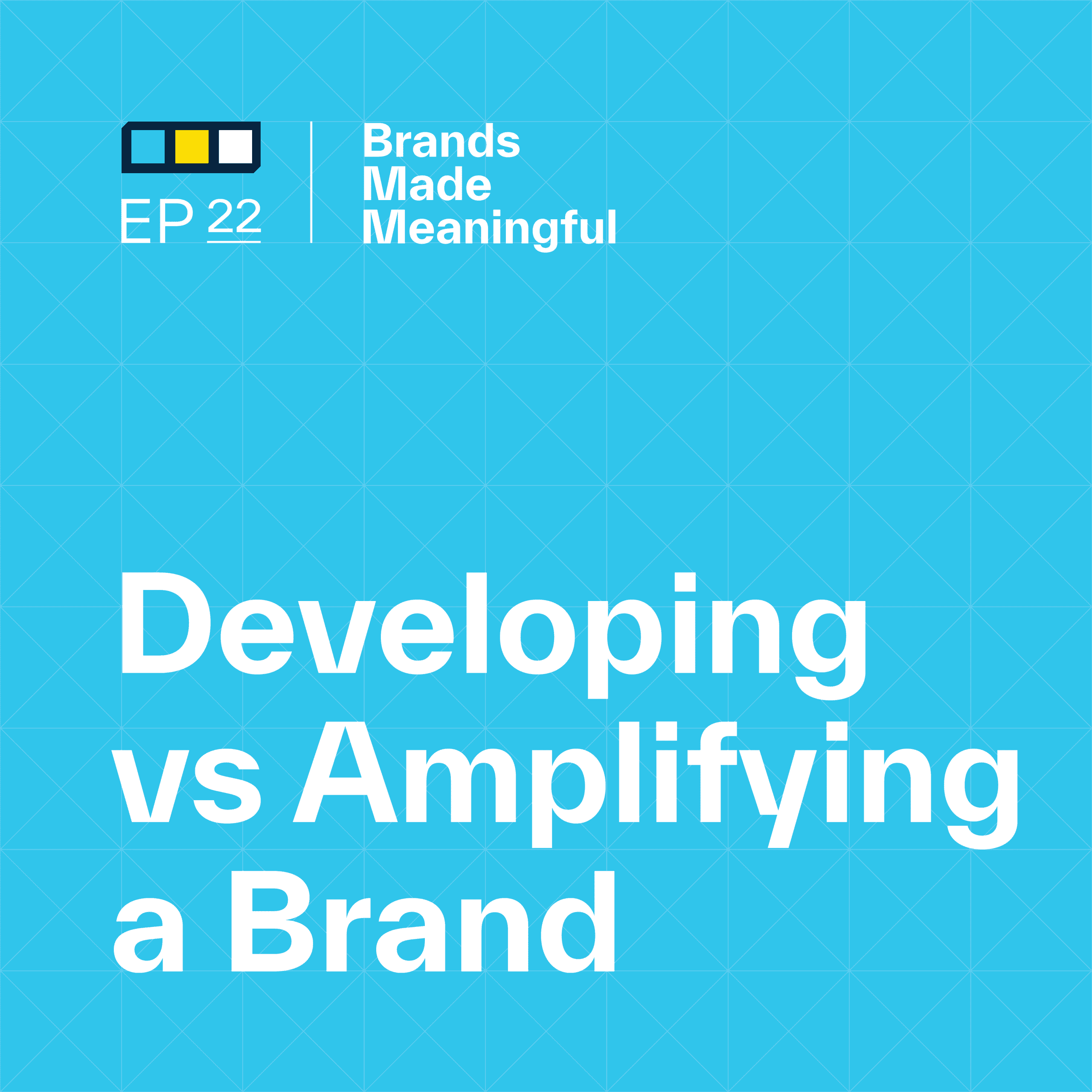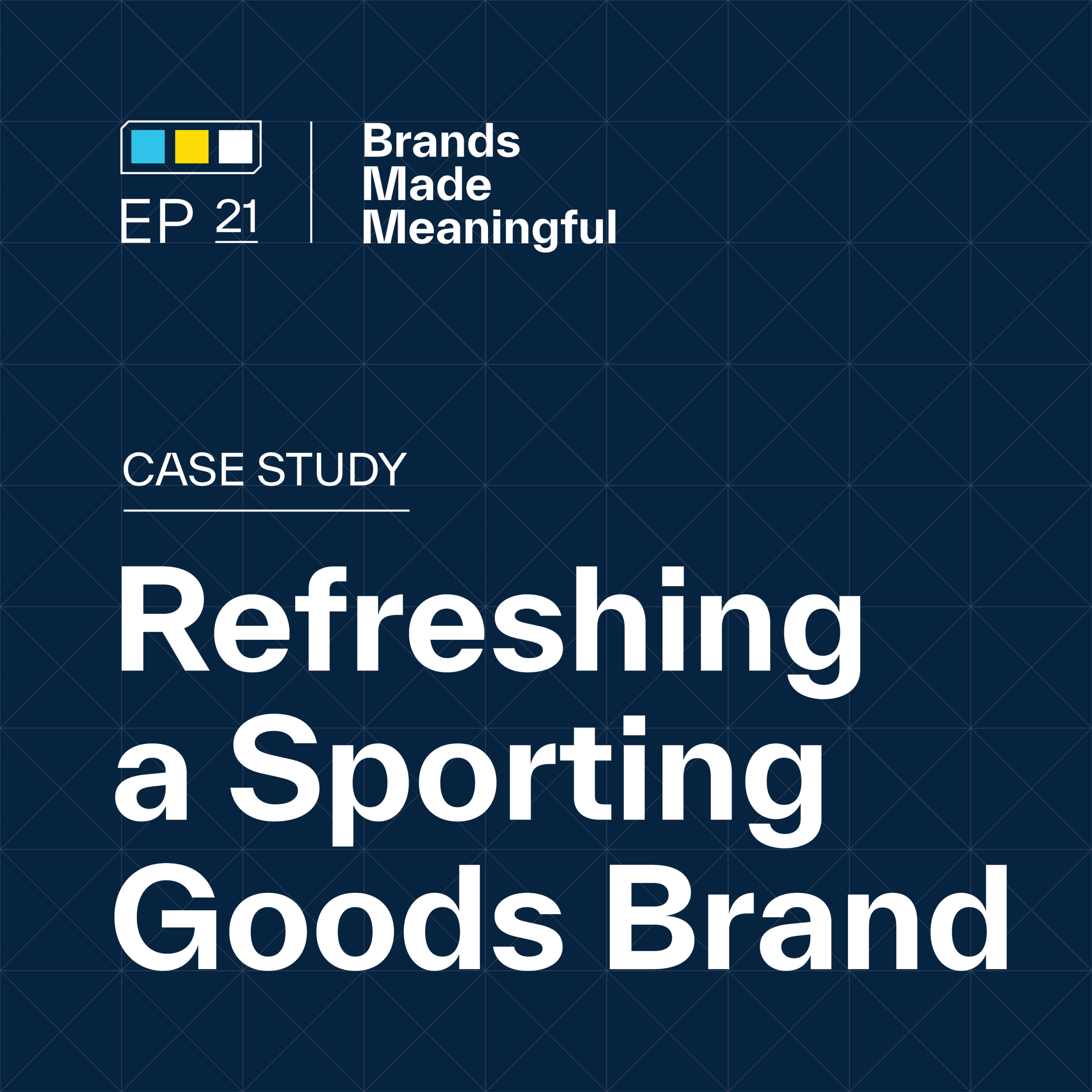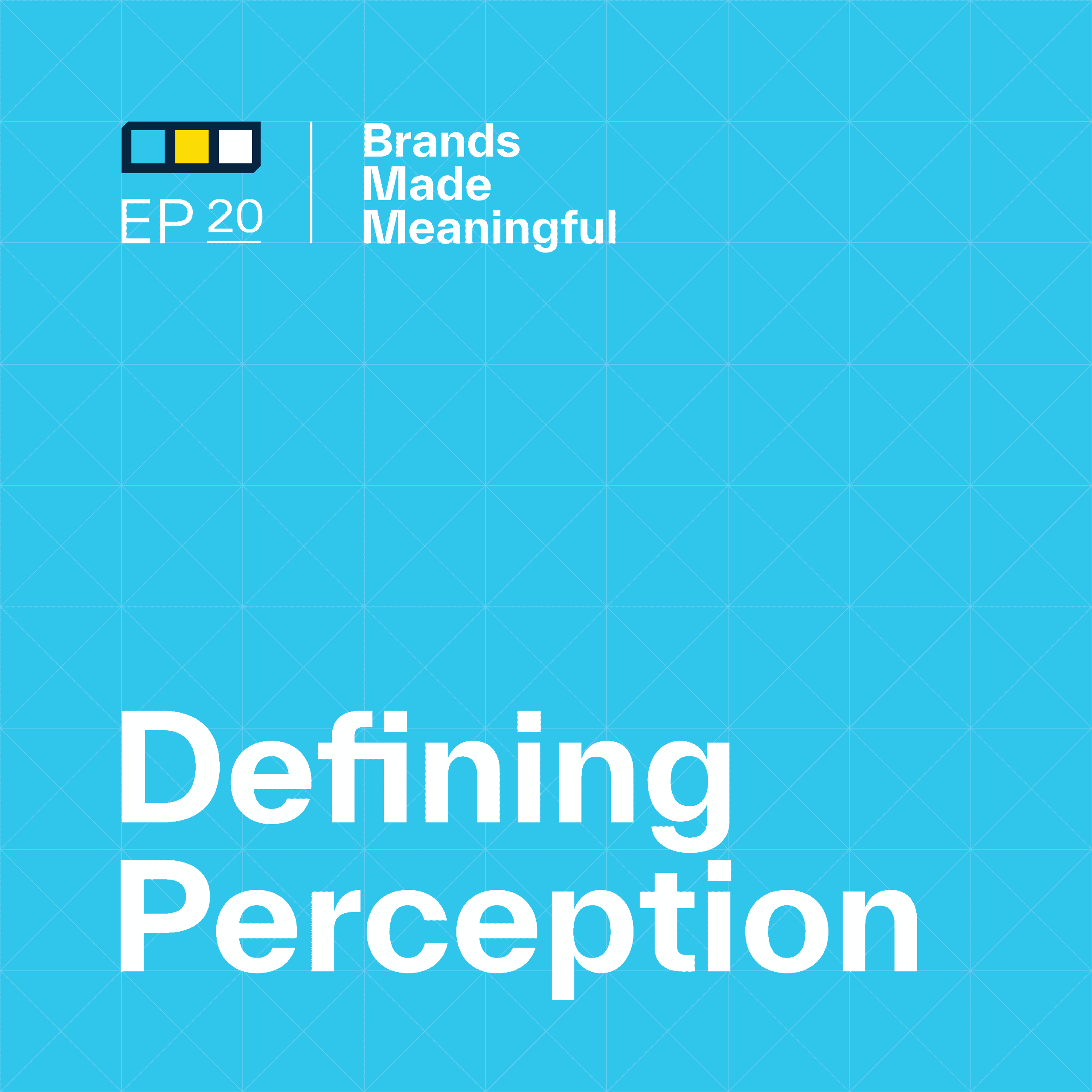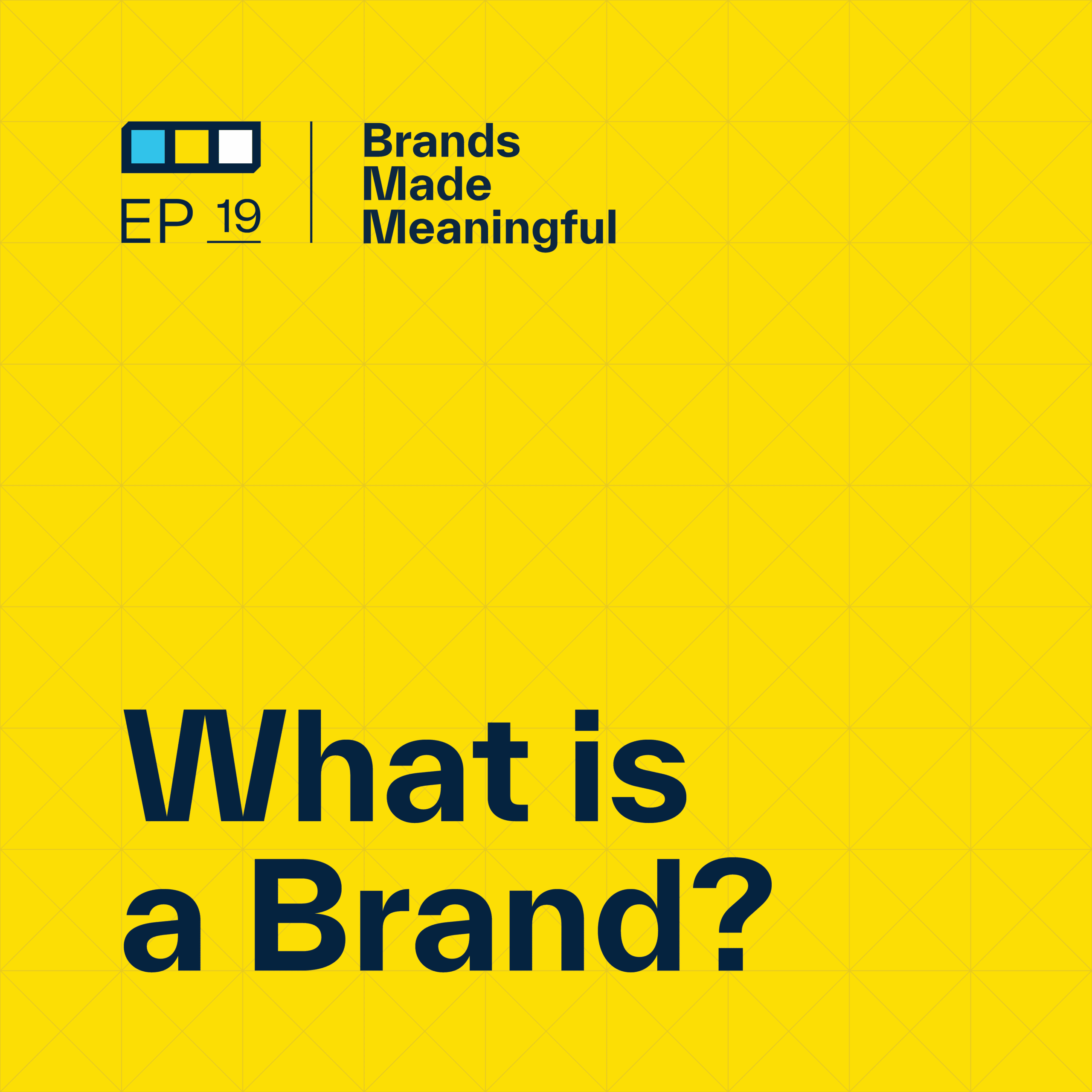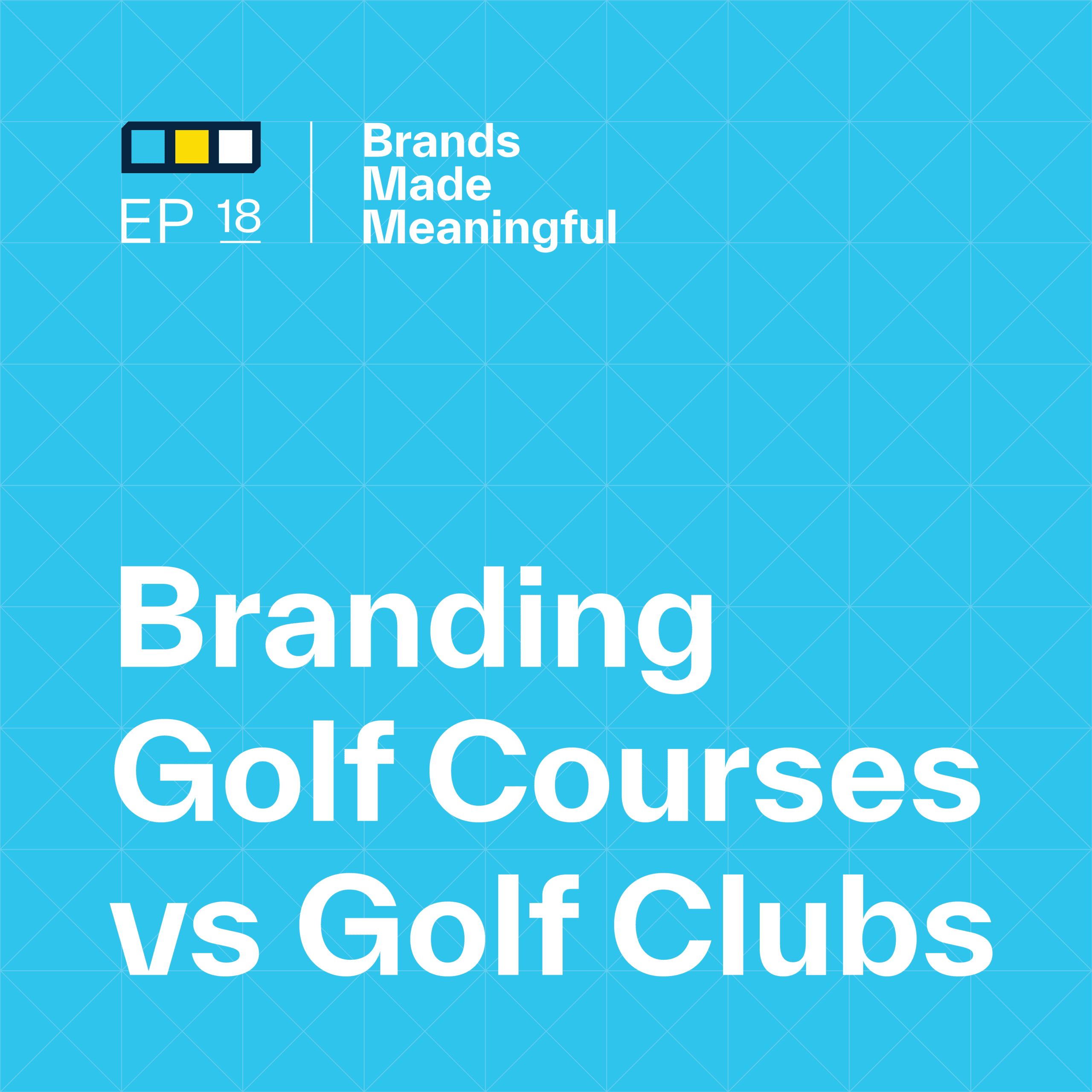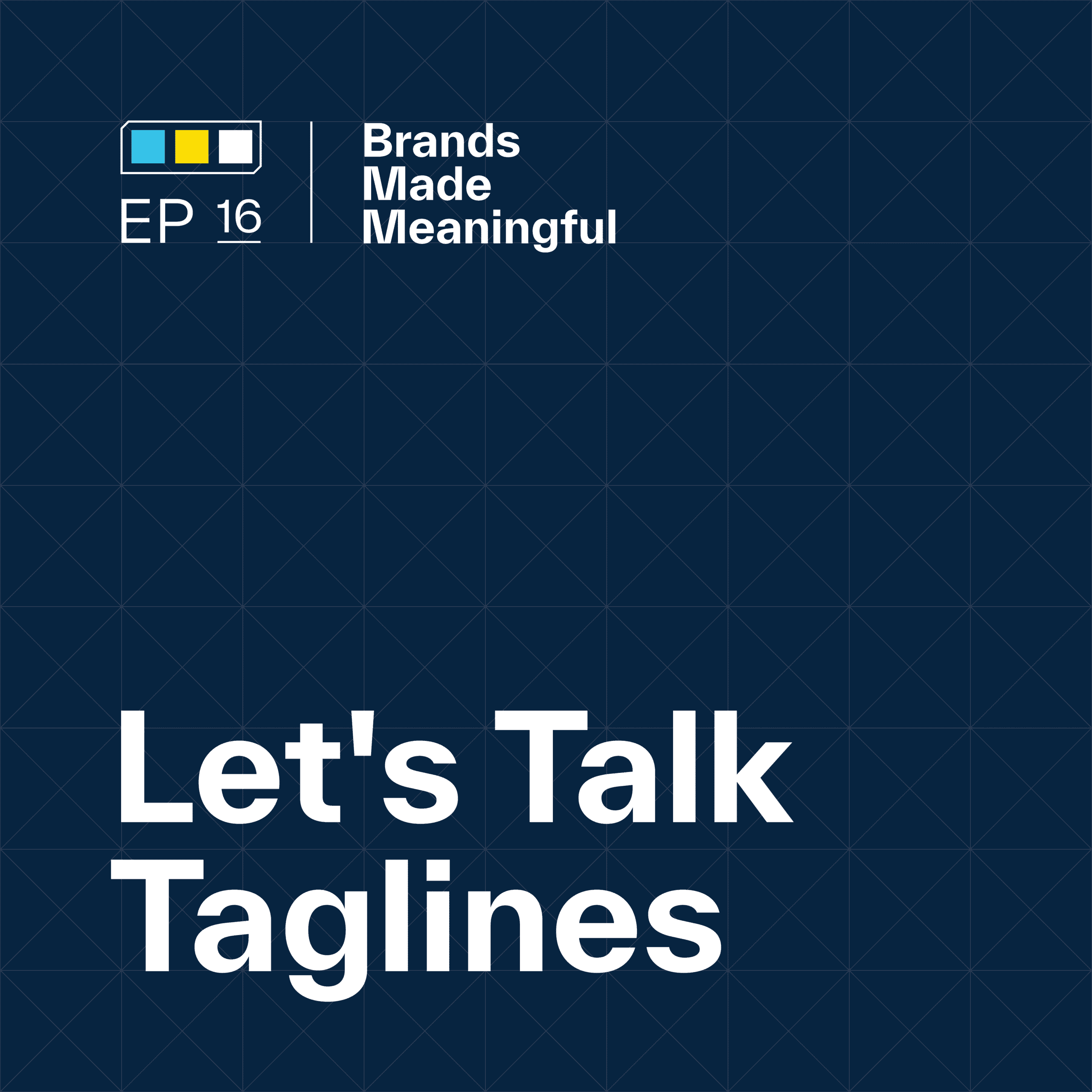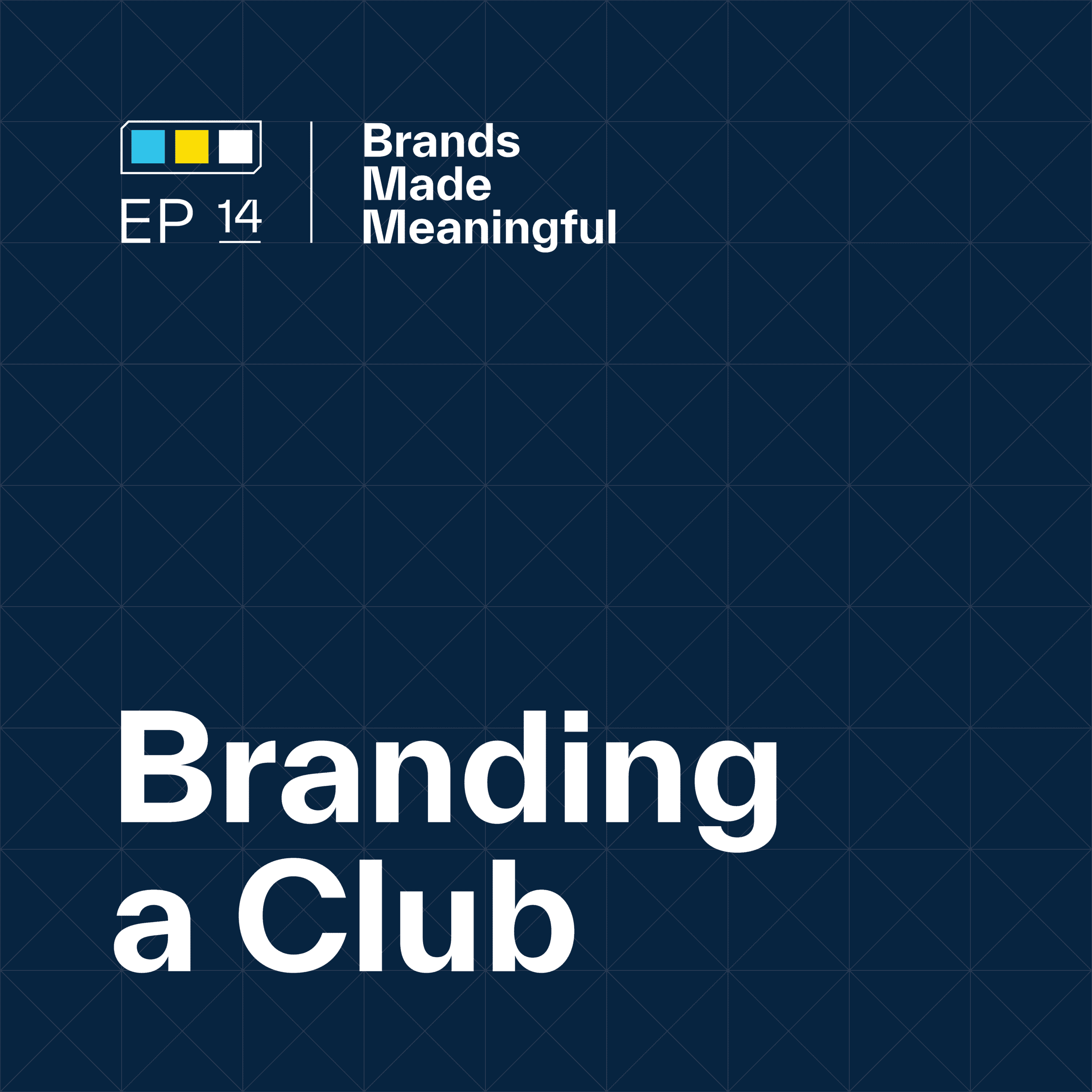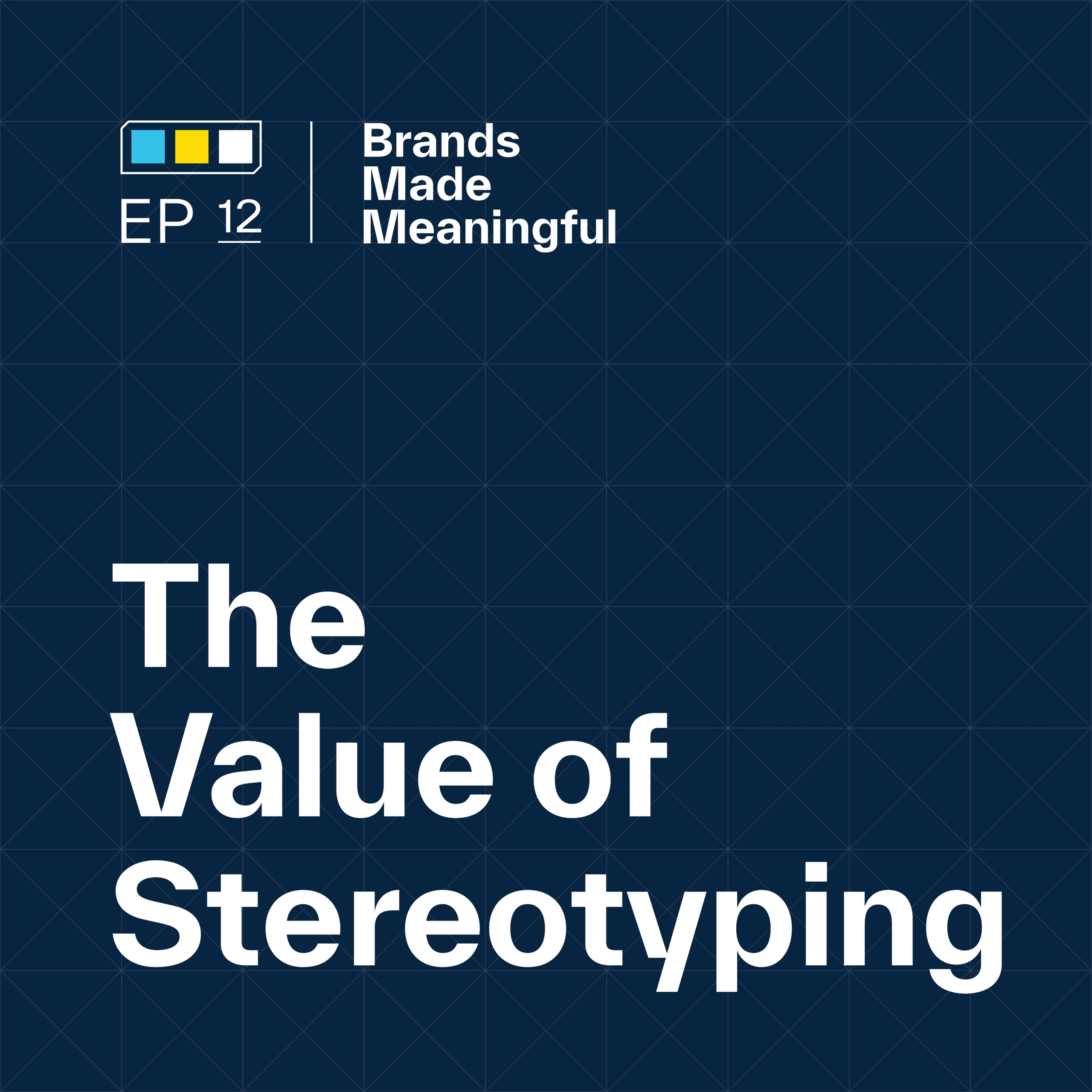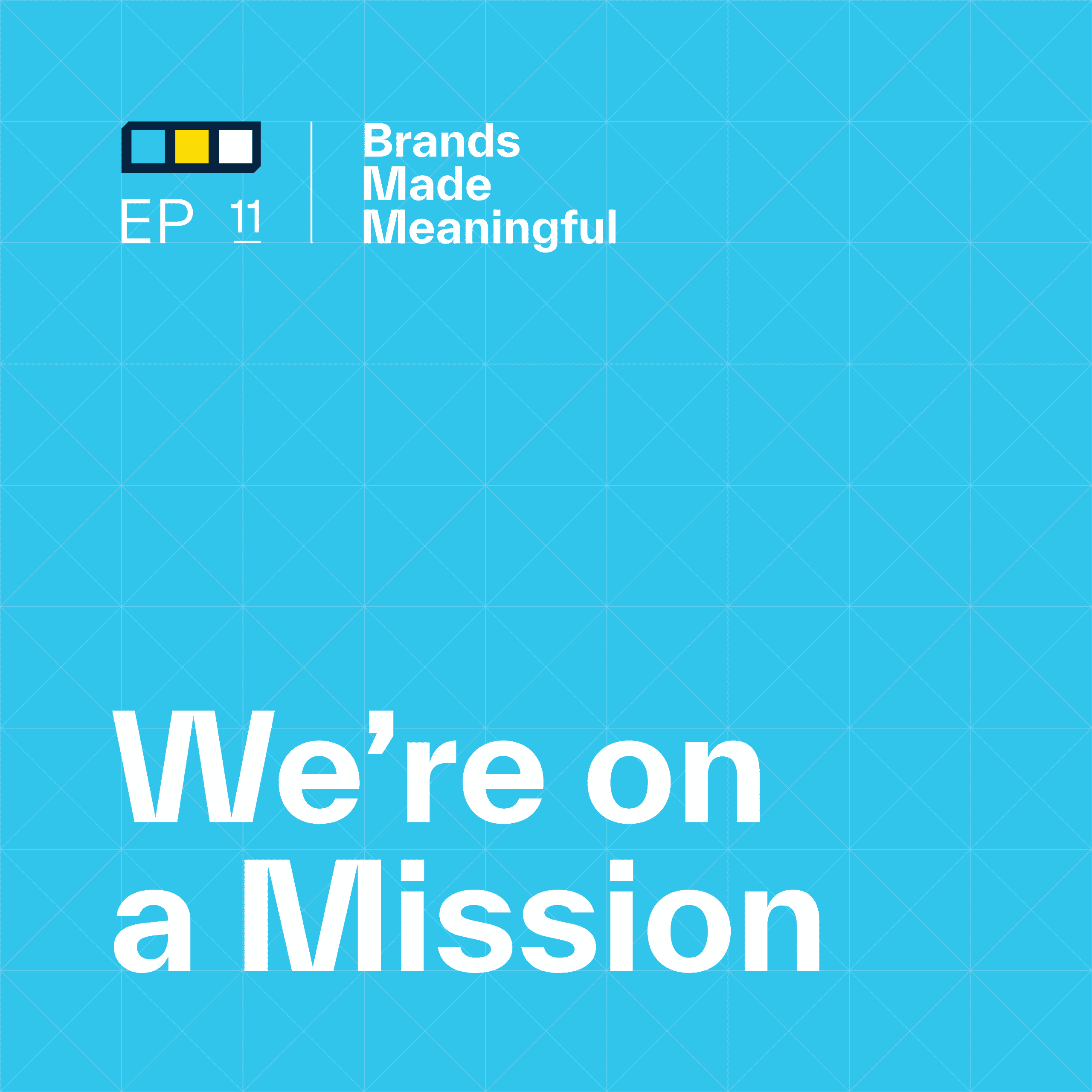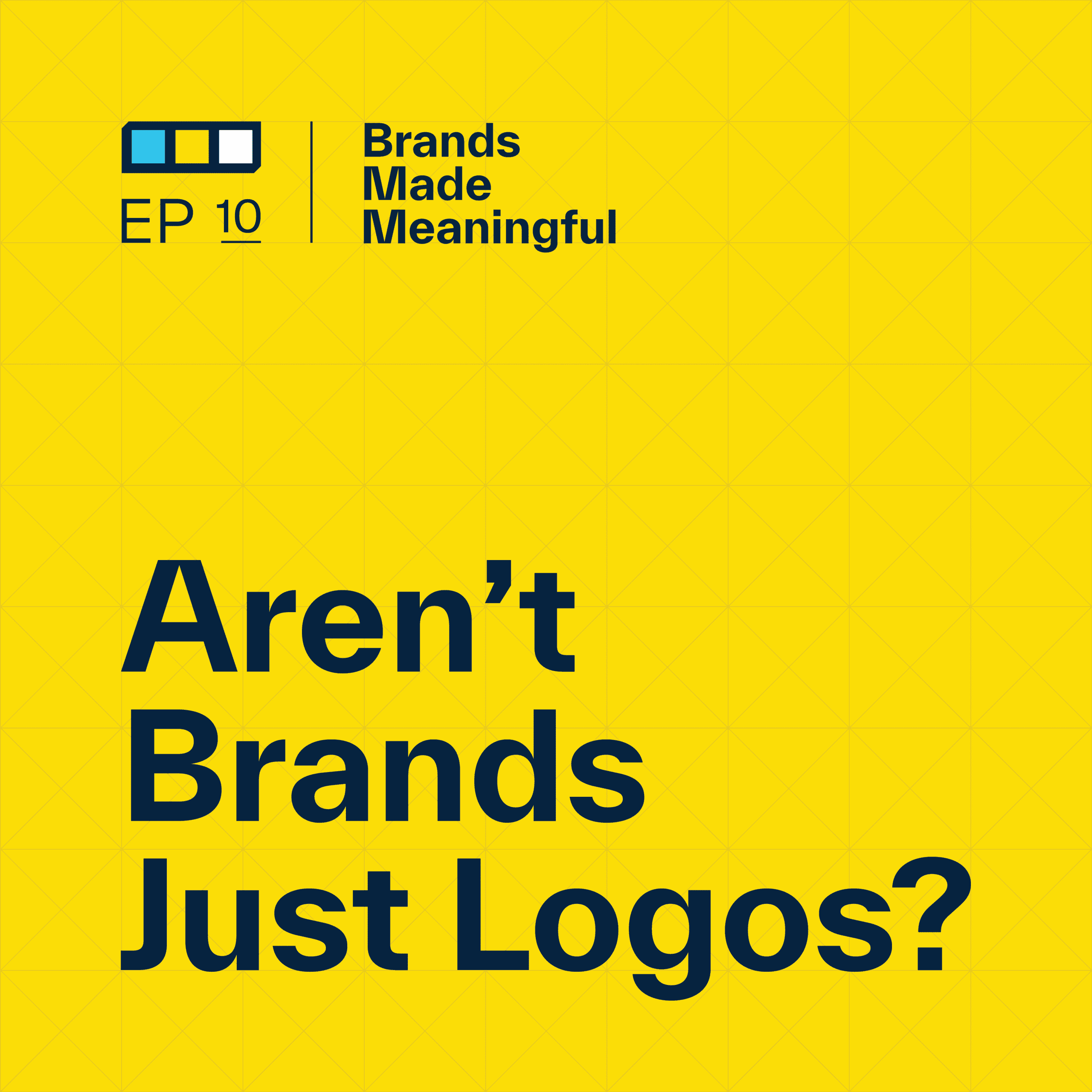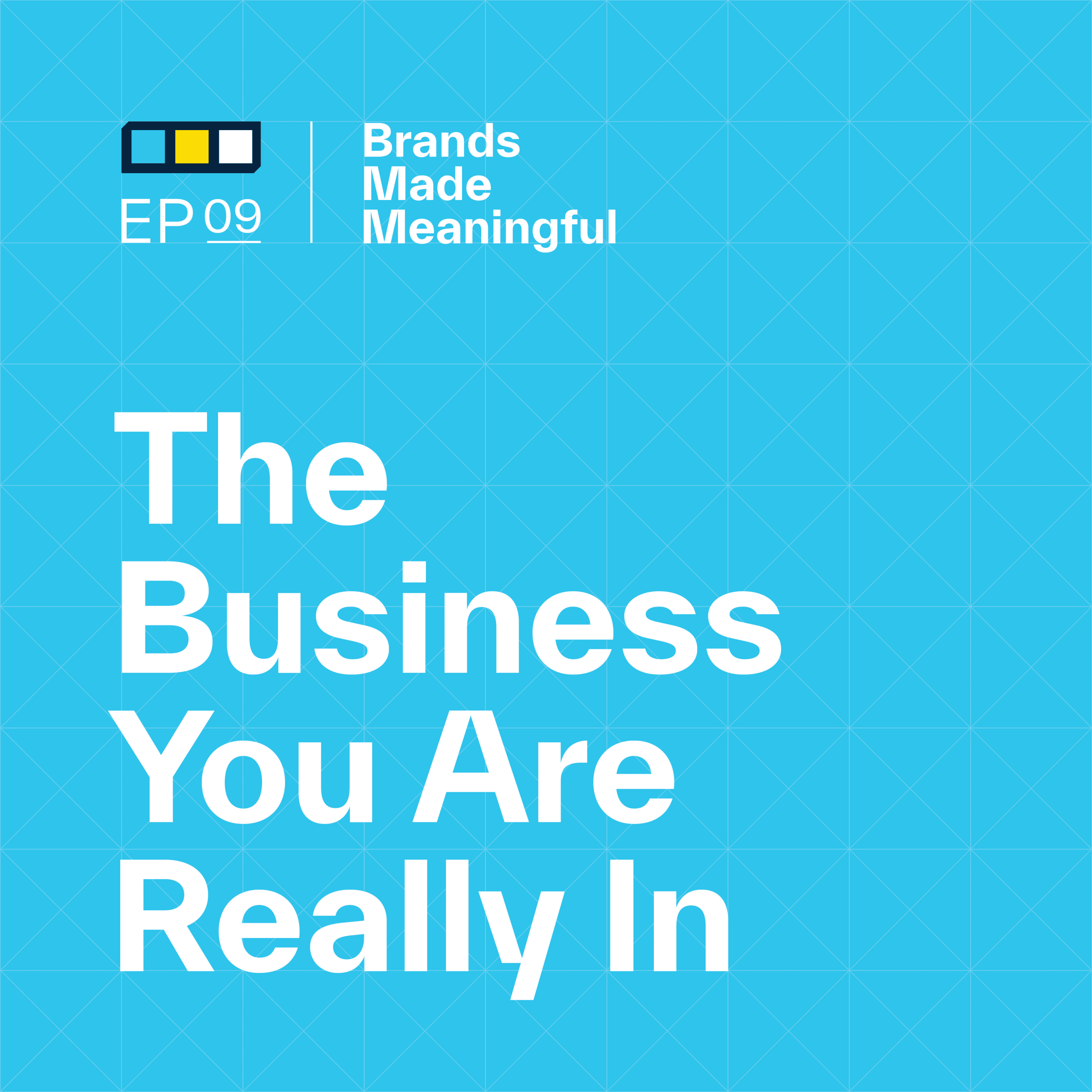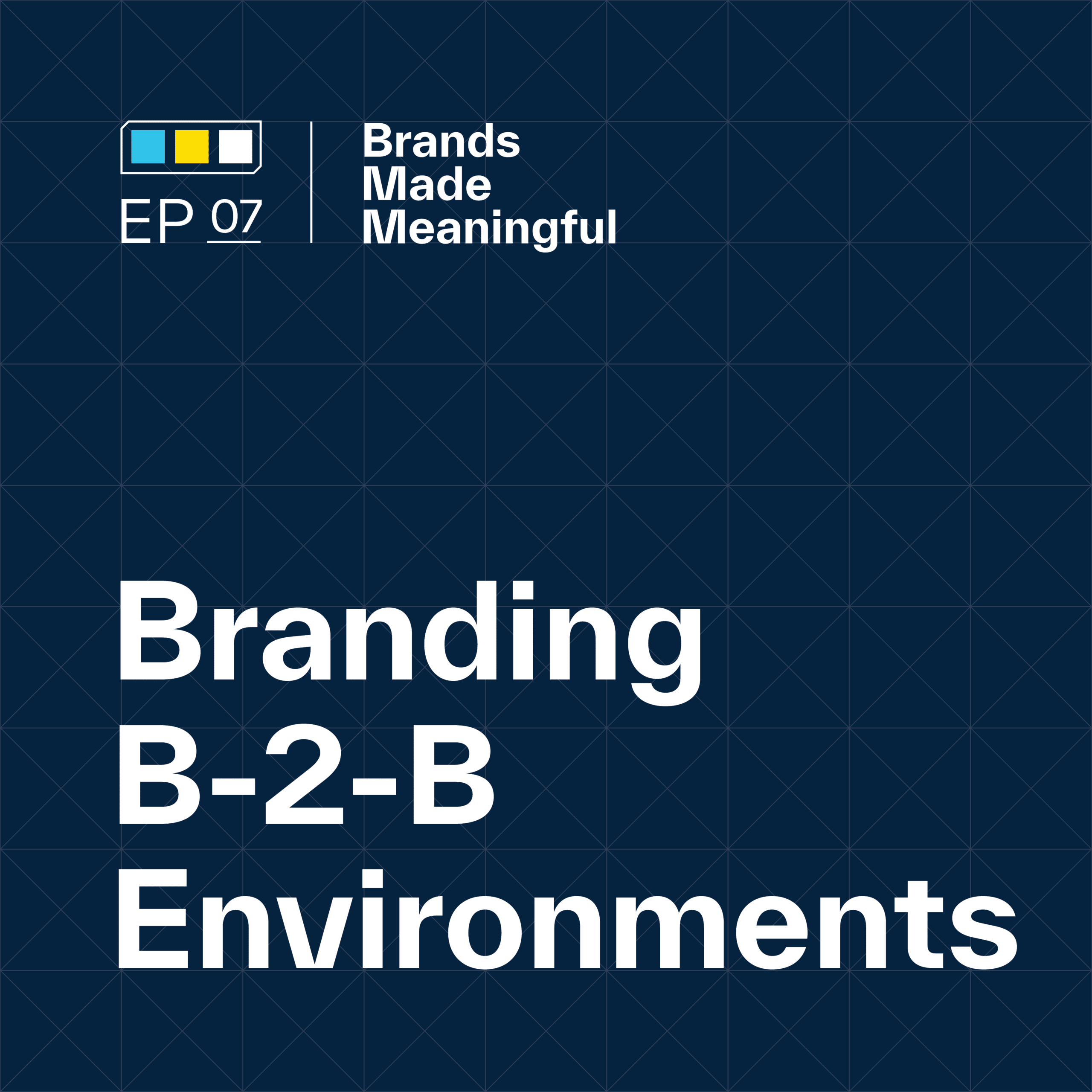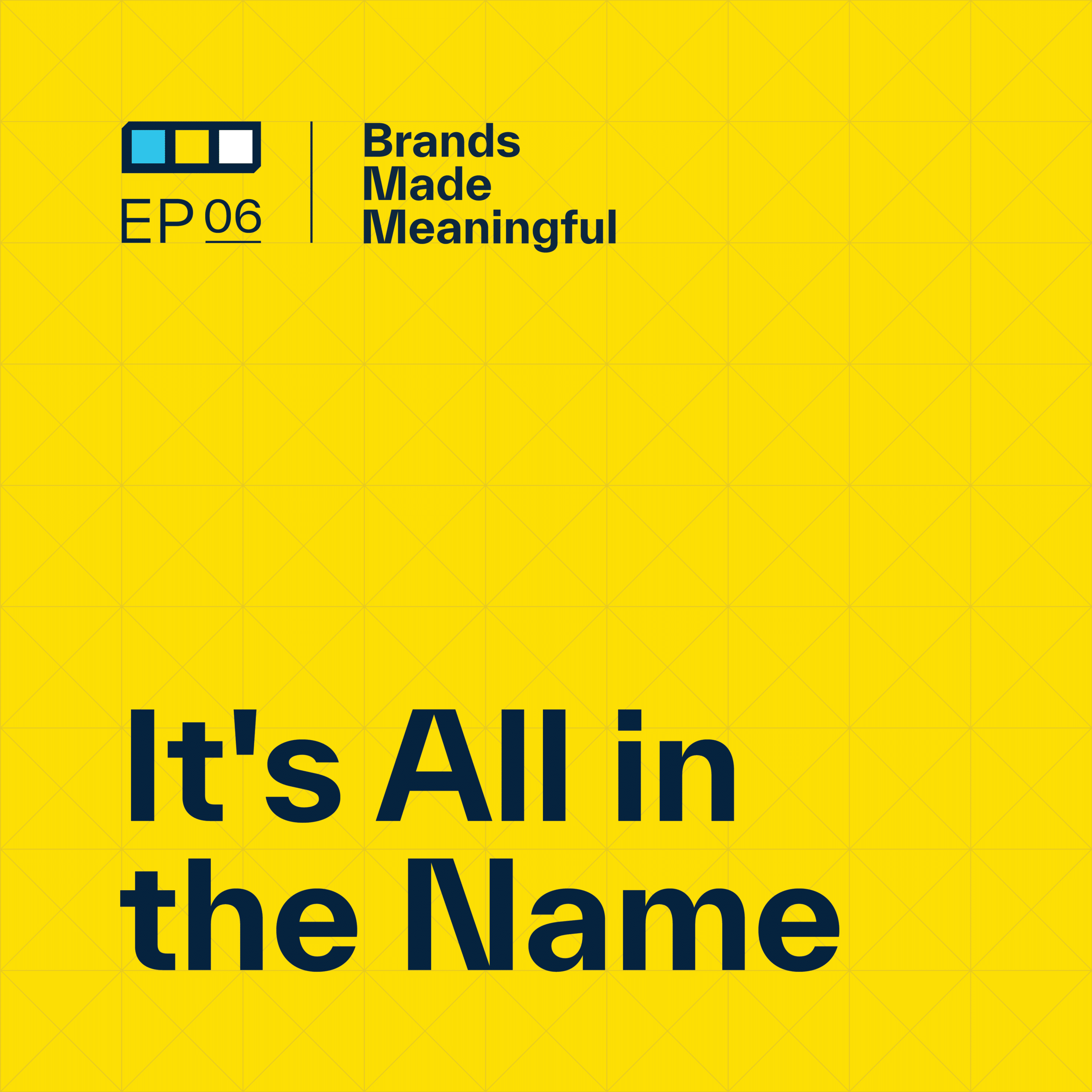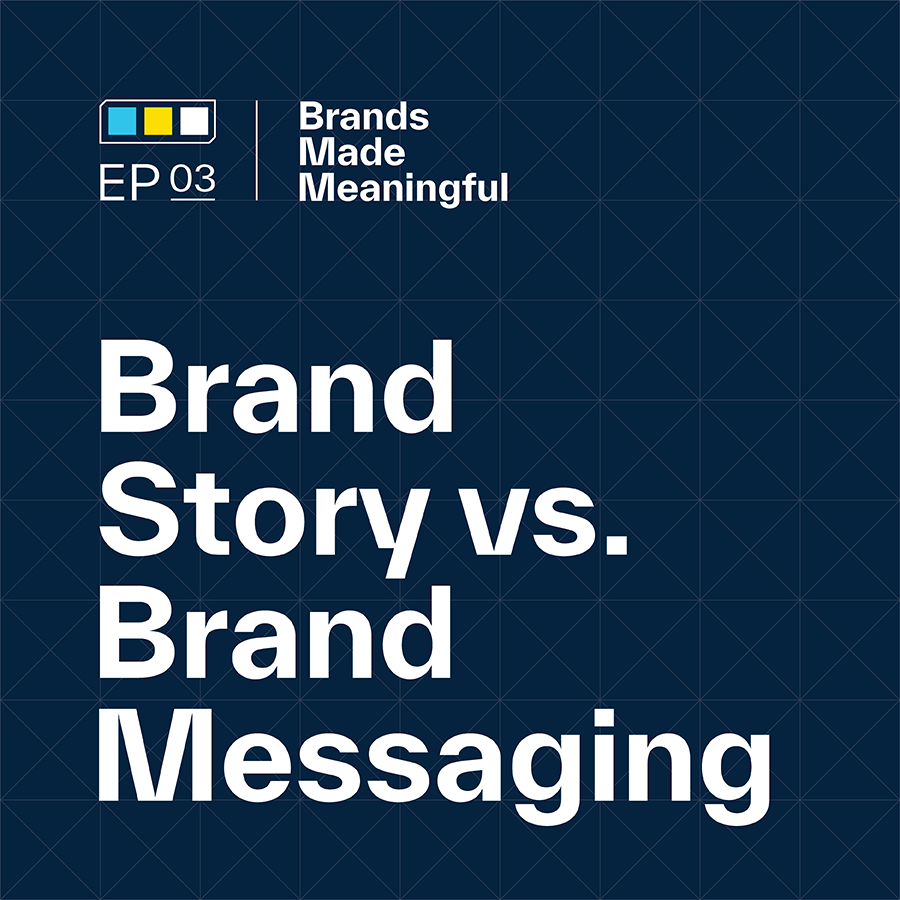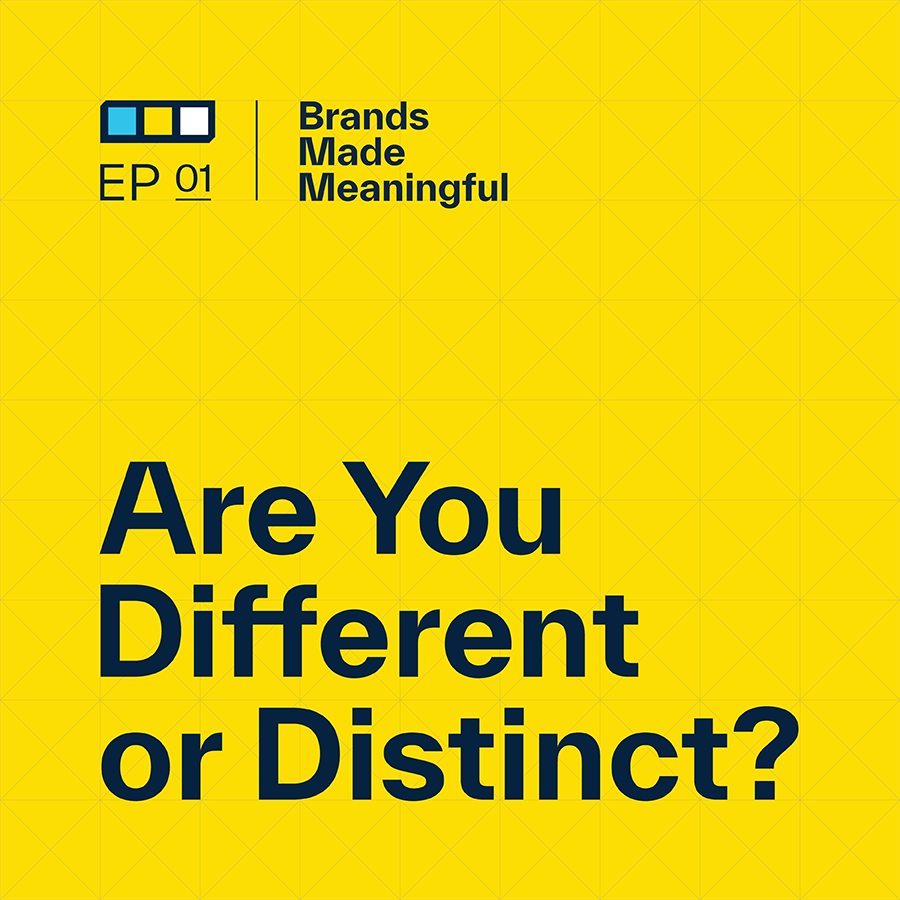EPISODE 15
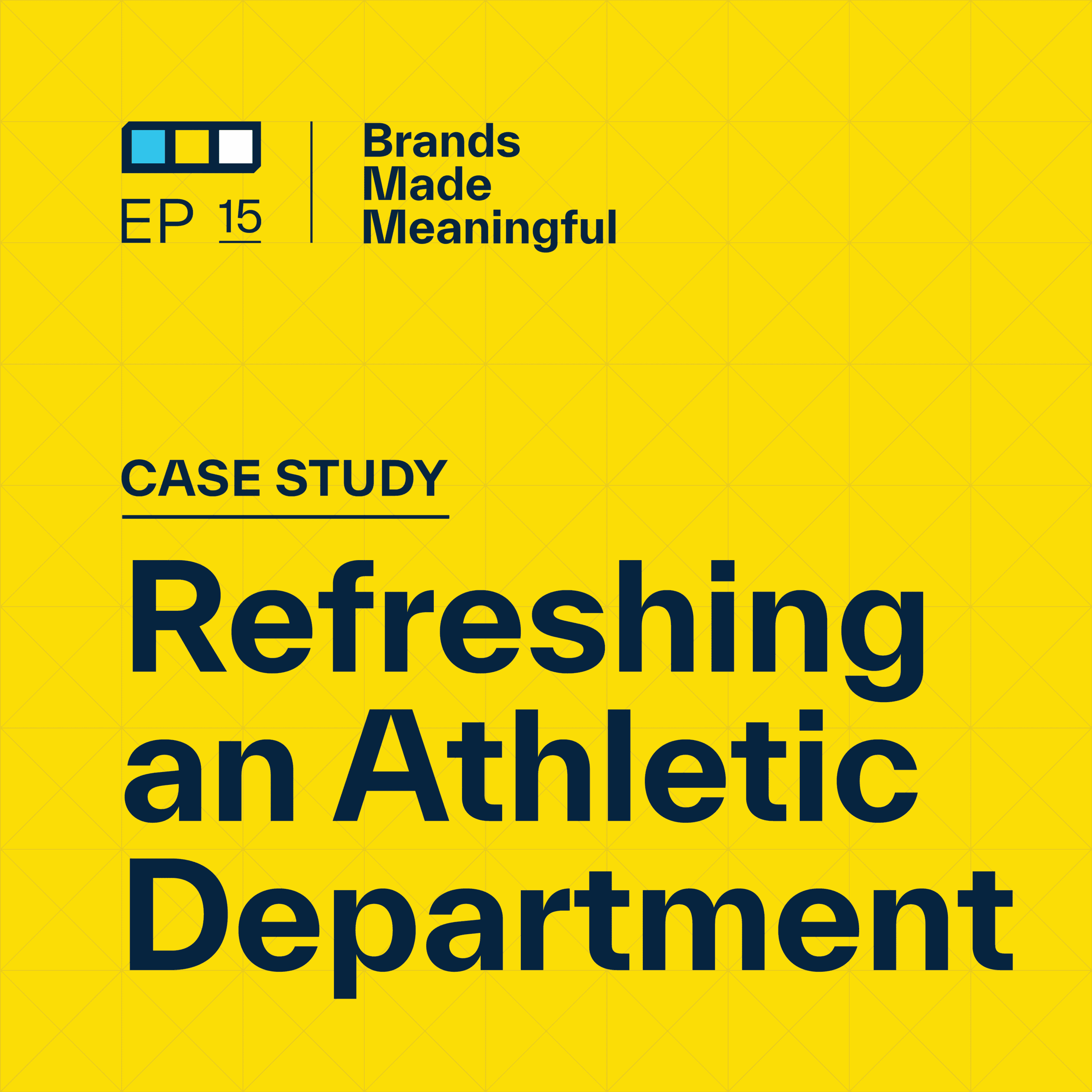
Refreshing an Athletic Department
Episode 15
Derek and Tucker discuss how to refresh an athletic department.
EPISODE TRANSCRIPTION
In today’s conversation, we’re talking about refreshing an athletic department’s brand.
Tucker
I’m looking at the title right now of this episode, and it’s going to be an interesting one. We talk about this every once in a while. We show this case study to clients all the time. And I think it’ll be interesting to dive in a little bit deeper.
Expand Full Transcript
Tucker I think what we’re going to do is more high level. We’re not going to spend 3 hours on this but try to make it within a half hour. If the conversation goes a little bit longer and if people really love it, I think that we could maybe do an in-depth either on this or something else. We have so many case studies that we could talk about for an hour-long episode or even an hour and a half if people are like, “Oh, I would love to hear the story about X”. So I think we should get into it and see what happens.
Derek In previous conversations on this podcast, on brands made meaningful, we’ve touched on components of process. We’ve dug in really deeply on individual pieces and parts of what goes into an overall brand and just thought it would hopefully be helpful and instructive illustrative to actually talk about a real client that we worked with in the athletics and sports space and talk about what that process looks like.
Tucker I don’t think this is going to be a full pull-back-the-curtain behind-the-scenes look. It’s going to be a walk through the process and the challenges. Like I said, if people would really love to hear the way behind-the-scenes look at something, we could get into that.
Derek The full process would bore people to death.
Tucker Maybe.
Derek You’d hear people unsubscribing.
Tucker You’re pretty interesting to listen to, so I don’t know. We’ll have to see.
Derek I do have a big jug of coffee next to you. So let’s talk.
Tucker Well, let’s get into it a little bit. And today we’re talking about a specific client. We’re talking about NYT, New York.
Derek Institute of Technology.
Tucker Normally, on this podcast, we don’t mention clients’ names. I don’t know if that’s on purpose or we just don’t feel like it. But normally we don’t get into a specific client. Today we are using just a little bit of a real-world example. So let’s start on a totally high level. What was the challenge that NYT had?
Derek What two challenges? The first and foremost was that the academic institution, the University, New York Institute of Technology, was finishing its own rebrand. And so on the heels of the academic brand having a new, fresh, revitalized, more contemporary identity and brand that was being created for them, it became clear to the athletic director and the creative director within the school’s athletic department that their own branding needed to be updated also. Then they started looking at their own identity, their own brand and their own logo for the athletic department, which is a bear. They’re the Bears. They go by NYIT or New York Tech or even Tech or the Bears. But the Bear logo slash mascot had been relatively highly criticized, mostly in part because it had outlived its visual esthetic lifespan. It was tired. It was old.
Tucker They used to call it the meatball, right?
Derek They describe the bear head. There were a variety of bear configurations, one of them being just the bear’s head. And one of the overwhelming surveyed sentiments referred to it as The Meatball.
Tucker It was great. And so when we first started talking to them, you said the athletic director a little bit. So let’s talk about that really quickly. And we don’t have to get into this too far, but how did they reach out? How did all those things happen just for people to understand how that starts?
Derek In this specific case, we received an RFP – a request for proposal. So a standardized, I believe it was about a 12-page document that outlined what they were looking for, gave us a little bit of background, and then requested an estimate or a bid and a proposal along with a presentation of our capabilities. I’m assuming that that went out to several people. I did find out that that RFP originally went to a colleague of ours and they couldn’t do it for timing or a variety of reasons. And then they referred that to us and it was forwarded on to us. And then that led to an initial overview conversation with, at that time, the potential client to understand at a high level what the objectives were, what they were looking for, our timeline, budget, etc.
Tucker So started the project, kicked it off. The first step in our process discovery. Let’s get into at least what you think of the high level, what you found in discovery, that really stands out.
Derek For me, this was interesting. One of the high-level objectives was that this identity development and this brand creation had to happen in concert and be complementary to what was going on with the overall academic brand.
Tucker We have a lot of projects like that, right? Not the academics, but in general we have come in here as a brand that needs to be built. It needs to be supportive to the master brand or the primary brand. So that’s not a new thing, right? But it’s different because the idea of an athletic brand, athletic departments have a very different look and feel to them, an esthetic than an academic brand. Very different.
Derek One of the really interesting things in having a conversation with them was understanding the role that athletic branding has in recruiting, not just recruiting student athletes to come play for them but also just academic students.
Tucker Absolutely. The fans. Fans, yeah.
Derek The fans want to go to a school where for them it’s important to have sports and athletics to be part of, to be involved in, to be part of the lifestyle of you going through school. It also turns out to be really important to alumni donors. But it was really interesting to understand the customer and the target audience and that the target audience wasn’t just or isn’t just like in a retail brand, the consumer or the buyer, it’s the potential athlete. It might be the parents of the potential student. It ends up being a brand that these people wear in an incredible quantity of executions around spirit-wearing – T-shirts and jerseys and all over the place. But that brand becomes more of the school. Interestingly, the athletic brand becomes the primary face of the school’s brand. And people think of New York Tech as the Bears more than they think about necessarily the academic institution.
Tucker So if you think of NYT, the academic institution, and then you think of the NYT athletic department, we think of them as sister brands, right? They’re related and they absolutely live in the same ecosystem, but they are not sub to each other. Whereas, to your point, if the athletic department brand were to be a sub, it’d be interesting to say you’re subbrand, but you actually have the most impression.
Derek Visibility.
Tucker Across all your audiences because that’s what people wear, that’s what people see, that’s what people do. Whereas the academic brand is far less external facing. So we went in, talked about all this other stuff. We went, okay, there you go. These are the objectives. Here’s the lay of the land. Here’s how it’s used right now. This is what people think of it. First of all, they think of it as a meatball. And then moving forward. What about competitive research? Do you look at other schools talking about how they use it, how they find success and confidence in their own brand?
Derek We did. We went in-depth within the athletic conference, the specific conference that this school is in. They’re a division two school. We looked at a lot of the other schools that had been identified as potential competition, not only for student athletes, but also for academic students – for high school graduates that are considering which college to go to and the colleges that have the majors that they’re interested in and the size and the lifestyle that fit them. We looked at all of the schools that they identified that they compete with academically in addition to athletically. And then we looked at those athletic department brands.
Tucker So then get all the discovery wrapped in a good bow, understanding where we’re at, where everyone else is at, as in competition. How does that shape the perception moving forward?
Derek The perception at the time was that, in their words, they were not being taken seriously. Our identity, our brand, our logo, the meatball, is actually preventing us from having the type of perception that we believe truly represents us.
Tucker To have athletes, either current or future athletes go, Yeah, I want to go play for them. I want to go to NYT and become a Bear. But at the time people didn’t think of it seriously. It’s more that they consider themselves a laughing stock about the way they looked. It’s just as simple as we need to refresh the way we look.
Derek I don’t know that they considered themselves a laughing stock.
Tucker That’s a little harsh.
Derek But they had absolutely identified that they had an opportunity to be future forward thinking and looking for something that was much more contemporary, that honored the past. They were still going to be the Bears – the Bears are never going away. That was complementary to the sister brand of the institution brand, but also set them up for hopefully a decade or two going forward graphically, esthetically and to support the perception that they desired for their brand.
Tucker And I think it’s interesting, we have a lot of team brands that we work with where they say we want to honor the past but we want to look forward. And a lot of people think of that to be the biggest challenge. When you refresh a visual identity, it is to honor the past without sacrificing the future. And so doing it for them meant honoring the past in the eyes of the fans and the in the eyes of the leadership. And then it’s also building that future esthetic so that future players love playing there.
Derek Absolutely. A couple of those perception words, a couple of attributes came through that they wanted to maintain. One was to continue to be fierce with all criticisms aside of the old bear. It was fierce. It’s not soft. It’s not a teddy bear. And they wanted to make sure that while we became contemporary and forward-thinking that we maintained an attitude.
Tucker It’s athletic. I mean, that’s super popular to say need an athletic brand. How do we take this older athletic brand? At the time, this was super athletic, right? Had that same esthetic – it’s exactly what they wanted. And moving forward, they go what we want, what we used to have in the feel and the look and the perception. But now it’s a different day.
Derek Yep.
Tucker So that’s all just fine. You understand where you’re going. You’re kind of like, okay, so this is what we need to be. This is how we need to create it. What about the next step? What about the align visually? What were the big things that popped out?
Derek A couple of pieces of the align were really important. One was the color palette. The color palette needed to be really strongly tied to the university’s color palette, which was basically a shade of navy and a shade of gold. In the end, the color palette that we can talk about when we got into the creative portion of it became a little bit more vibrant, a little less institutional, and a little bit more athletic. It’s a little bit but still very, very complementary. And we went through rounds of processes of putting Pantone colors next to each other and figuring out what that proper relationship was. But we could talk about that along with their Under Armor partnership. But the key for alignment was figuring out an esthetic creative direction for the bear that reflected the potential for timelessness to make sure it felt connected to the past, maintained an aggressive fierceness like we talked about, something that was representative of the momentous nature of sports and being part of a team and being a fan of a team and belonging, but also to make sure that we were reflecting an organization and an institution and an athletic department that was very respected, had a history of success, a long history of the years and years that they’ve been around and been part of New York in the Northeast, and to then to bring that out in a creative direction.
Tucker So we’re looking at the mood board right now, and there’s tennis shoes on there. There’s a ticket on there, there’s stitching on there. There’s a very athletic feel to it. But using other brands from the college setting doesn’t mean that we’re going to copy these brands. But it’s interesting that the selection for creative direction was to say, hey, these guys are doing it in a great way. We’ll take note from them, not necessarily copy them, but to say these guys are doing great. I see you have the Texas Longhorns on there. But to say there’s this college brand, there’s a college athletic brand that’s doing it in a great way. Their fans cherish them. They have a great history, but yet they don’t look stale.
Derek Right.
Tucker How do we use that as inspiration to say they’re doing it right, let’s do it our own way. But right.
Derek What we’re looking at here is the final mood board. We presented it in three different ways that this could influence where the creative would go. And what this one ended up with were pieces and parts of other identities, of other bears, of bear poses, to try to hone in on what that right level of fierceness was. I’m looking at props and scraps and little pieces of imagery, of poses, of expression that then helped us go okay, now this is the right direction. Should it be a full bear or just a bear head or both? Should the bear be growling, mouth closed, yawning, teeth? How sharp a teeth? What’s the level? And so this was the kick off of that exploration. If we were going to go, like we often talk about here, is the graphic and the visual direction. Should it be mild, medium or spicy? This helped us determine what that right level of heat needed to be and set us in the right direction for creative.
Tucker So let’s move on to the creative. Talk a little bit about the final solution. And if you’re wondering what the final solution looks like, go to our website. We’ll put the link in the description of the podcast. But we have this up on our website. It’s the visual case study of it with a little bit about what happened to remind you, but then should have all the references there.
Derek There were a couple of parameters and a couple of objectives that were worth thinking about while we were into designing the bear and exploring the bear, the bear’s expressions, and the pose we were thinking about. And this goes back to the objectives that we had with the client. It was that the old bear was really difficult to reproduce, to produce in stitching, especially when it got small. It was hard to embroider. They had to modify it to make sure that it didn’t lose its detail and character. So we’re thinking about just the function of making sure that this is easily producible. We’re also starting now to look ahead towards 17 sports, men’s and women’s sports that all have jerseys – baseball, softball, lacrosse – and all of the various types of fabrics and materials that this needs to be executed on. So we’re thinking ahead to that, and we’re taking into consideration the color. And the interesting thing about the color was that in addition to being respectful to the overall university’s color of navy and gold, we’re also working with Under Armor, who New York Tech works directly with to produce all of their athletic team apparel. And Under Armor has their own catalog of colors that are existing. And so we had to figure out what colors we could pull from Under Armor’s library to get as close as possible so that we weren’t adding the extra expense to the athletic department and having to come up with a custom color. And luckily for us, Under Armor, had such a vast library, we were able to.
Tucker And they’re getting bigger and bigger every day. But I think it’s an interesting challenge to say how do we fit this new brand within what’s possible for them? Because, like you said, it’s a Division two school. I know that they make custom stuff for a lot of schools, but that’s not necessarily an option for every school that we deal with and work with. But it’s a challenge that most people probably wouldn’t think of right off the bat.
Derek I think a good a good designer or a good creative department, as much as they’re all in on creating this specific icon, symbol, type mark, they’re also always thinking a couple of steps ahead. They’re always looking into the future and looking for that perfect balance of the form that gives them the brand and the expression and the perception that we’re looking for, but is also functional. Usable.
Tucker And I think that that goes into when you talk about all the sports that they do. When we look at baseball or we do any of the other, and they have lots of sports in their catalog, where then you come back and go, all right, this has to be applied to all the sports that they have. It also needs to be able to be applied to spirit wear and all those other things that the fans enjoy and use and rep. And when we look at all the different applications, that’s a part of it, right? That’s about the color. How does this work when you put it into t-shirts? How does this work when you put it into jerseys? What does it look like for home and away jerseys?
Derek What’s it look like on Instagram?
Tucker Exactly. How does it look when people play it out digitally and what does it look like on their website? So I think it’s interesting to say the exploration goes one layer deep, just like every other brand we work with. But then when we talk about team-specific sports, there are a lot more things that it needs to be applied to that need to be thought of right away.
Derek When you get to the team sports and the jerseys, women’s uniforms are designed and cut and shaped differently than men’s uniforms. You don’t have locations on sleeveless jerseys that you have on sleeved jerseys. Some sports wear shorts, some wear pants and all manner in between. So you figure out a set of guidelines to say, at a minimum, we need a bear head, we need your jersey number, and then we need, depending on home or away, to decide if at home we’re just going to be Tech. And on the road we’re going to be New York Tech. And then have a third layer that’s NYT. And then, in some cases, to say we’re going to be the Bears. Think about your favorite professional baseball team. They’ve got a rotation of two, three, four, sometimes even more variations on home and away jerseys and all the bases had to be covered.
Tucker And athletes love that. And most of the athletes that we deal with love the variations. They have navy blue, they have white, they have gold, they have gray. They have all these different jerseys. I’m sure at some point there’s athletes that go, oh, we get to wear the gold today, let’s go. This is awesome. But some of them are like, I hate the gold. This is the worst. So I think giving people the ability to change and to adapt with time is really important for teams specifically.
Derek The other fun component of the creative phase within all of this was fine tuning the actual NYIT and New York Tech type mark. We didn’t redesign it. We evolved it. It was a really, I think in the end, a really nice evolution of what already existed, but with a typeface that was a little bit more contemporary and a little bit more aggressive.
Tucker So the whole brand has been built and now we need to apply it. We talked about applying it to jerseys, but that was really a part of the discovery of how this gets applied to jerseys. You have to solve that before you get to this phase. But what happens in this amplification of it? There’s photography with all these different athletes and all the different applications with hats and whatnot. Just get into that a little bit.
Derek With this specific customer, New York Tech has an in-house creative department. And so we worked in concert with them really closely to provide them with what we would refer to as the brand style, the brand style guidelines.
Tucker Or the brand book.
Derek The brand book. And so we made sure that all of the logos and the variations were saved. It ends up being dozens and dozens of types of files and file sizes and color configurations, along with all kinds of example applications to show them how it could roll out. And then they took that and executed the bear logos on the floor of hardwood courts. So it’s in the form of the basketball courts. It’s on the grass, it’s on the fields. It’s on the baseball diamond. It’s on the walls of the stadium, in addition to all of the merchandise, all of the swag. So we set that up. We would test it out, make sure that it would maintain its integrity at minimum sizes. But while we’d do that execution for some of our clients, this specific client had that capability internally. So we worked with them to give them all of the tools that they needed, and then they executed most of it with maybe a little consultation from us here and there.
Tucker That’s not uncommon for us to have an internal creative team where they say, okay, we’re going to go out, we’re going to bring you guys in and you’re going to help us develop a brand because that’s our specialty. To come in, develop a brand, do it meaningfully, and do all the things that need to be thought of in a way that develops it for a long time and then give back the guidelines to say, now, if you need us, we can absolutely help and guide you through how this gets used, and we surely can apply it if you want us to. But it’s not uncommon for a lot of organizations to come back to us and go, okay, we have all the people on our team to do this. We just need you to do the heavy lifting with the strategy of the design and the brand. Then come and give us a nice, good direction to say this is how you move forward with it.
Derek Absolutely. And backing up a couple of steps or elaborating on the behind-the-scenes of that a little bit, we oftentimes will get asked, well, why didn’t they do it? They have an internal creative team. Why didn’t they take on the rebrand of the identity themselves? Oftentimes, and especially with the case of the New York Tech Group, they basically realized they were too close to it. They probably absolutely had the capabilities, had they had the time and the freedom and the budget to do it themselves. But when you’re in it and you’re living it and you’re living with the meatball, you have your own perceptions, misperceptions of what it should be and what it could be. And sometimes, like we know that here at Sussner when we’re working on our own marketing materials and messaging, it’s the cobbler’s kids metaphor. It locks you up. It’s hard to see yourself.
Tucker I think that that’s absolutely a problem that people see. So a part of it is that they’re too close to it, right? They don’t have an objective view of it. They’re very subjective because they live with it every single day. I think the other part is that they don’t do it every day. What we do is go in and remake brands, whether that’s redeveloping it, making it from scratch, or helping them move forward in some other way, whereas they’re dealing with the brand every day, helping it move forward day to day. Whereas something that we do is more of a process that is done once. If done right, it’s done once, and you never have to do it again.
Derek Right. And they’re in an execution. They’re executing on that all of the time. And they’re thinking about those specific objectives and needs are not those initial sort of strategic pieces that help frame it up to create.
Tucker There’s a nuance about remaking a brand rather than working with a brand every day. The difference between a design firm and a branding firm, I would say, is that big difference.
Derek And I think of this as a brand refresh or a brand evolution. It’s not a rebrand. They’re still the Bears. They’re always going to be the Bears.
Tucker Absolutely. It’s not really new colors. What it really is is a refreshment of their visual identity and their perception. And how can we bring that to the modern times?
Derek Check out their Instagram page. You’ll see them living it. It’s pretty. It’s always a joy to help any company with a brand because that’s what we do. There’s something about being able to see it on the chests and on the jerseys and on the backs of all these athletes and fans out there in real life, living it, breathing it, and taking that brand and creating what it really means because it’s their brand. It’s not our brand.
Tucker And I think that’s kind of the best part of working with all these other brands is the passionate people that they are behind them because it is their brand and they love it and they live it and it’s great. You got me distracted. I’m looking at their Instagram right now.
Derek Unless you had any other questions on the process, I think that’s a nice overview of a rebrand using New York Tech and their athletic department’s rebrand as one example of how the process goes, not necessarily a how-to, but a recap of just some of the key highlights that come out of each of the phases that go into refreshing a brand. The things that we or any creative team should be thinking about when we work through that.
Tucker And this is a primarily visual solution. NYT didn’t need a big strategy portion. They didn’t need all of the foundational elements that we would do for most organizations.
Derek A lot of that had been completed by another partner that they worked with on the diversity brand.
Tucker This is a really easy, digestible case study to look at and go, okay, this is the evolution of something like that. I think if people think this is worth talking about or talking about other brands, we can get much more in-depth with bigger, more ambitious objectives. But I think this is a good starting off point.
Derek Perfect.
Tucker Anything else?
Derek I think that’s good for today.
Tucker That’s enough for today. See you next time.
More Episodes Like This
Reclaiming Reputation Through Brand RevitalizationEpisode 85
Derek and Tucker discuss the potential that a branding initiative can have to restore a club’s reputation.
Branding The Club with Don KovacovichEpisode 84
Don Kovacovich, GM of The Club at Golden Valley, joins Derek & Tucker to discuss the impact that rebranding has had on his club and the opportunity it presents for other clubs
Changing a Club’s Membership ModelEpisode 83
Derek and Tucker discuss key considerations and challenges when changing your club’s membership model.
Connecting a Club with its Story with Jackie CarpenterEpisode 82
Derek and Tucker are joined today by Jackie Carpenter, author of People First.
Branding a Club AnniversaryEpisode 81
Derek and Tucker discuss the unique opportunity presented by milestone and anniversary dates for private clubs.
Private Club Storytelling with Ricky L. Potts, Jr., CCMEpisode 80
Derek and Tucker have the pleasure to speak with Ricky L. Potts Jr. about how powerful storytelling can be for your club members.
Opportunity in Club Facility RenovationEpisode 79
Derek and Tucker discuss pivotal key moments in your legacy and how to transform your story through renovation.
The Evolution of Club Members with Jon LastEpisode 78
Derek and Tucker are joined by Jon Last from Sports & Leisure Research Group to discuss the evolution of club members.
Member Branding vs. Product BrandingEpisode 77
Derek and Tucker discuss the challenges their client's have moved through when approaching differing styles of branding.
The Role of a Private Club's LogoEpisode 76
Derek and Tucker take a look back on private club logos they've designed over the years and explain the strategic reasons behind their choices.
Club Brand GovernanceEpisode 75
Derek and Tucker divulge the steps to evolving your brand while retaining your core values.
Seasonal Member MerchandiseEpisode 74
Derek and Tucker take a look at crafting specific merch to celebrate landmarks and special times of the year.
Who is Sussner?Episode 73
Derek and Tucker take a break from talking shop to talk about who they are and what they stand for.
Club Identities Beyond AmenitiesEpisode 72
Derek and Tucker discuss what it takes to stand out in unique ways for your club.
Little Things Mean EverythingEpisode 71
Derek and Tucker take a look at the often missed and easy to overlook.
Build Flexible Brand SystemsEpisode 70
Derek and Tucker break down the building blocks for long lasting branding.
The Club at Golden ValleyEpisode 69
Derek and Tucker take a close look at one of their recent rebrands.
When to Launch a Club RebrandEpisode 68
Derek and Tucker break down how to find the perfect timing when launching a club rebrand.
Steps to Launching a Club RebrandEpisode 67
Derek and Tucker break down the steps to take and the reasons why you should consider a club rebranding.
Brand Marketing vs. Brand DesignEpisode 66
Derek and Tucker define the line between marketing and design and how they intersect to inform one another.
Building Brand GuidelinesEpisode 65
Derek and Tucker show us how to build infrastructure guidelines to unify your brand experience across the board.
Club Identity SystemsEpisode 64
Derek and Tucker cover what Identity Systems entail and how to discern between internal and external methodologies.
Navigating Branding With a BoardEpisode 63
Derek and Tucker bring clarity to uniting your company under one cohesive vision.
Putting a Committee TogetherEpisode 62
Derek and Tucker assemble your need-to-know facts when putting together your committee.
The Guiding Principles of Private ClubsEpisode 61
Derek and Tucker go over the top ways private clubs can find the balance between pleasing old members while attracting new ones, all while making moves towards the future.
How Color Affects PerceptionEpisode 60
Derek and Tucker cover how to best convey your business with color.
Brand EcosystemsEpisode 59
Derek and Tucker break down how to craft effortless experiences when considering your brand as a whole.
6 Types of Brand TransformationEpisode 58
Derek and Tucker dive into 6 distinct types of transformations for a wide range of brands.
Tournament Branding For ClubsEpisode 57
Derek and Tucker discuss designing and delighting your club members with tailored events.
Brand Promoters & DetractorsEpisode 56
Derek and Tucker discuss how high level promoters increase your NPS and how to turn the tides on your detractors.
The Loudest Voices in the RoomEpisode 55
Derek and Tucker talk about gathering feedback while prioritizing every voice.
Determining A Primary AudienceEpisode 54
Derek and Tucker discuss if and when you should be honing in on your audience vs. casting as wide a net as possible.
Branding For ExclusivityEpisode 53
Derek and Tucker discuss the intricate process of naming your brand.
Measuring Brand SuccessEpisode 52
Derek and Tucker discuss how we measure our success in branding and a few key KPIs that help us understand our impact.
Branding For ExclusivityEpisode 51
Derek and Tucker breakdown how brands can create the perception that they are exclusive and only for a certain type of consumer.
What Makes A Brand SurprisingEpisode 50
Derek and Tucker break down the Sussner formula that we believe leads to a surprising brand.
Breathe Life Into Brand TraditionEpisode 49
Derek and Tucker discuss the intricacies and common pitfalls of branding for Private Golf Clubs.
They Key of Visual DifferentiationEpisode 48
Derek and Tucker break down the importance of differentiating your brand on a visual level.
Branding For Private GolfEpisode 47
Derek and Tucker discuss the intricacies and common pitfalls of branding for Private Golf Clubs.
Dealing With An Identity CrisisEpisode 46
Derek and Tucker breakdown how to identify and remedy a brand's identity crisis throughout thoughtful and intentional brand management.
Branding vs MarketingEpisode 45
Derek and Tucker discuss the differences between Branding and Marketing and how to make the two compliment each other.
Build Your Brand's FoundationEpisode 44
A brand's foundation is a critical element in being successful in the long-term.
Building a Constructive Branding ProcessEpisode 43
Derek and Tucker break down the steps required to build the most constructive and meaningful branding process.
What Makes a Brand Relevant?Episode 42
Relevance is a key piece of a brand's identity for creating clarity and connection.
Your Right to WinEpisode 41
Derek and Tucker discuss the “Right to Win” and the odds of your brand's success within your target market.
An Intro to Sub BrandingEpisode 40
Derek and Tucker discuss the nuances of developing sub-branding and strategies.
Conquer Branding FearsEpisode 39
Derek and Tucker dive into how to overcome the fear of change and the nature of constant refinement of your brand.
Balancing Strategy & DesignEpisode 38
Great strategy is a necessary foundation for great design—and great design brings great strategy to life.
Branding PrioritiesEpisode 37
Branding priorities are the actions and initiatives that shape or enhance a brand's identity, perception, and market position.
Invest in Your BrandEpisode 36
Investing in your brand benefits your company as a competitor in the marketplace, builds trust with customers, increases perception of quality, and drives employee engagement.
Why is Positioning Scary?Episode 35
Narrowing the brand's position is really a strategic decision to focus the brand's offerings, messaging and target audience on a specific niche or segment within the market.
What Are Brand Consultants?Episode 34
Derek and Tucker discuss the importance of hiring expertise with a wider breadth of knowledge than just visuals.
Hire for Brand FitEpisode 33
Hiring people that fit your brand is key in order to maintain brand authenticity, positive culture, and consistent messaging.
Your Brand’s Stance MattersEpisode 32
Your stance can help define your brand from a core level and make branding, hiring, and marketing not only easier, but more meaningful.
Levels of Executing a Brand RefreshEpisode 31
If you have a brand strategy in place, how do you execute it?
The Role of Features & BenefitsEpisode 30
Derek and Tucker discuss the importance of features and benefits within the context of branding, selling, and marketing your products and services.
Should You Listen To or Lead Your Customers?Episode 29
Within the challenge of any rebrand is the challenge of managing customers' perception of change.
Managing a Brand TransformationEpisode 28
Episode 28 discusses the highlights and challenges of rolling out a new brand, both internally and externally.
Living Your BrandEpisode 27
Your brand is not this shiny trophy on the shelf. It is something that you are molding every single day.
What Makes a Brand Authentic?Episode 26
Season 2 starts off with a discussion about building authentic brand experiences, both internally and externally.
Reviewing your Competition's CreativeEpisode 25
Derek and Tucker discuss the process of reviewing your competitors' creative strategy to better position your brand within the market.
Interviewing your Audience for InsightsEpisode 24
This episode details the process and benefits of interviewing your audience as part of the branding process.
Assumption ReversalEpisode 23
Derek and Tucker discuss how we change our thoughts and get into a different mindset to refine and revise our branding.
Developing vs. Amplifying a BrandEpisode 22
Another way to say it is, development is building and crafting your brand story, and amplification is then telling it.
Refreshing a Sporting Goods BrandEpisode 21
This episode shares the steps behind Sussner’s work in refining the Shock Doctor brand.
Defining PerceptionEpisode 20
Derek and Tucker discuss the positive and negative impacts of brand perception.
What is a Brand?Episode 19
Derek and Tucker discuss what defines a brand and what makes them successful.
Branding Golf Courses vs Golf ClubsEpisode 18
Derek and Tucker further hone in on golf course design.
Refreshing a Golf CourseEpisode 17
Derek and Tucker discuss the bar for golf course design – and how to push past it.
Let’s Talk Taglines Episode 16
Derek and Tucker talk taglines in today's episode.
Refreshing an Athletic DepartmentEpisode 15
Derek and Tucker sit down today to discuss what logos mean within branding.
Branding a Club Episode 14
Derek and Tucker discuss how to brainstorm branding a club.
An Intro to Internal Branding Episode 13
Derek and Tucker discuss the power behind internal branding.
The Value of Stereotyping Episode 12
Derek and Tucker sit down today to discuss the meaning of stereotyping within the branding world.
We’re on a Mission Episode 11
This episode digs into the rallying cry for the greatness your team is going to accomplish.
Aren’t Brands Just Logos? Episode 10
Derek and Tucker sit down today to discuss what logos mean within branding.
The Business You Are Really In Episode 09
Derek and Tucker sit down today to discuss how to discover what business you are really in to better understand your mission statement.
Clarity of Vision Episode 08
Derek and Tucker discuss the importance of looking ahead towards the big picture to better hone the purpose behind what we do in the now.
Branding B-2-B Environments Episode 07
Derek and Tucker discuss the Branding of Spaces.
It’s All in the Name Episode 06
Derek and Tucker discuss what a name can say - and not - about your company.
Delving Into Branding Data Episode 05
Derek and Tucker jump into the discovery phase of branding before it hits the drawing board.
Content Made Meaningful Episode 04
Today Derek and Tucker discuss the concepts within content and its common misconceptions such as the phrase "Content is King."
Brand Story vs. Brand Messaging Episode 03
Your story matters.
Visuals That Take The Cake Episode 02
Derek and Tucker sit down to discuss visual impact and what that could mean for your brand.
Are You Different or Distinct? Episode 01
It's not about being the only option, it's about being the right option. Join Derek and Tucker as they discuss Differentiation & Distinction.



